Zooarch midterm 2: Mammals and Herps
1/103
There's no tags or description
Looks like no tags are added yet.
Name | Mastery | Learn | Test | Matching | Spaced |
|---|
No study sessions yet.
104 Terms
What are the families in the order Rodentia
Aplodontidae (mountain beaver)
Sciuridae (squirrels, chipmunk, marmots, etc.)
Castoridae (beavers (reg))
Heteromyidae (k-rats, mices, pocket mice, etc.)
Geomyidae (pocket gopher)
Dipodidae (jumping mice)
Cricetidae (cricetid rats and mice)
Erethizontidae (porcupines)
What order to Pika, Rabbits, and Hares belong to?
Lygomorpha
What families are included in the order Soricomorpha
Soricidae (shrews)
Talpidae (moles)
What order do bats belong to?
Chiroptera
What Families belong to the order Carnivora?
Felidae (cats)
Canidae (dogs)
Ursidae (bears)
Mustelidae (weasels, otters, badgers, etc.)
Mephitidae (skunks and stink badgers)
Procyonidae (raccoons, ring tails, coati, etc.)
What Families belong to the Order Artiodactyl?
Tayassuidae (peccaries)
Cervidae (deer)
Antiliocapridae (pronghorns)
Bovidae (sheep, goat, bison, etc)
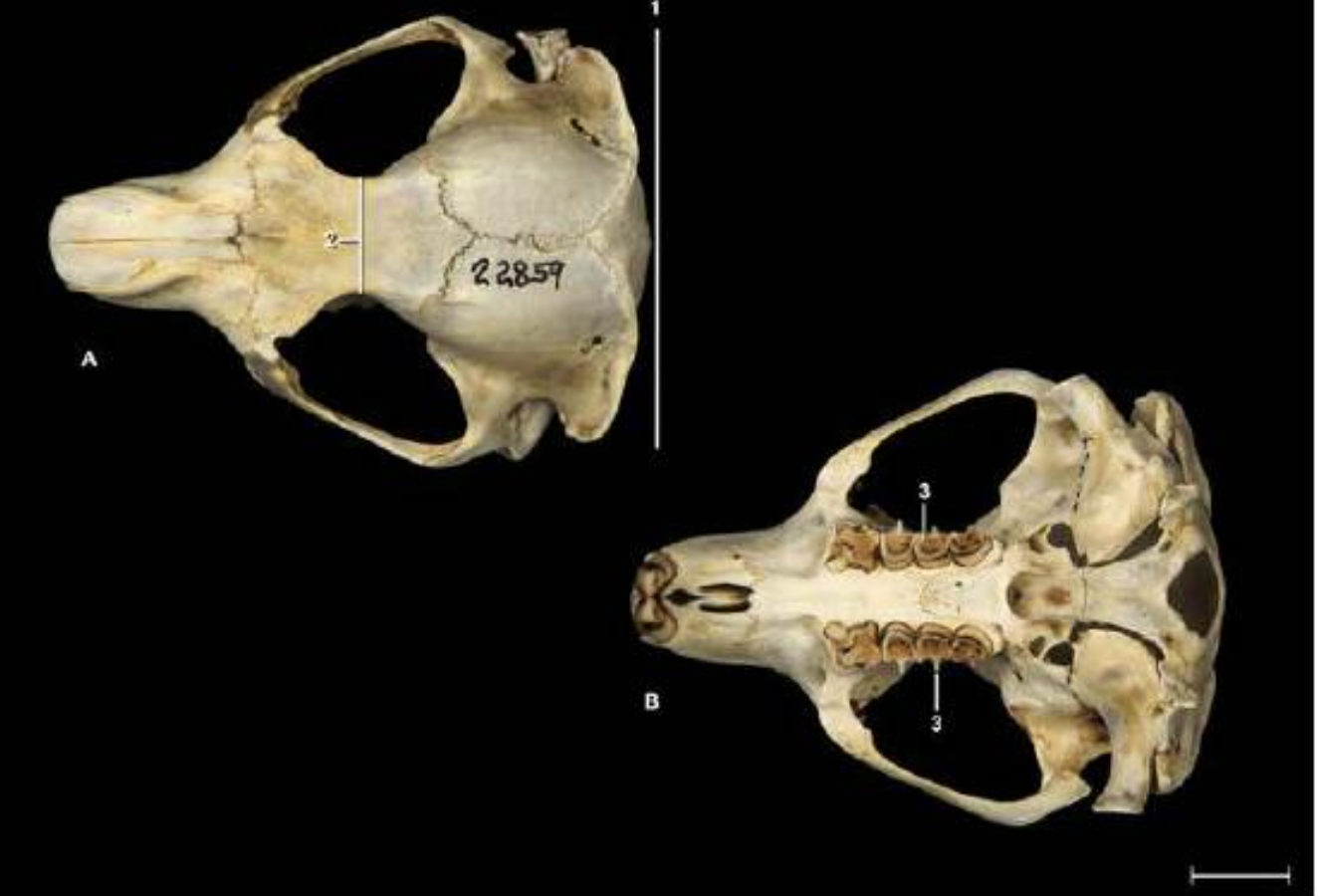
List the Order, Family, common name, and diagnostic osteological features
Rodentia, Aplodontiidae, Mountain beaver/Sewelle
osteological notes
Wedge shaped cranium
narrow interorbital breadth
“D-shaped” cheek teeth
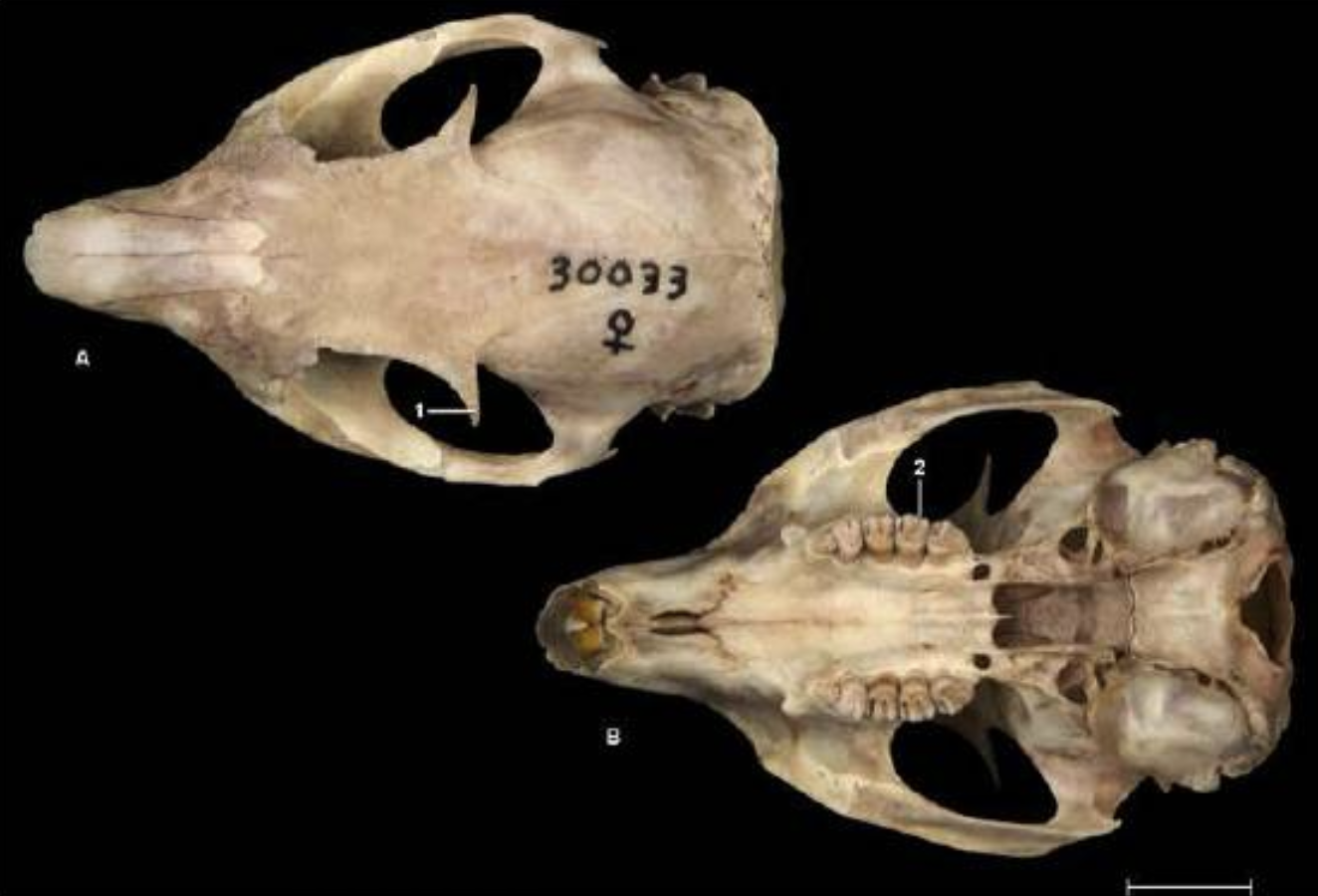
List the Order, Family, common name, and diagnostic osteological features
Rodentia, Sciuridae, squirrels, chipmunks, etc.
Osteological features:
Prominent post-orbital processes (extending laterally)
“frog feet” cheek teeth
Multi-rooted teeth

List the Order, Family, common name, and diagnostic osteological features
Rodentia, Castoridae, Beaver
Osteological features:
Large in size
Small laterally paired infrorbtial foramina (2)
Massive incisors
Lophodont cheek teeth
similar to ungulate teeth
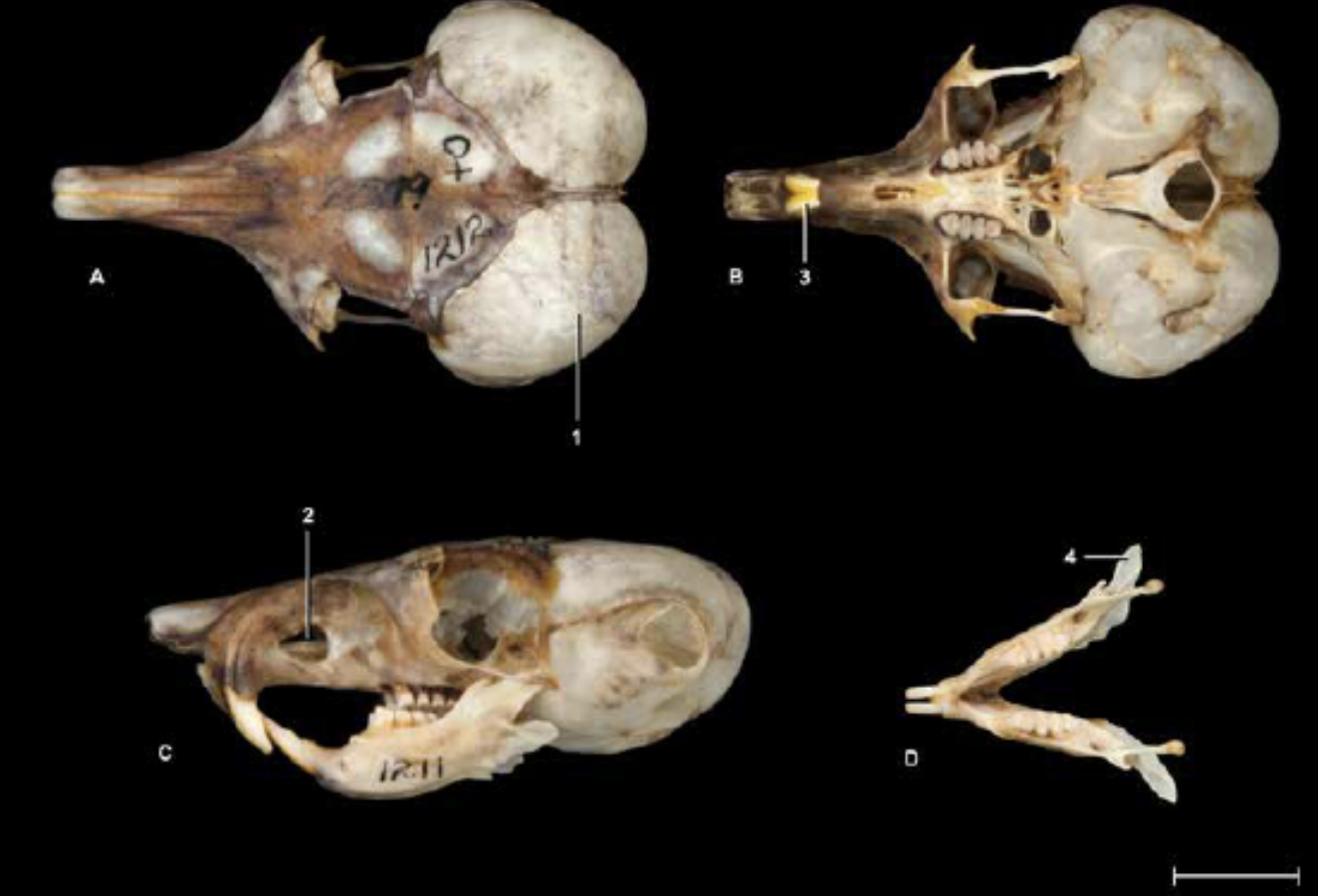
List the Order, Family, common name, and diagnostic osteological features
Rodentia, Heteromyidae, k-rats, mice, and pcoket mice
Osteological features:
Large auditory bulba
Transverse infraorbital foramina (2)
Grooved upper incisors
Lateral flare of angular process (4)
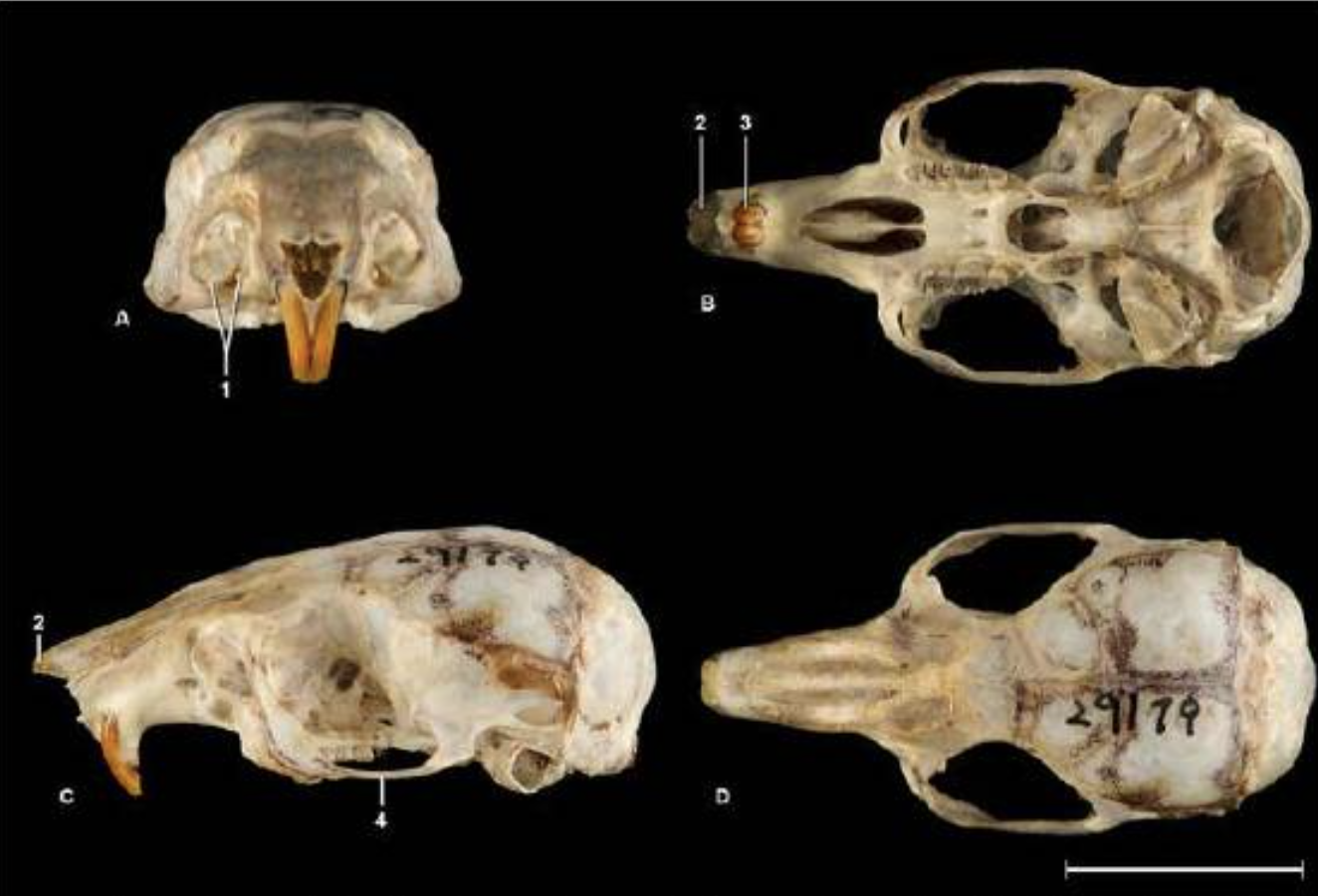
List the Order, Family, common name, and diagnostic osteological features
Rodentia, Dipodidae, jumping mice
Osteological Features:
Paired anterior facing infraorbital foramina (1)
Nasalis extends past premaxilla anteriorly
grooved maxillary incisors
low zygomatic, extending below palate
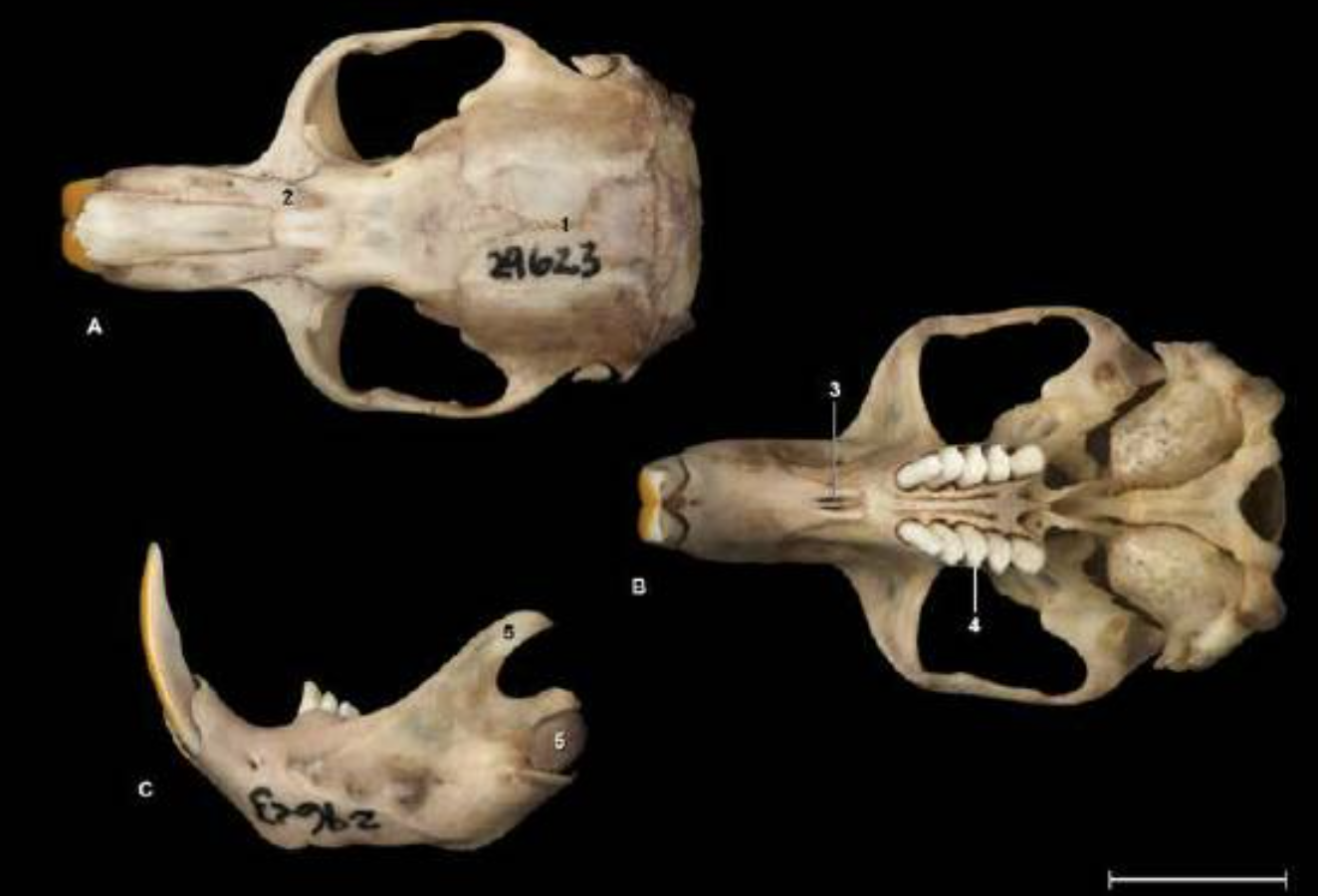
List the Order, Family, common name, and diagnostic osteological features
Rodentia, Geomyidae, pocket gopher
Osteological features:
Temporal sections connect midsagittally and comprise the majority of brain case
Premaxilla extends past nasals posteriorly (2)
Small paired incisive foramina (3)
Posterior orientation of cheek teeth
Robust coronoid process
bulbous condyloid + angular processes
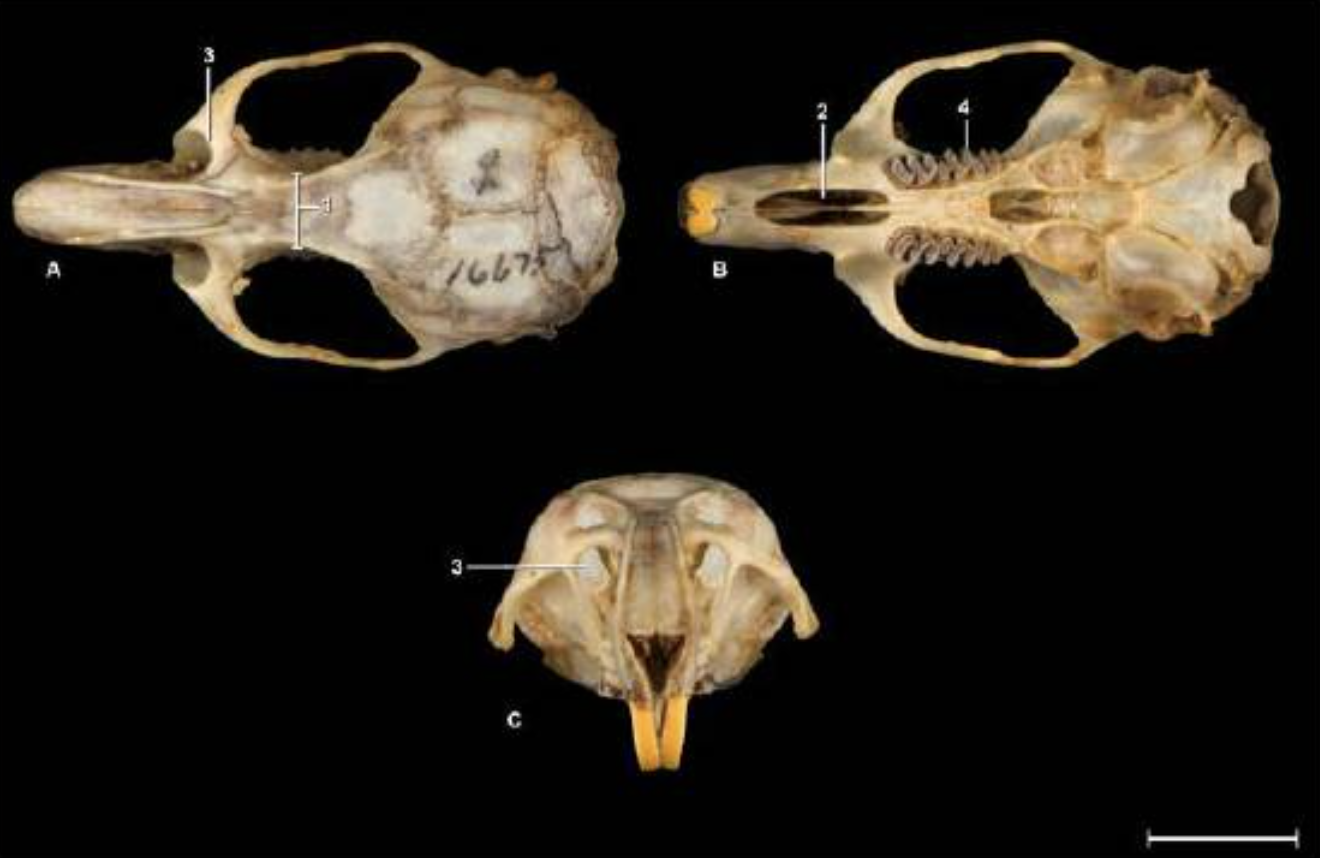
List the Order, Family, common name, and diagnostic osteological features
Rodentia, Cricetidae, cricetid rats and mice (ex- woodrats)
Osteological features:
Narrow interorbital breadth
allows for maxilla to be visible from dorsal view
Long paired incisive foramina
Large paired anterior facing infraorbital foramina (3)
Zipper teeth
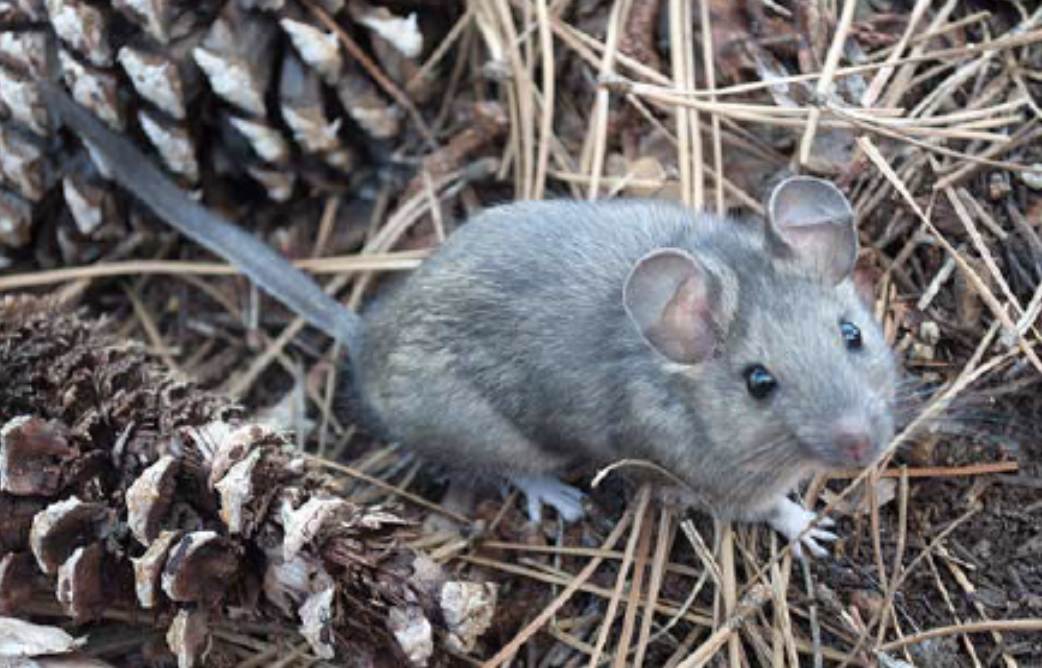
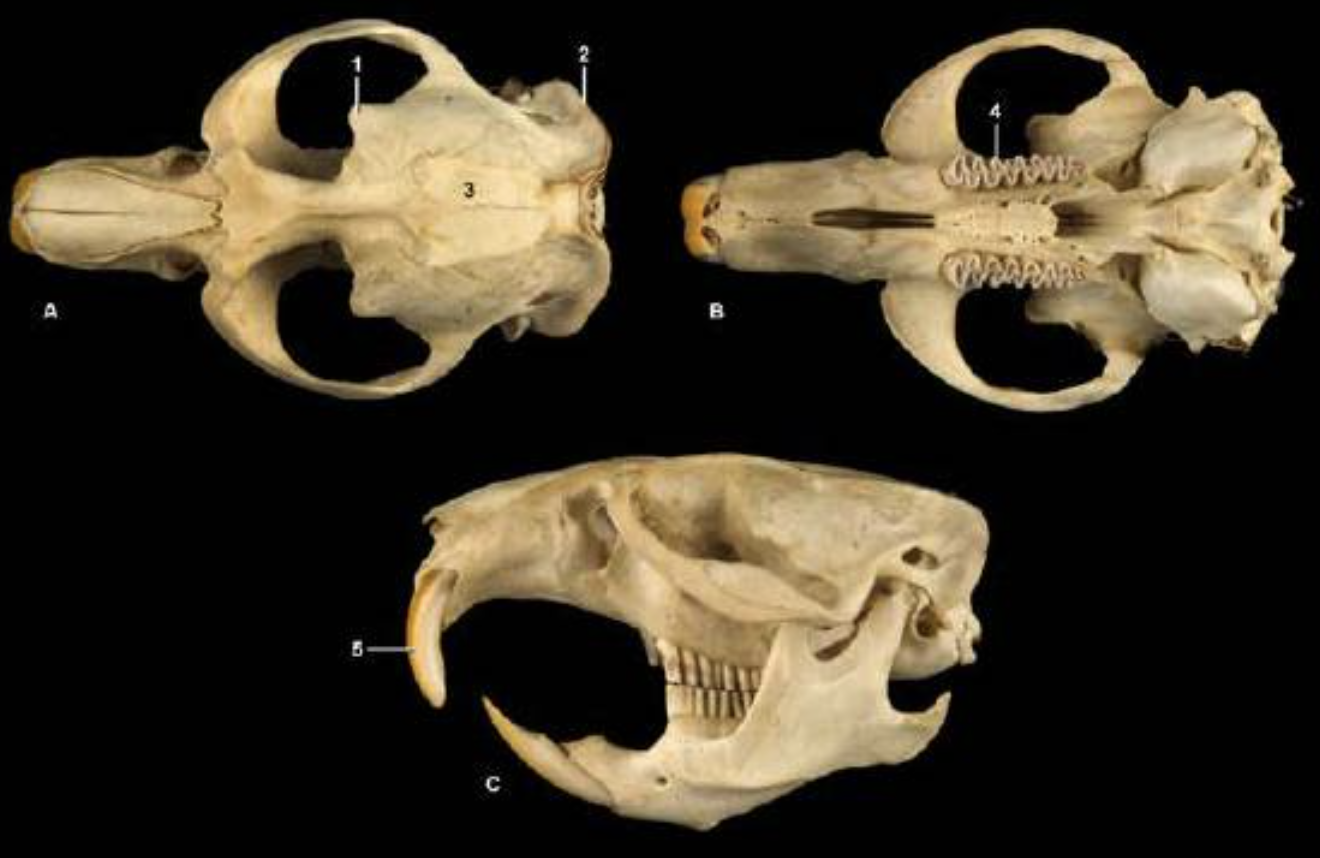
List the Order, Family, common name, and diagnostic osteological features
Rodentia, Cricetidae, Muskrat
Osteological features:
Temporal bone with strong anterior projection
Well developed nuchal crest
Overall square shape
Zig-zag cheek teeth
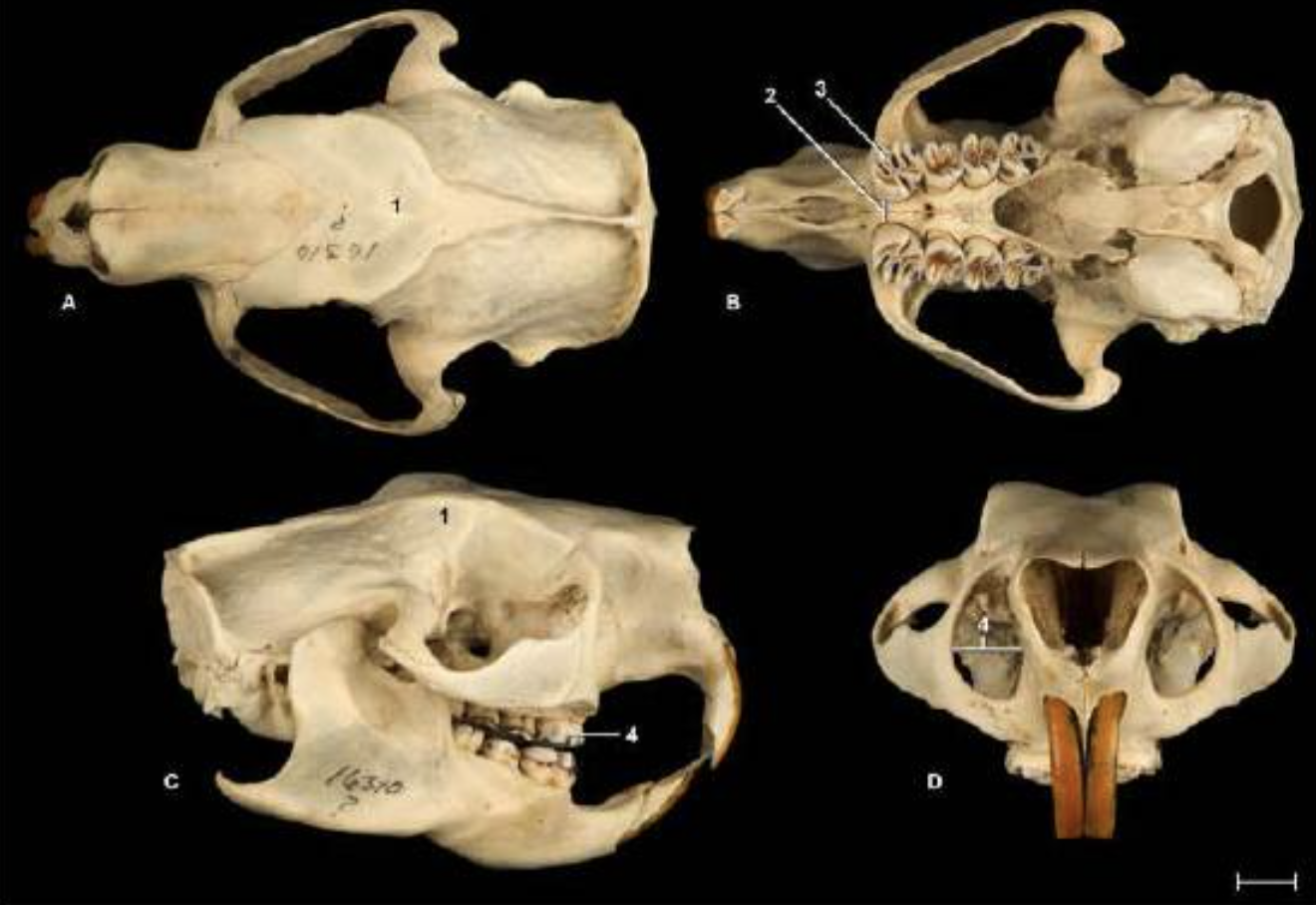
List the Order, Family, common name, and diagnostic osteological features
Rodentia, Erethizontidae, New World Porcupine
Osteological features:
Overall large skull
Cheek teeth converge anteriorly
Most anterior cheek tooth is significantly larger posterior few
“Extremely large” paired anterior facing infraorbital foramina
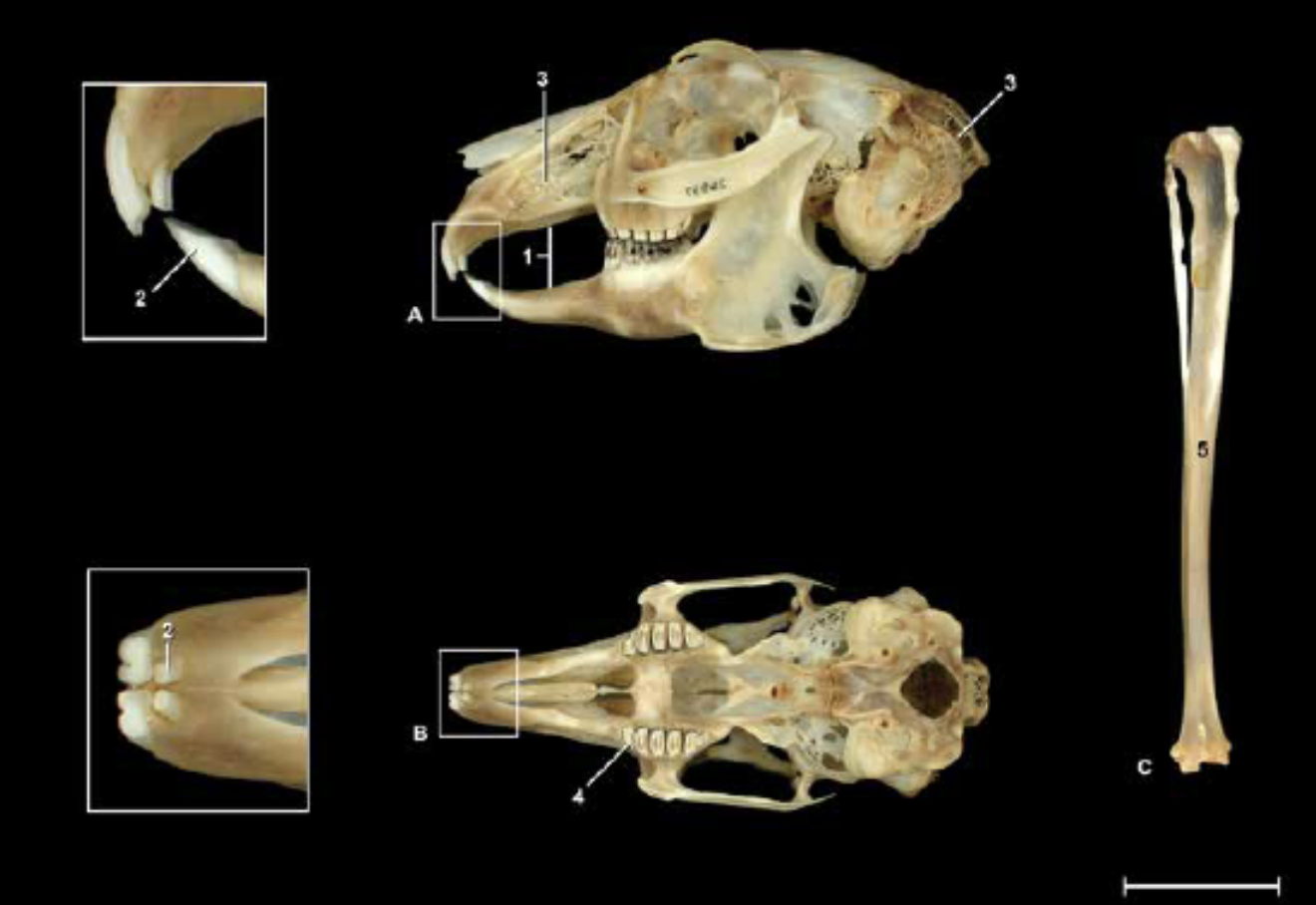
List the Order, common name, and diagnostic osteological features
Lygamorpha, Pika, Hares, or Rabbits
Osteological features:
Single rooted molars
Fused tiba-fibula
Cranial fenistration
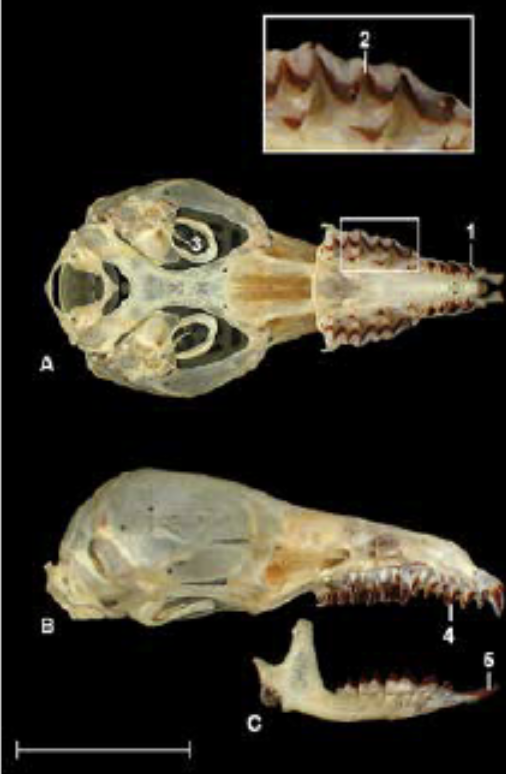
List the Order, Family, common name, and diagnostic osteological features
Soricomorpha, Soricidae, shrew
Osteological features:
Cranium lacks diastema
“W-shaped” premolas + molars
Incomplete auditory bullae
Central incisors are well developed, projecting anteriorly
Teeth with red staining
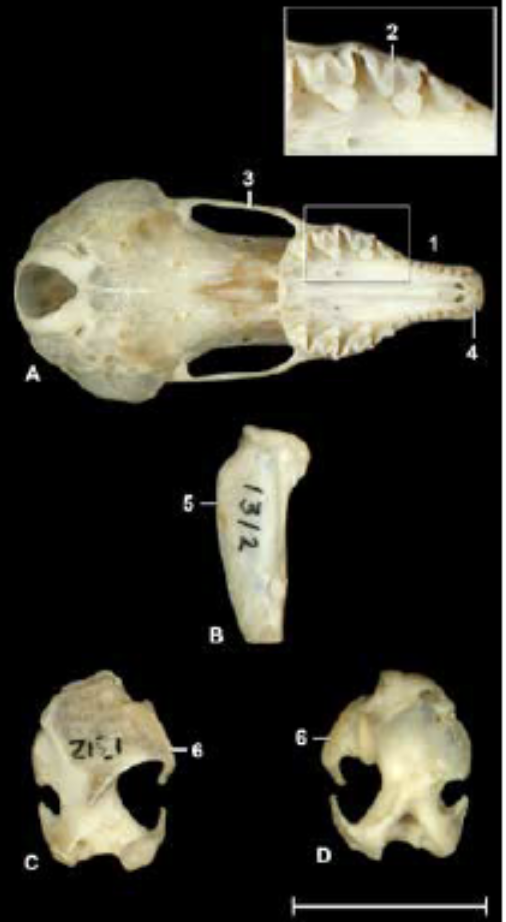
List the Order, Family, common name, and diagnostic osteological features
Soricomorpha, Talpidae, Moles
Osteological features:
Cranium lacks diastema
No red staining on teeth
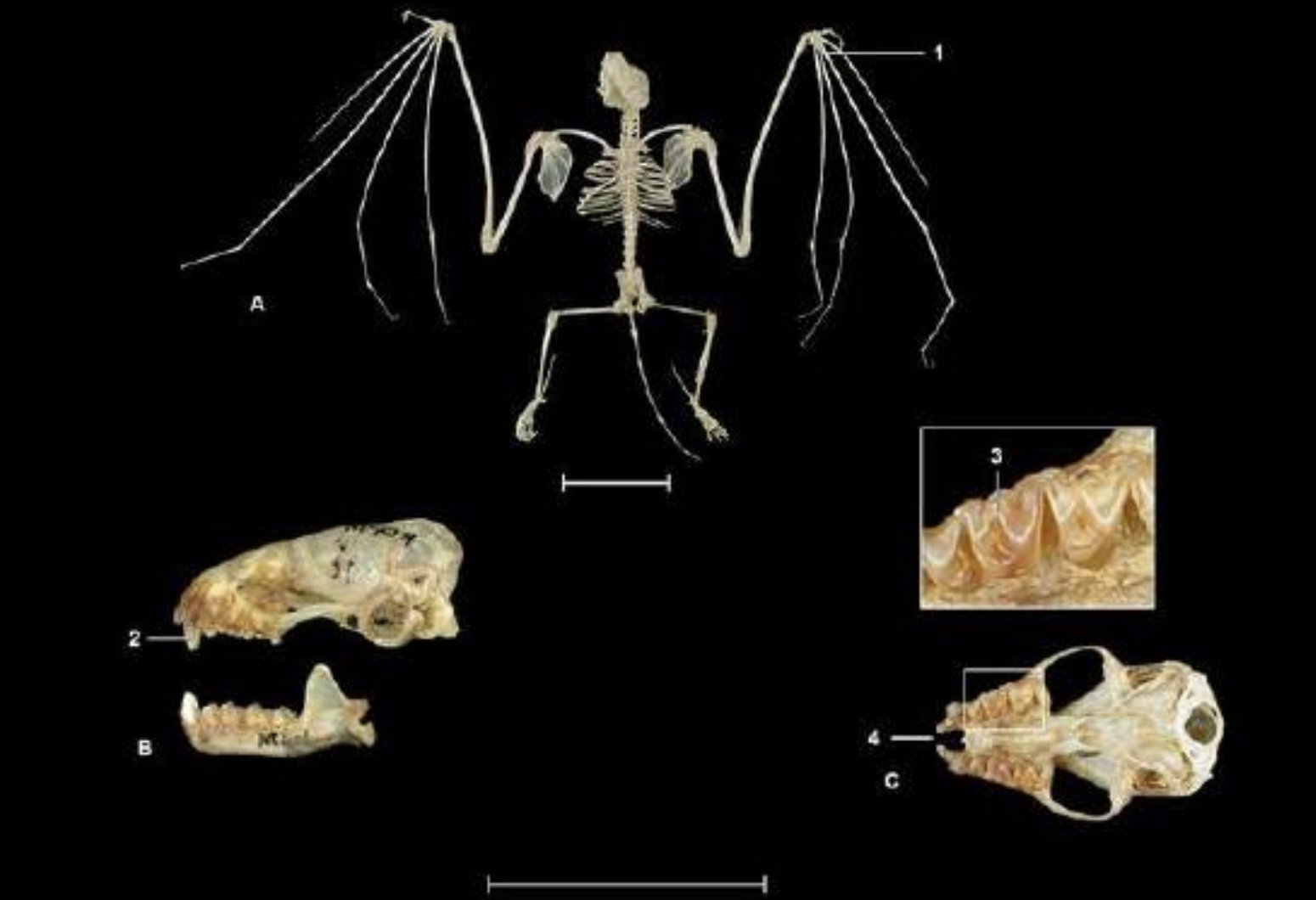
List the Order, common name, and diagnostic osteological features
Chiroptera, bats
Osteological features
Canines well developed
Maxillary cheek tooth sectorial
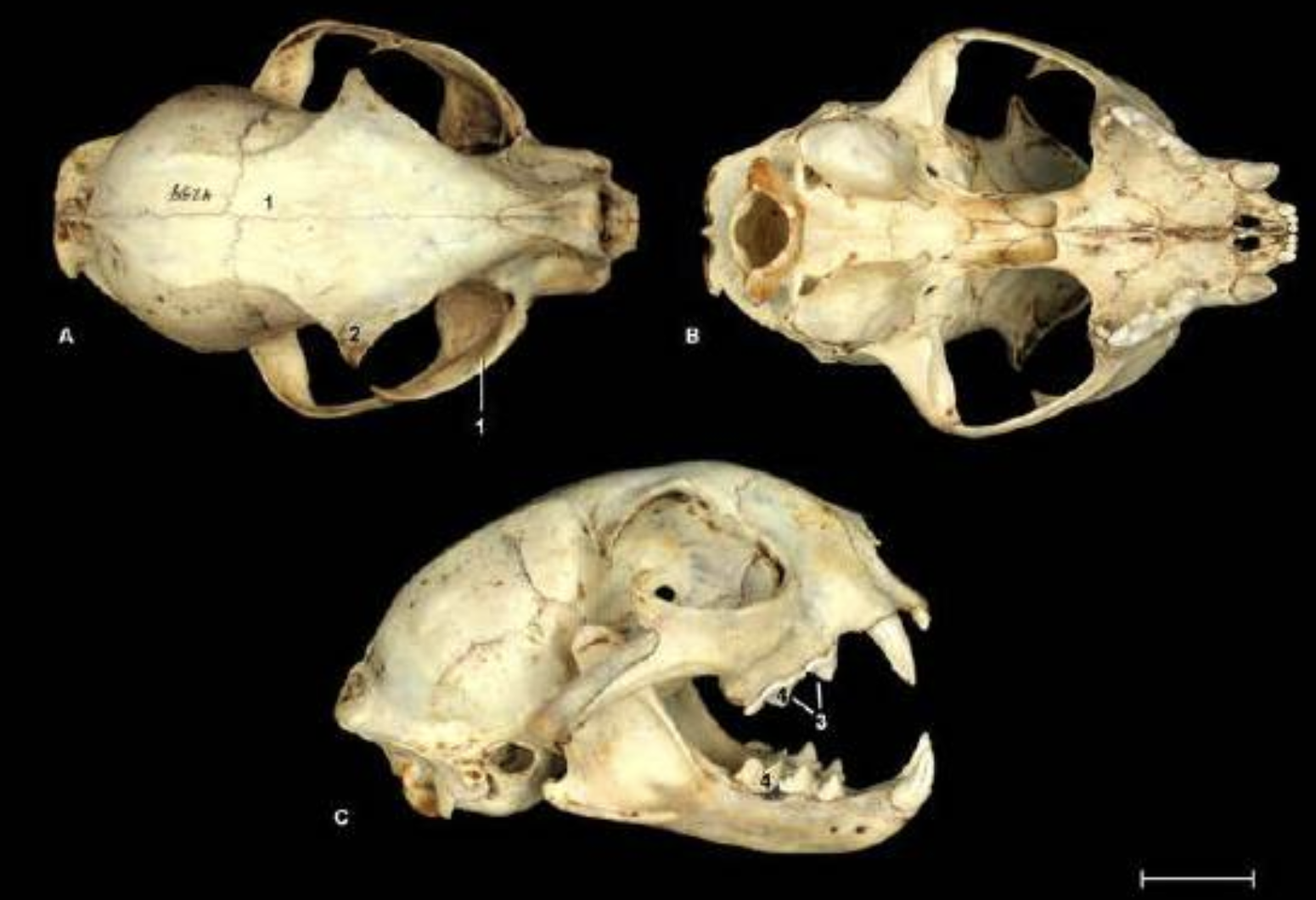
List the Order, Family, common name, and diagnostic osteological features
Carnivora, Felidae, Cats
Osteological features
Cranium round and squat
flaring zygomatics
well developed post-orbital processes
reduced number of cheek teeth
sectorial carnassials
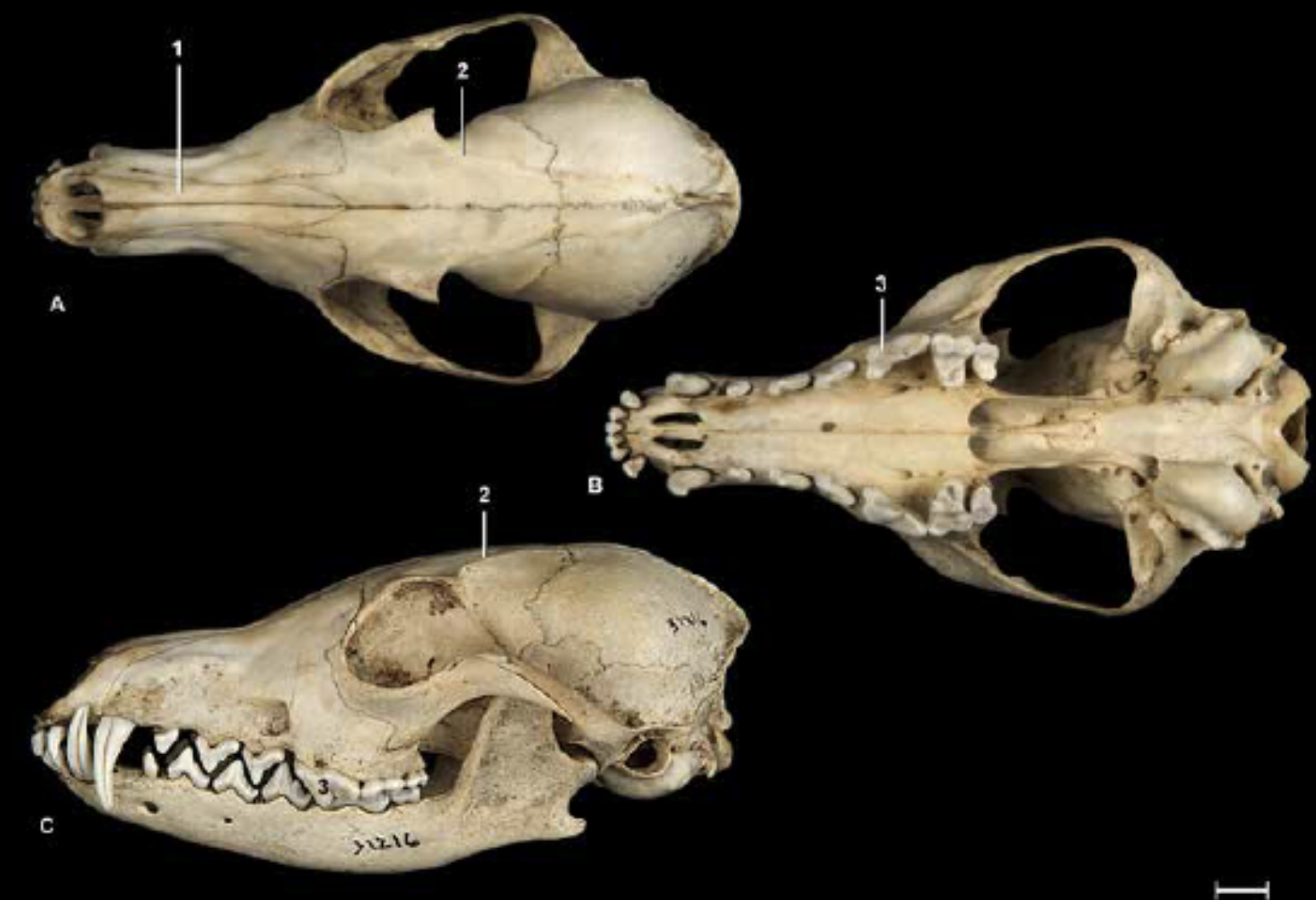
List the Order, Family, common name, and diagnostic osteological features
Carnivora, Canidae, dog
Osteological fetaures:
elongated and pointed rostrum
well developed temporal lines
well developed saggittal crest
well developed sectorial carnassials

List the Order, Family, common name, and diagnostic osteological features
Carnivora, Ursidae, Bears
Osteological fetaures:
Large cranium
Rostrum elongated, but proportionally short
Bunodont, broad, flat molars
Most posterior molar is largest
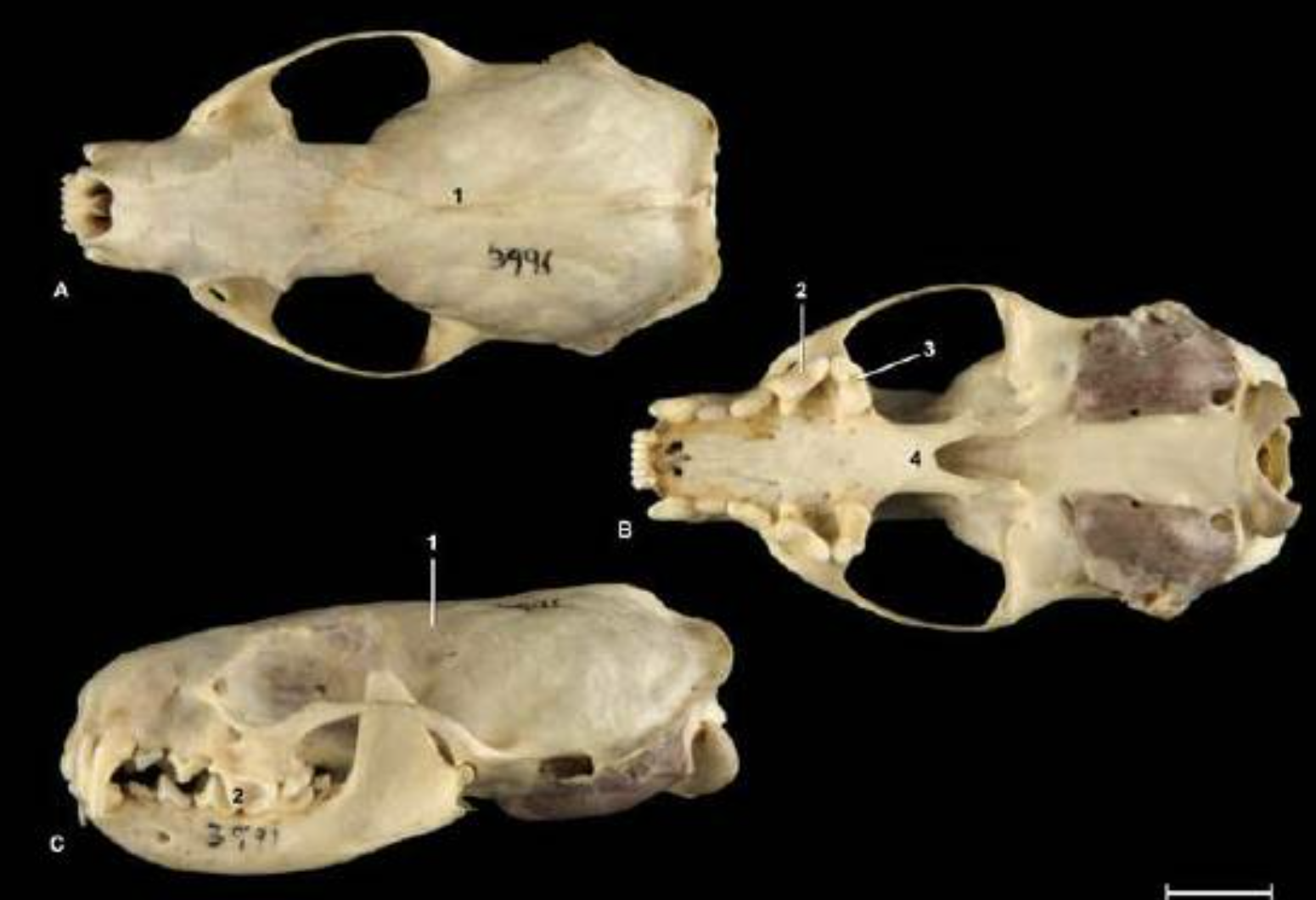
List the Order, Family, common name, and diagnostic osteological features
Carnivora, Mustelidae, weasels, otters, badgers, etc
Osteological features:
Dorso-ventral flatten cranium
well developed carnassials
Most posterior molar projects medially
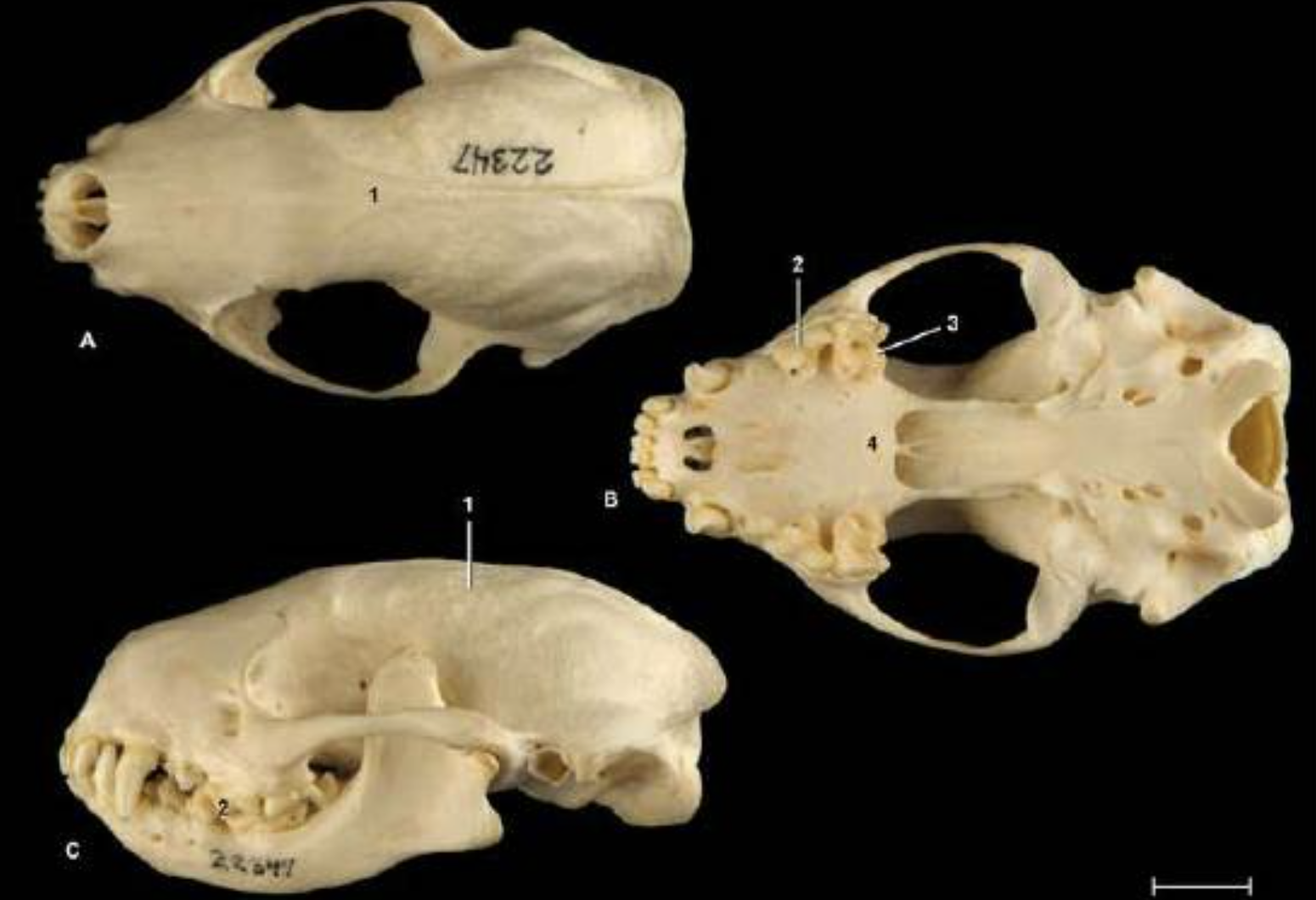
List the Order, Family, common name, and diagnostic osteological features
Carnivora, Mephitidae, skunks and stink badgers
Osteological features:
Dorso-ventral flattened cranium
well developed carnassials
Upper molars wider than long
List the Order, Family, common name, and diagnostic osteological features
Carnivora, Procyonidae, raccoons, ringtail, coati, etc
Osteological features:
Six upper cheek teeth
Lack of carnassials
Broad, flattened molars
What order contains two-toed Ungulates
Artiodactyls
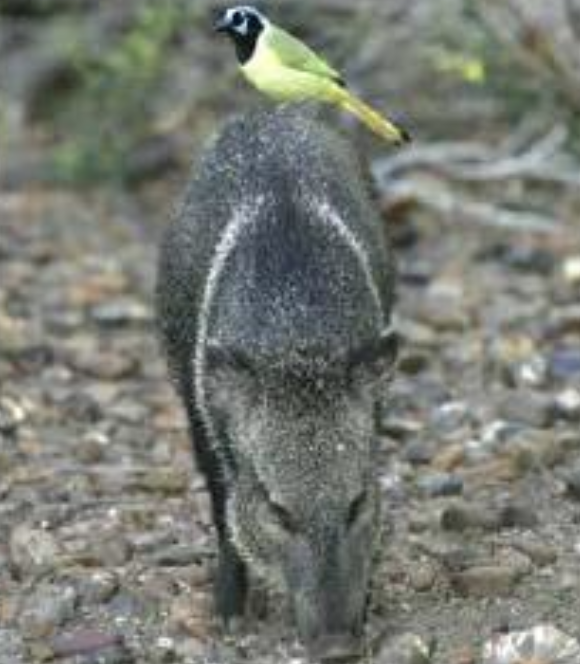
What families are included in North American Artiodactyls?
Tayassuidae
Cervidae
Antilocapridae
Bovidae
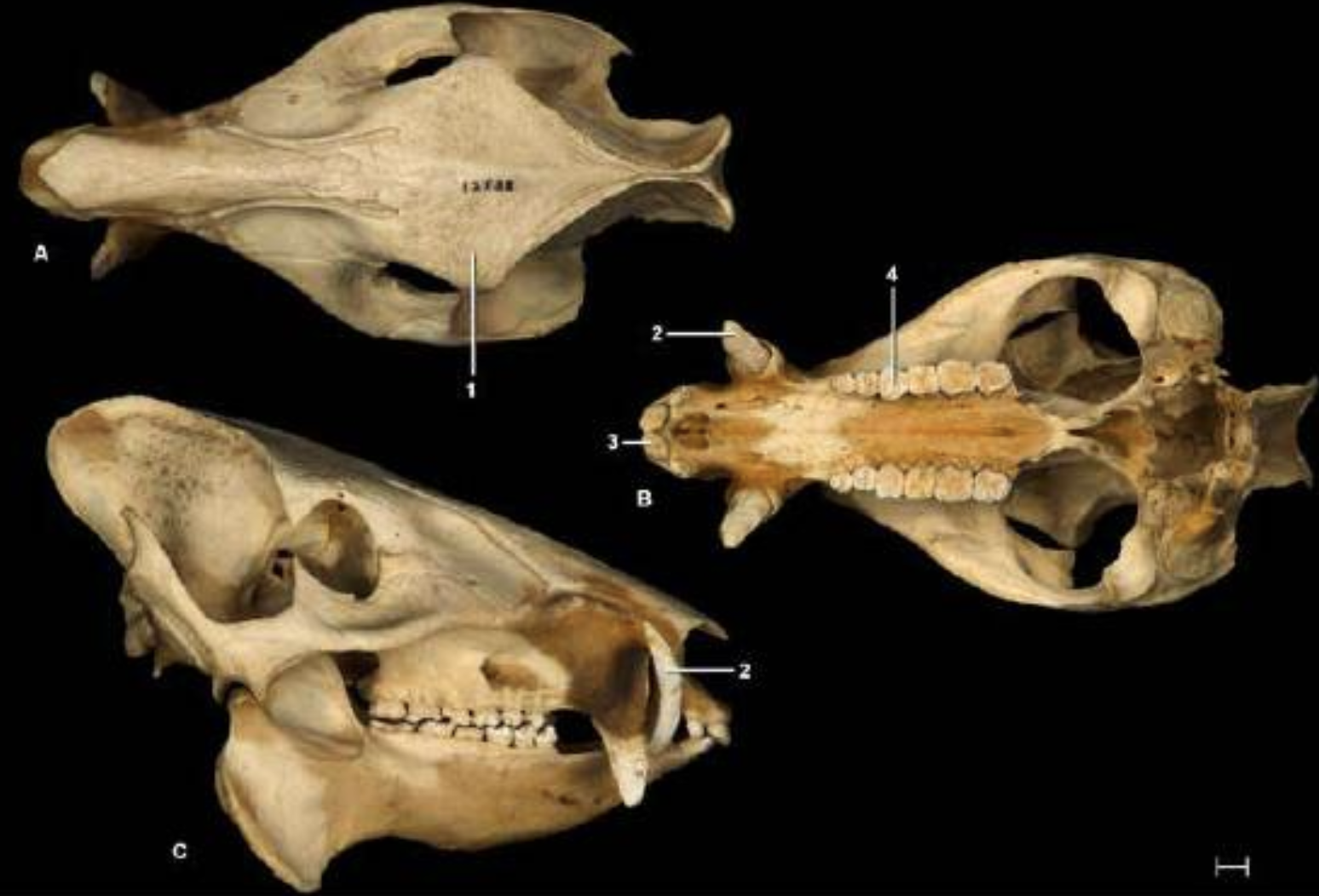
List the Order, Family, common name, and diagnostic osteological features
Artiodactyls, Tayassuidae, Peccaries
Osteological Features:
No frontal appendages (1)
Well developed, tusk-like canines in mandible
Present upper incisors
Cheek teeth bunodont
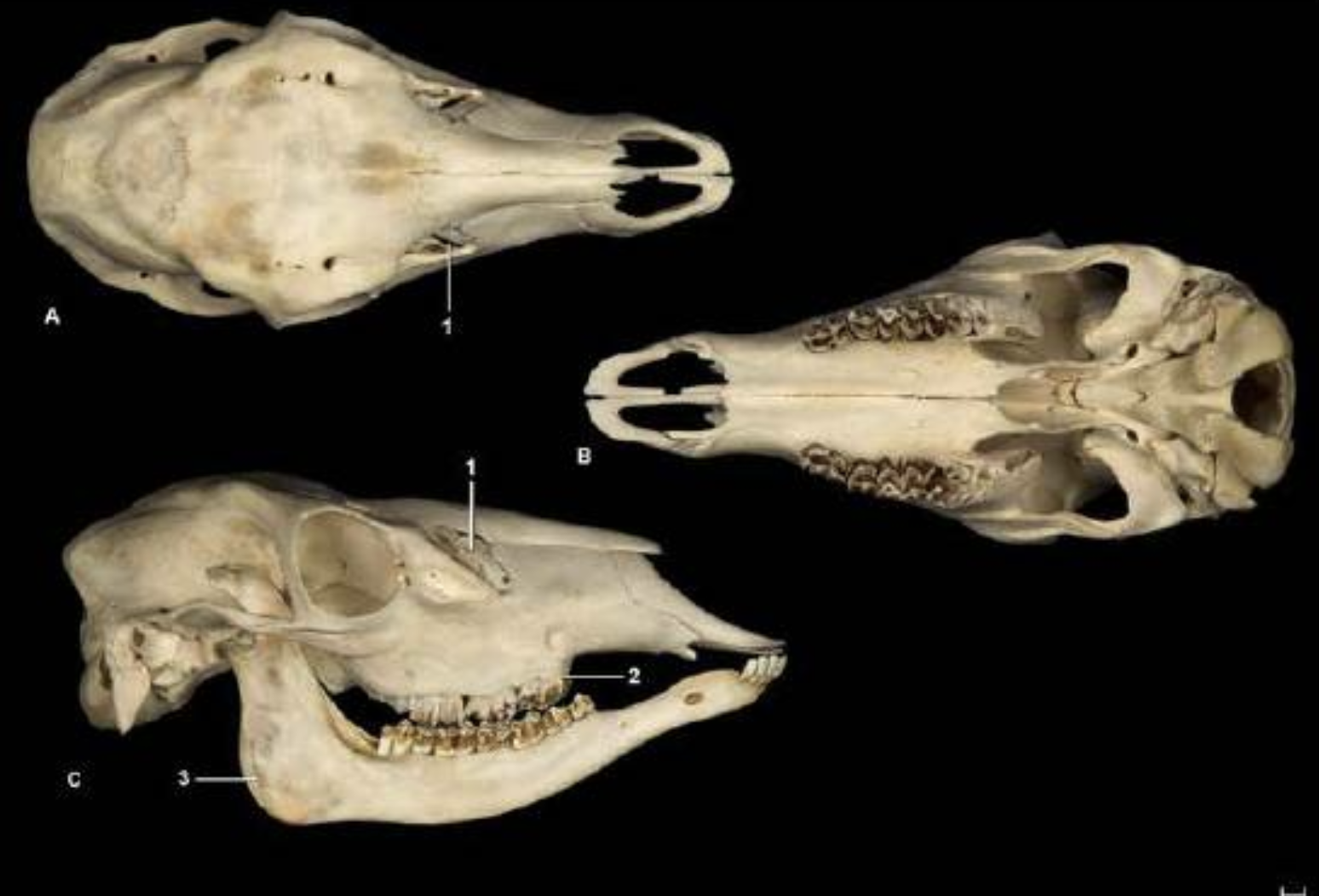
List the Order, Family, common name, and diagnostic osteological features
Artiodactyle, Cervidae, deer etc
Osteological Features:
Loss of bone between lacrimal and nasal (1)
No distinct separation between enameled crown and root of cheek teeth
Angular process of mandible rounded with posterior extension
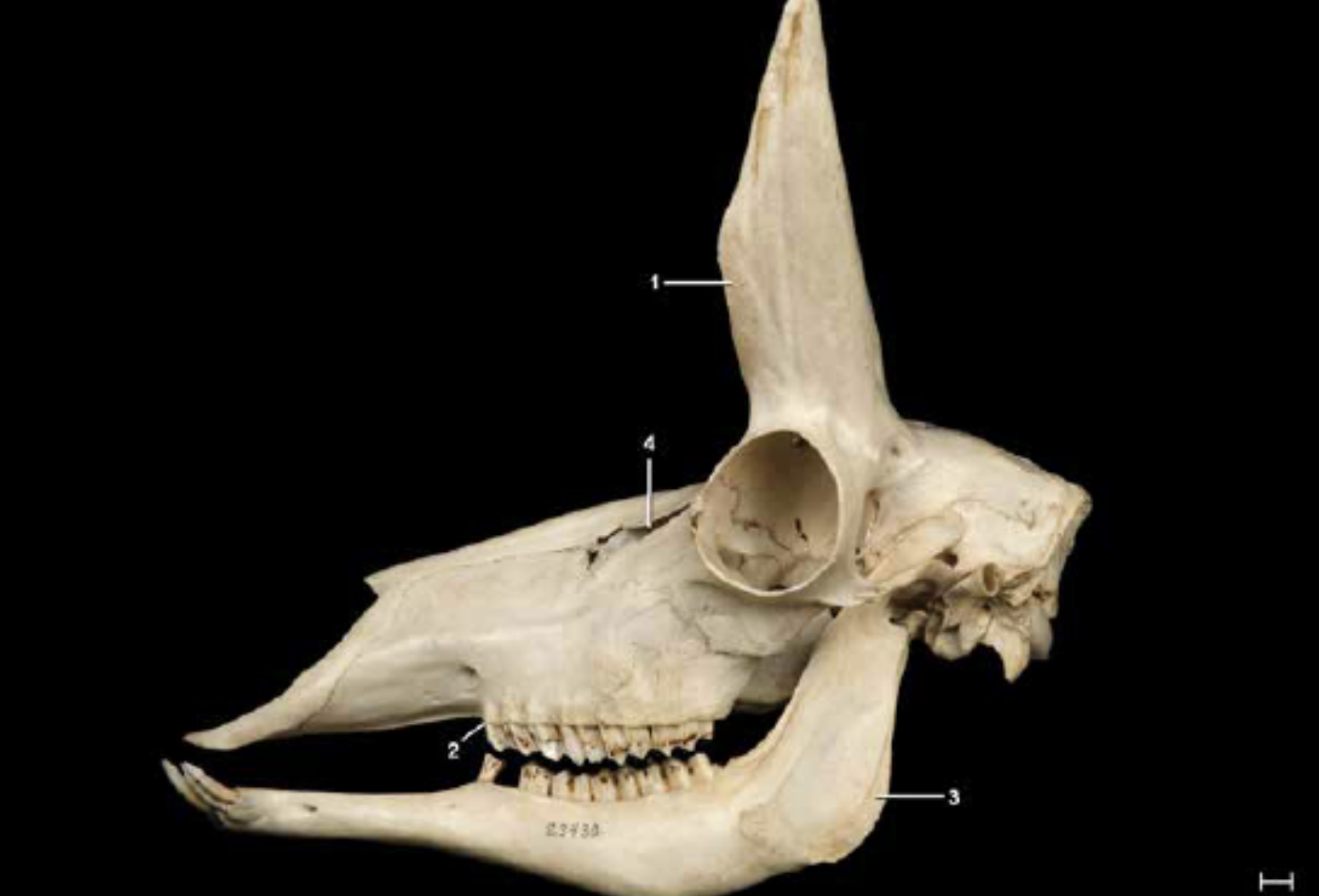
List the Order, Family, common name, and diagnostic osteological features
Artiodactyle, Antilocapridae, pronghorns
Osteological features:
Horns arise form cranium above orbits
No distinct separation between enameled crown and root of cheek teeth
Bone loss between lacrimal and nasal, no contact between bones as observed in cervids
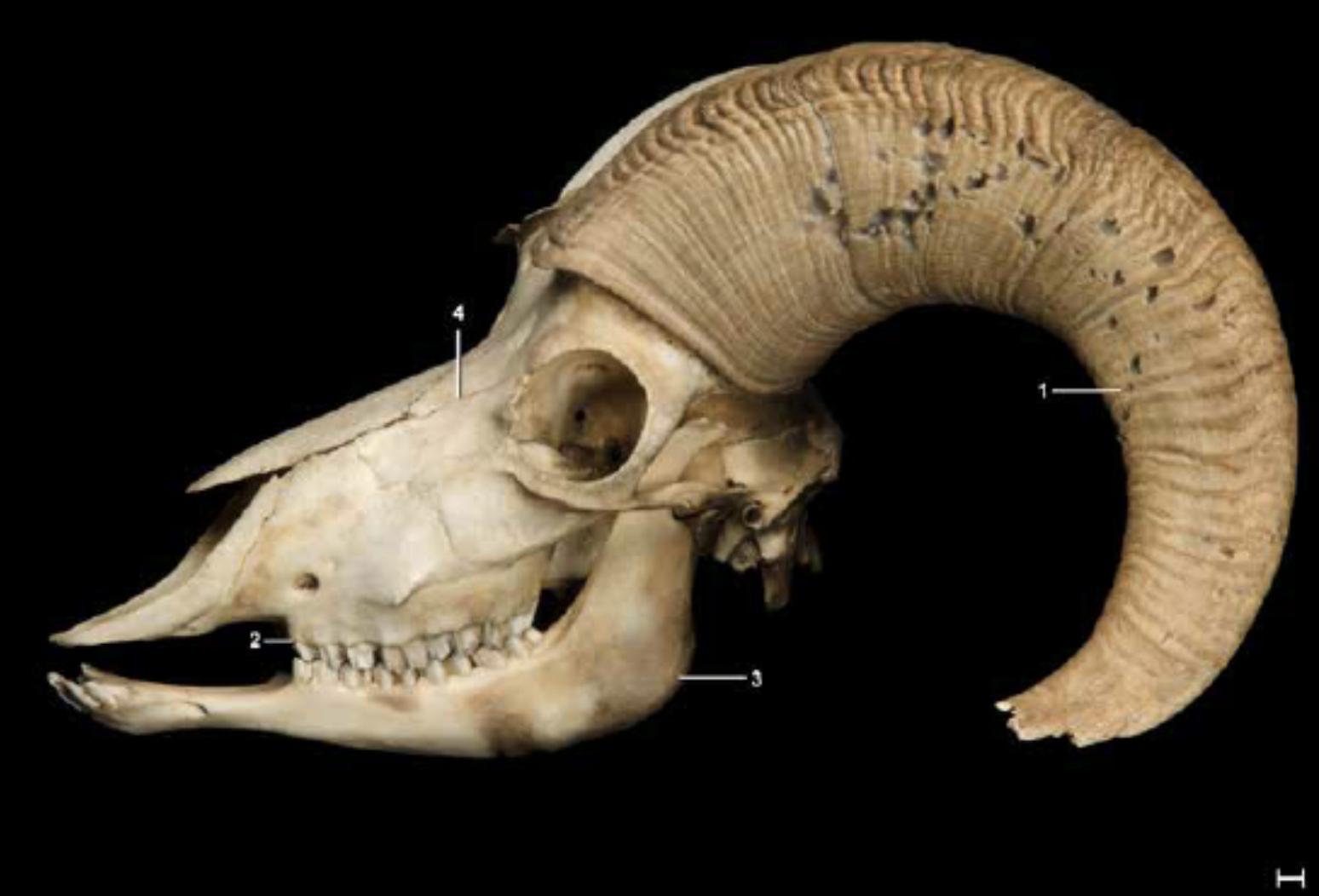
List the Order, Family, common name, and diagnostic osteological features
Artiodactyle, Bovidae, sheep, goats, etc
Osteological features:
Permanent horns, present in both sexes (unlike cervids)
No distinct separation between enameled crown and root of cheek teeth
Lacrimal contact nasals, no bone loss in lacrimal region
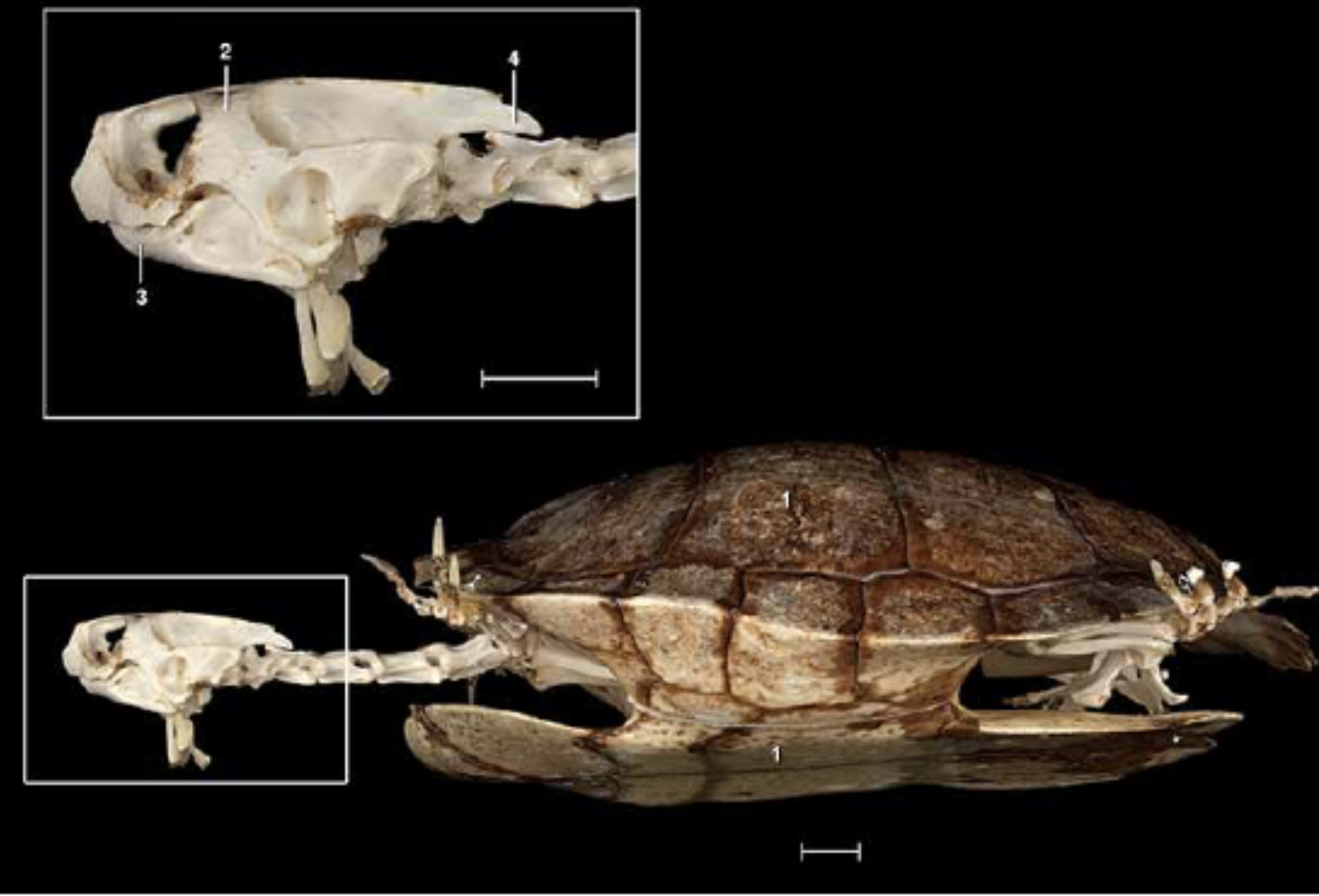
Taxa
Class: Reptilla; Order: Testudines
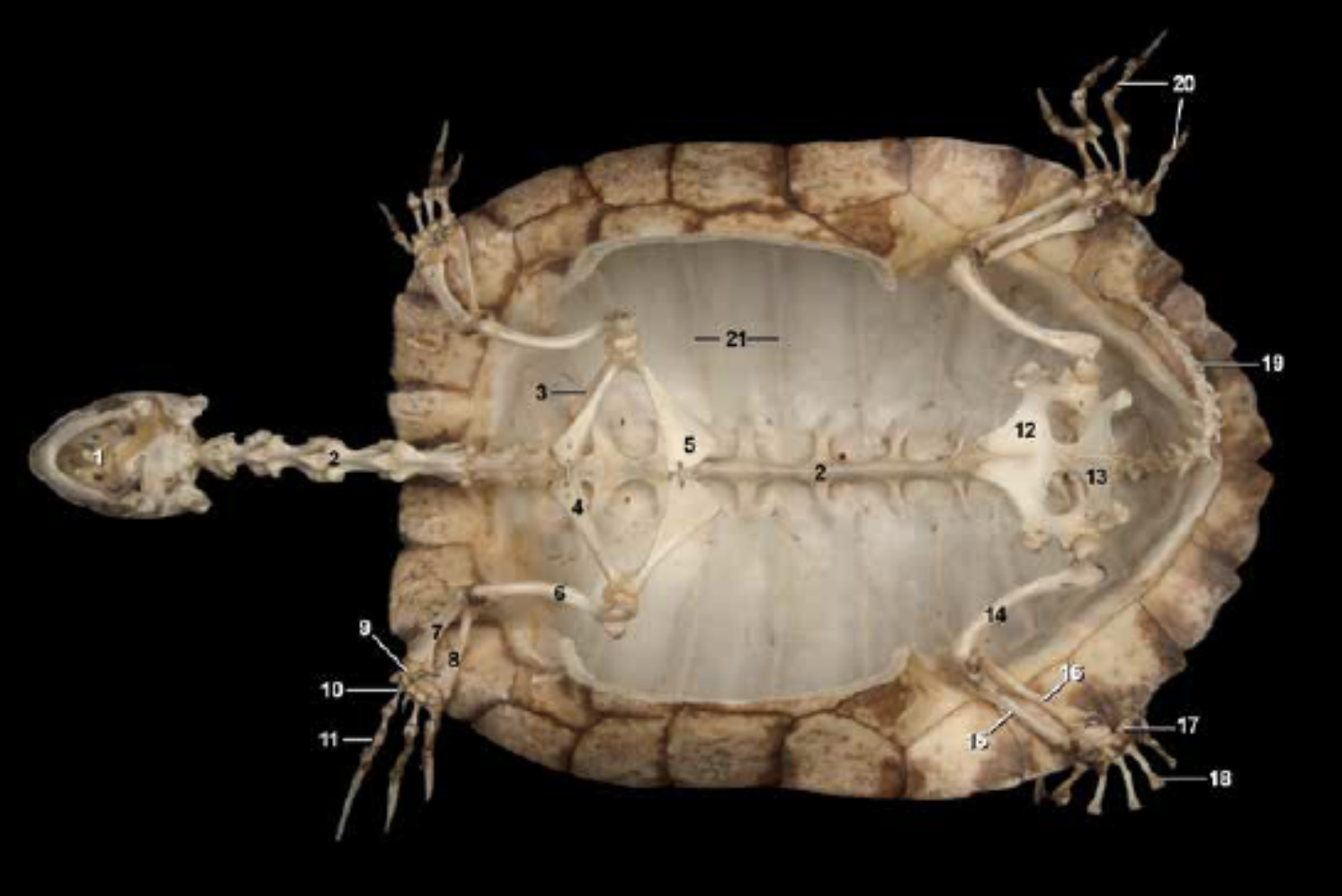
Name the element (1)
Cranium
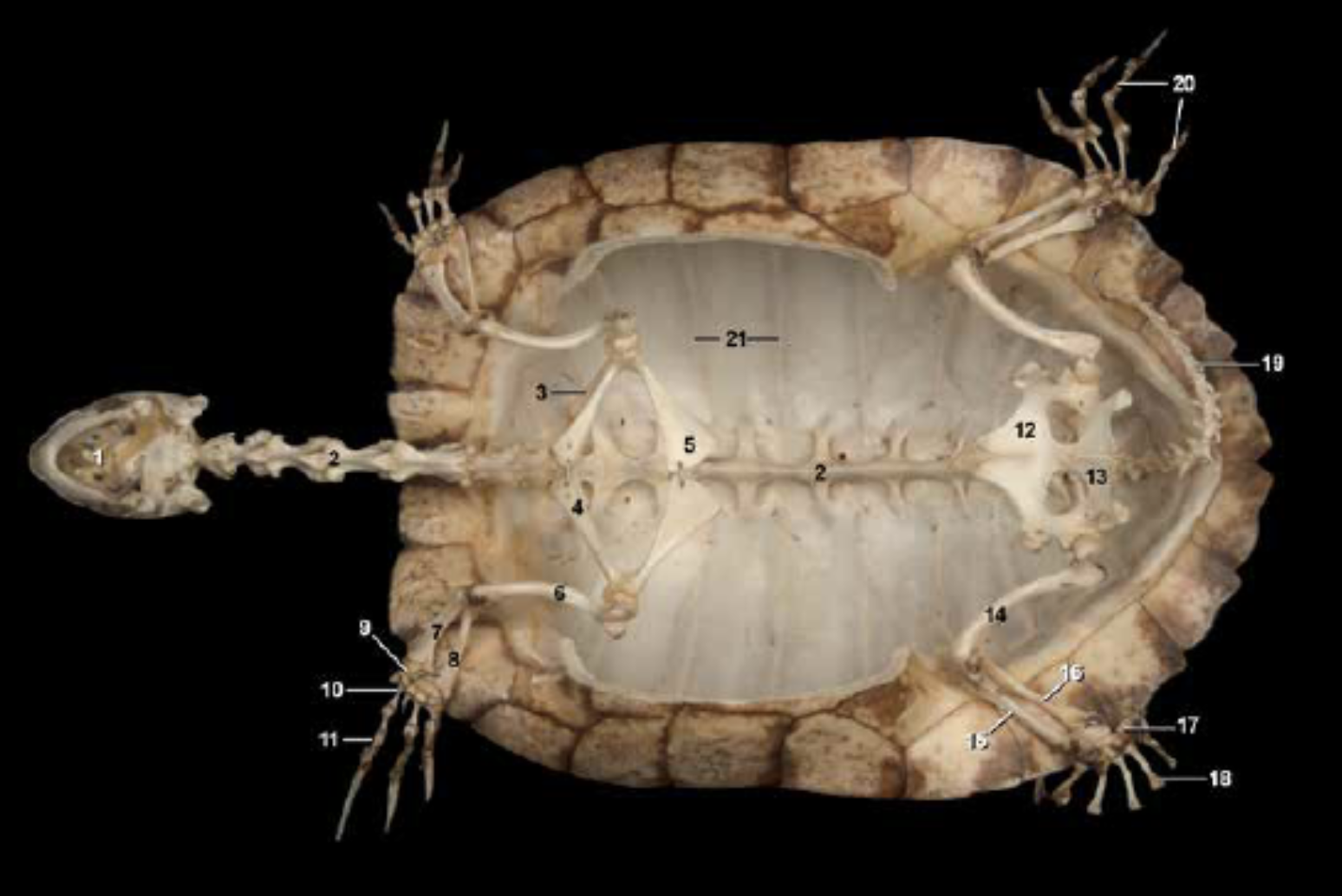
Name the element (2)
Cervical vertebra
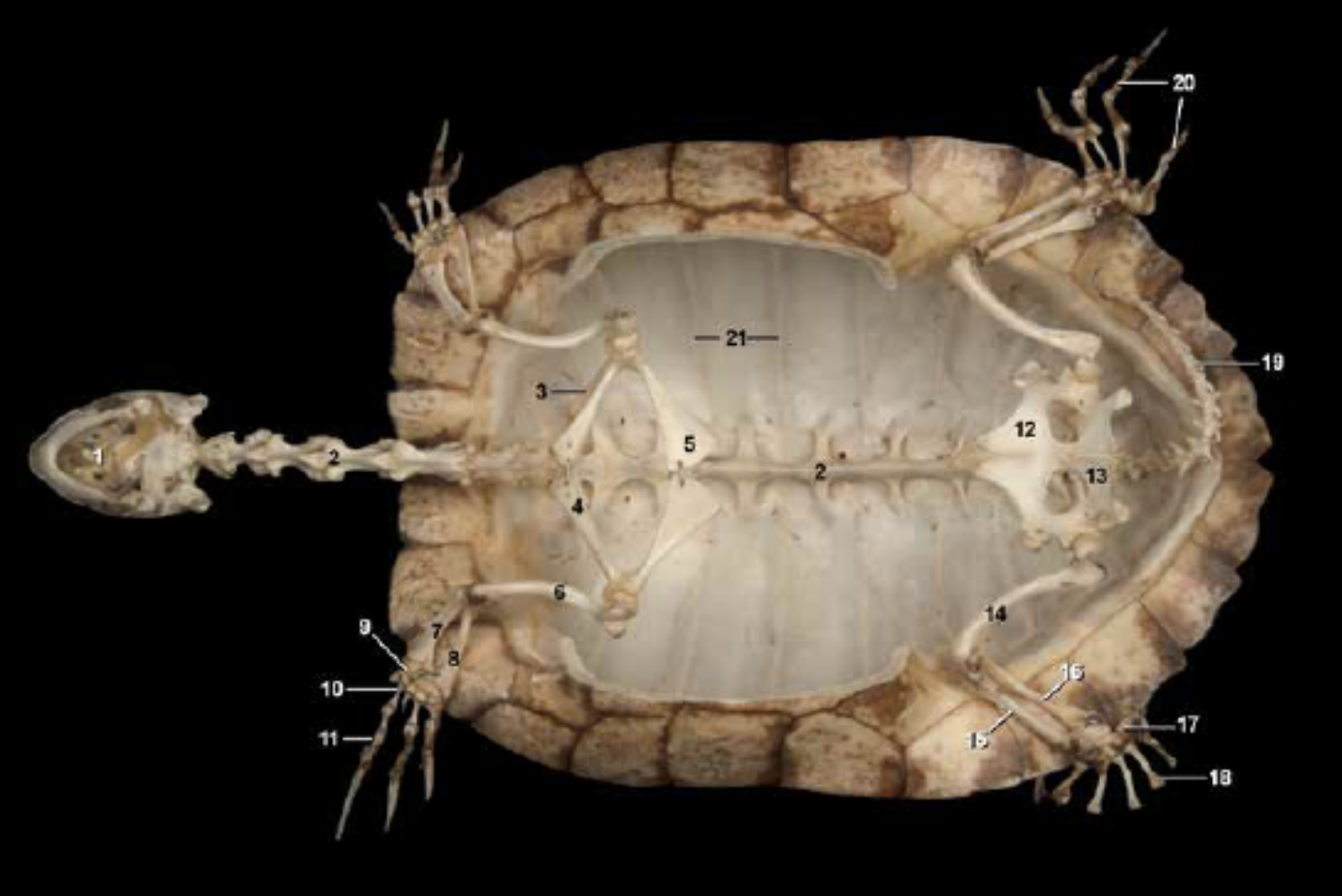
Name the element (3)
Scapula
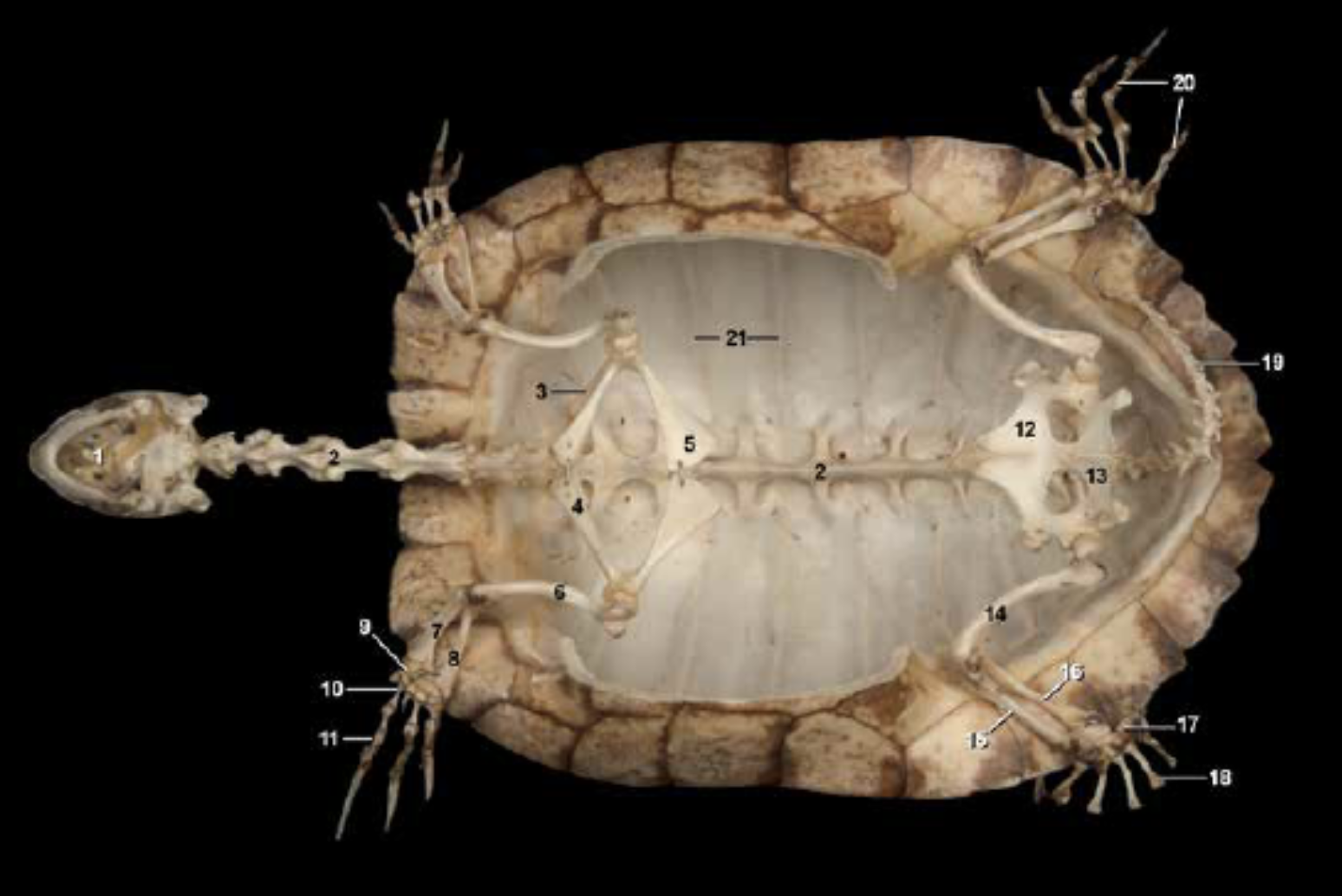
Name the element (4)
Precoracoid
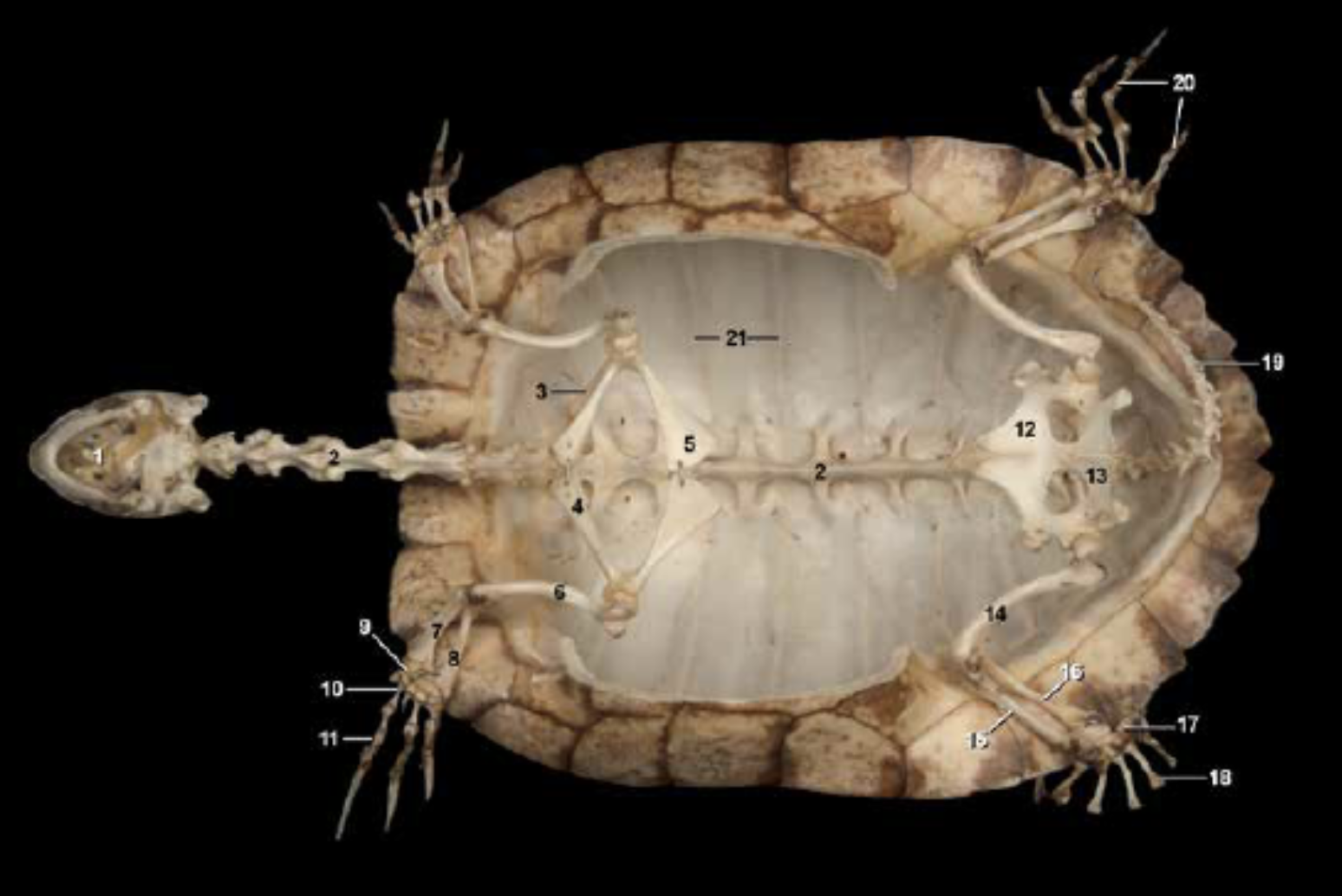
Name the element (5)
Coracoid

Name the element (6)
Humerus
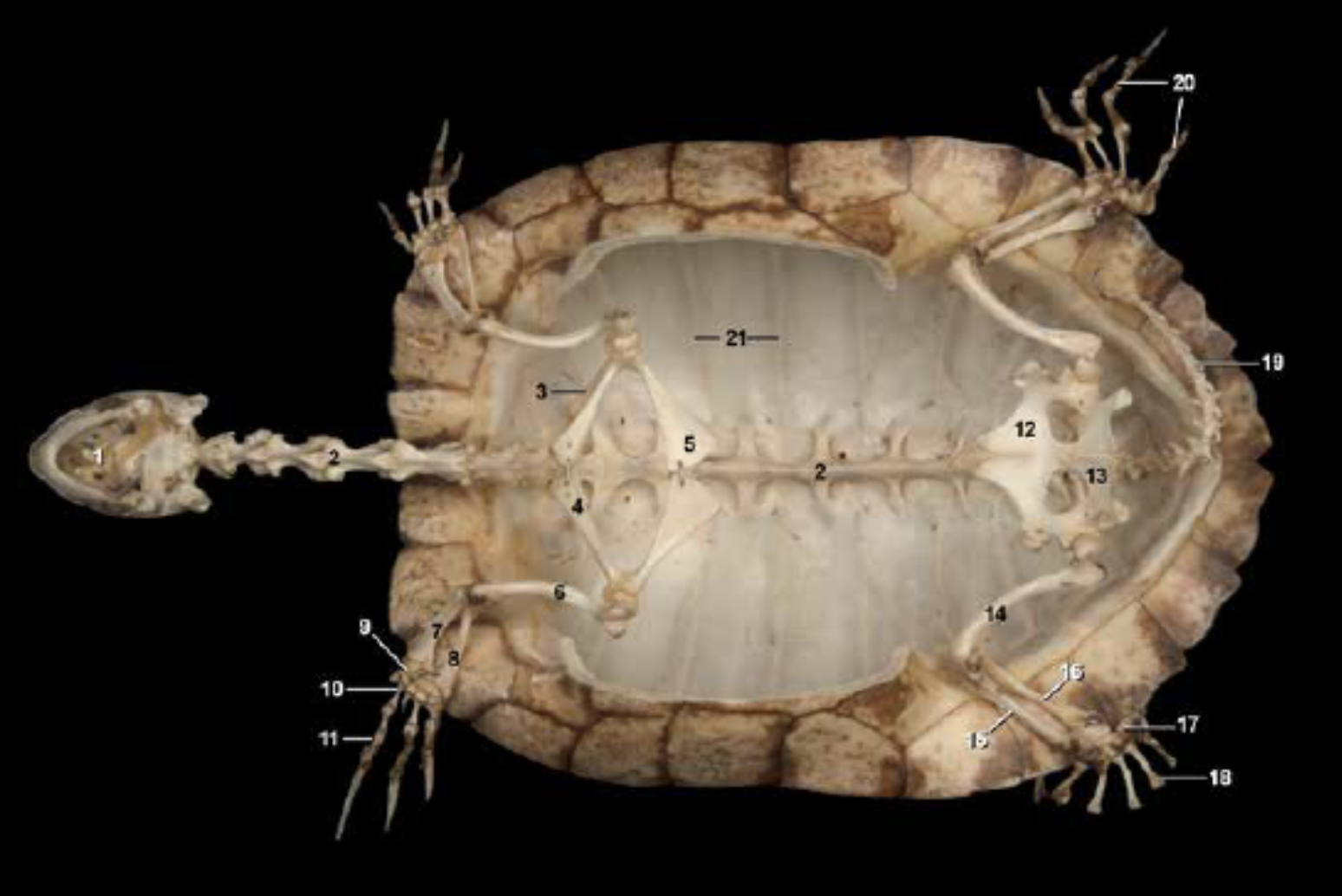
Name the element (7)
Ulna
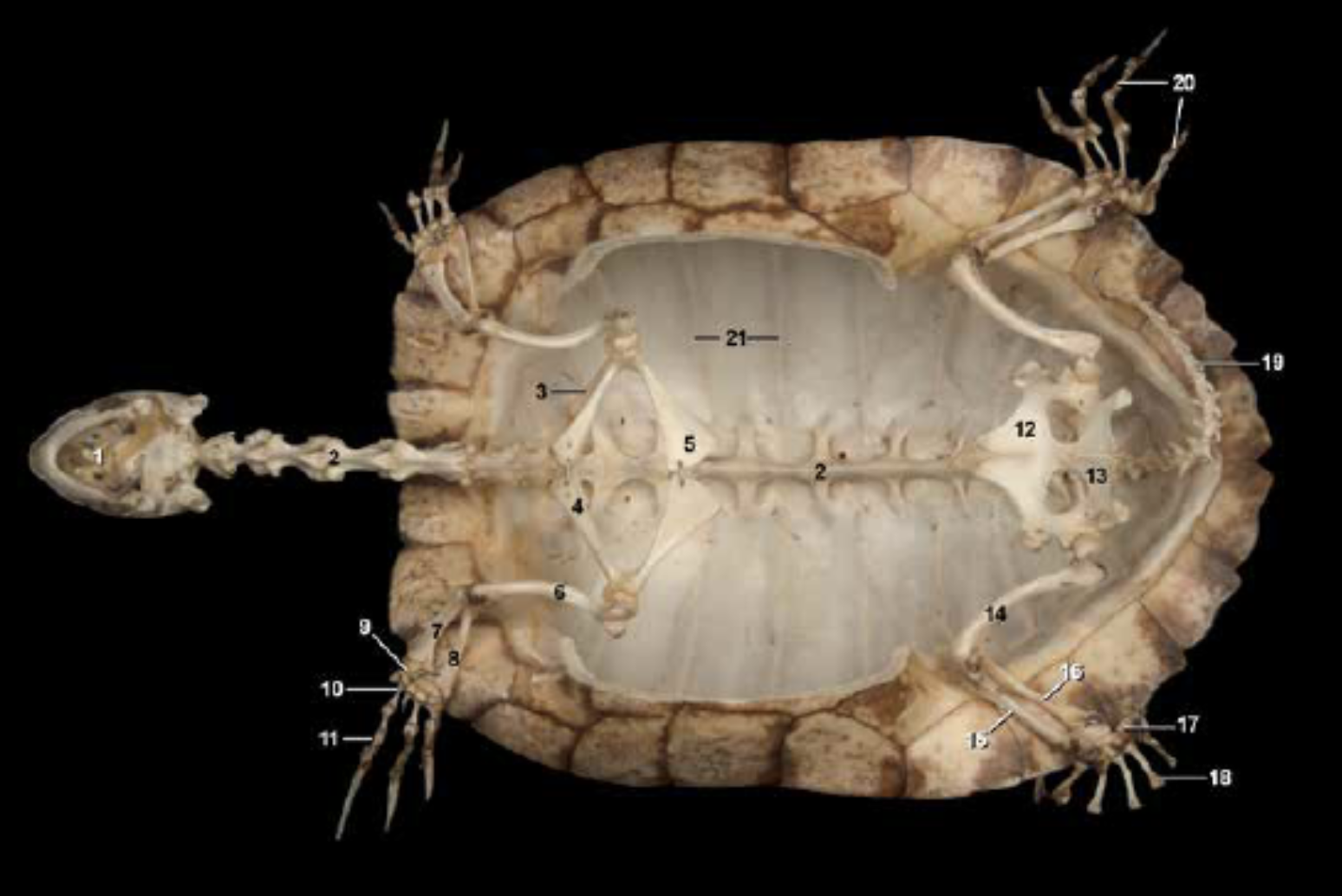
Name the element (8)
Radius

Name the element (9)
Carpals

Name the element (10)
Metacaparls

Name the element (11)
Phalanges
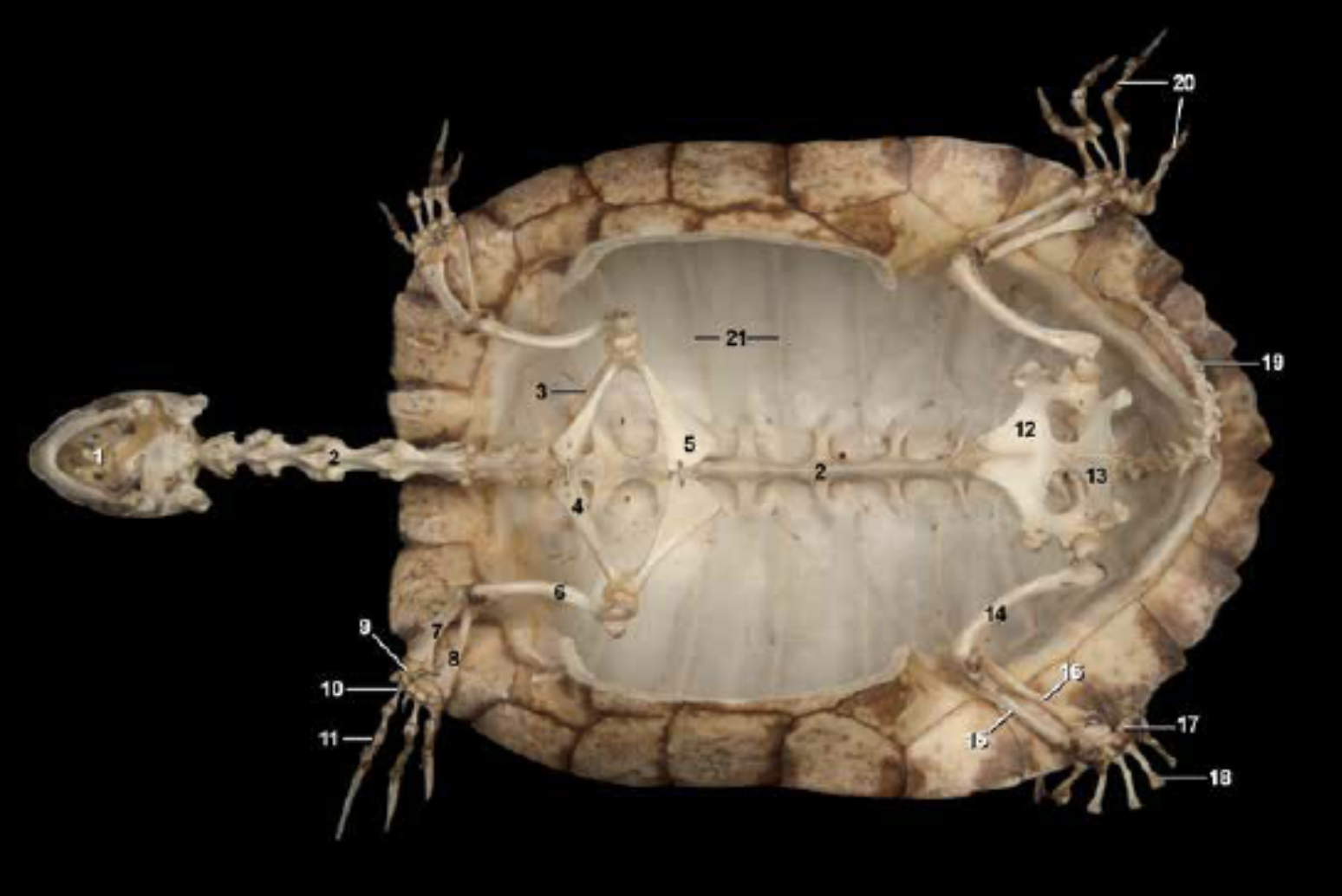
Name the element (12)
Pubis
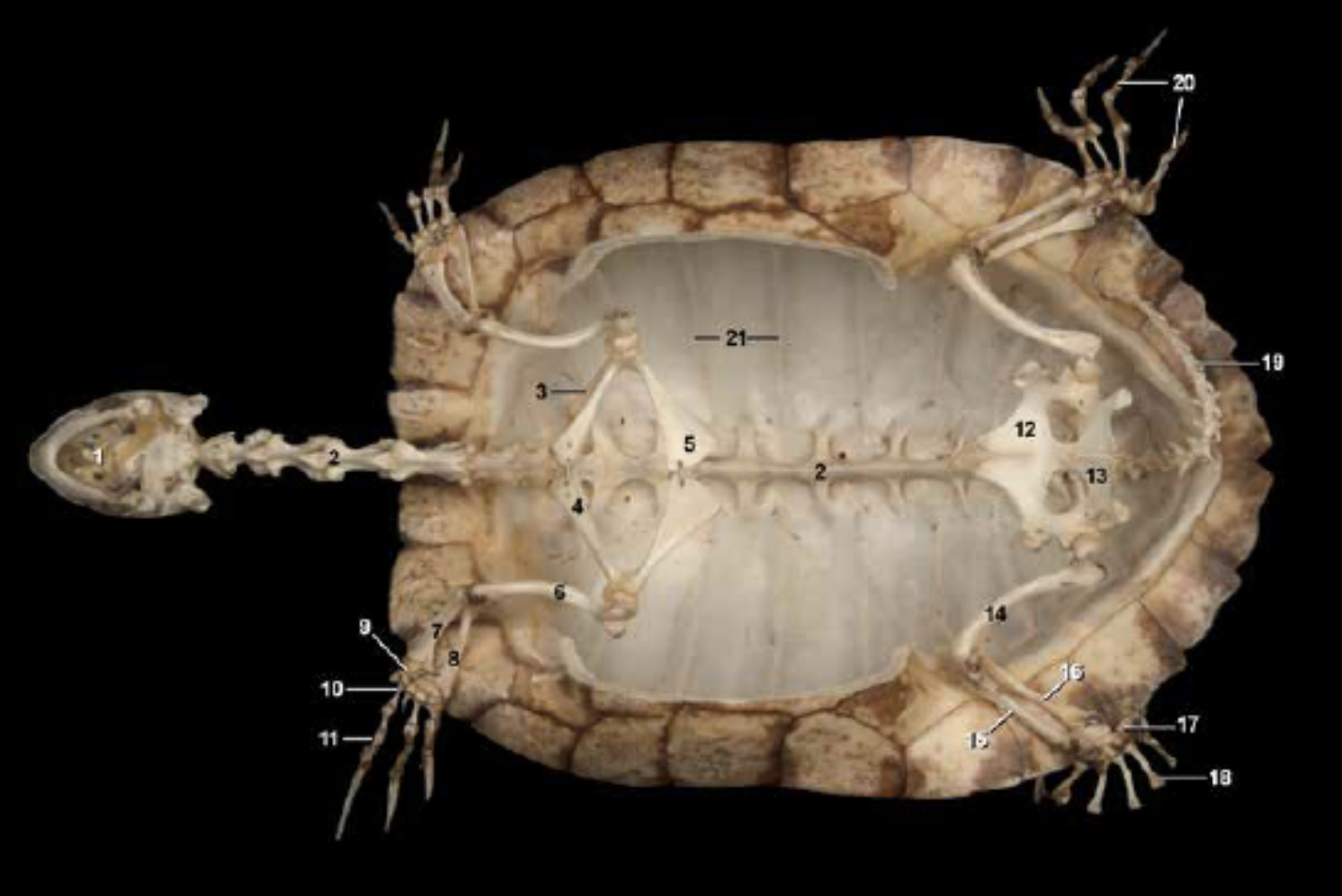
Name the element (13)
Ischium
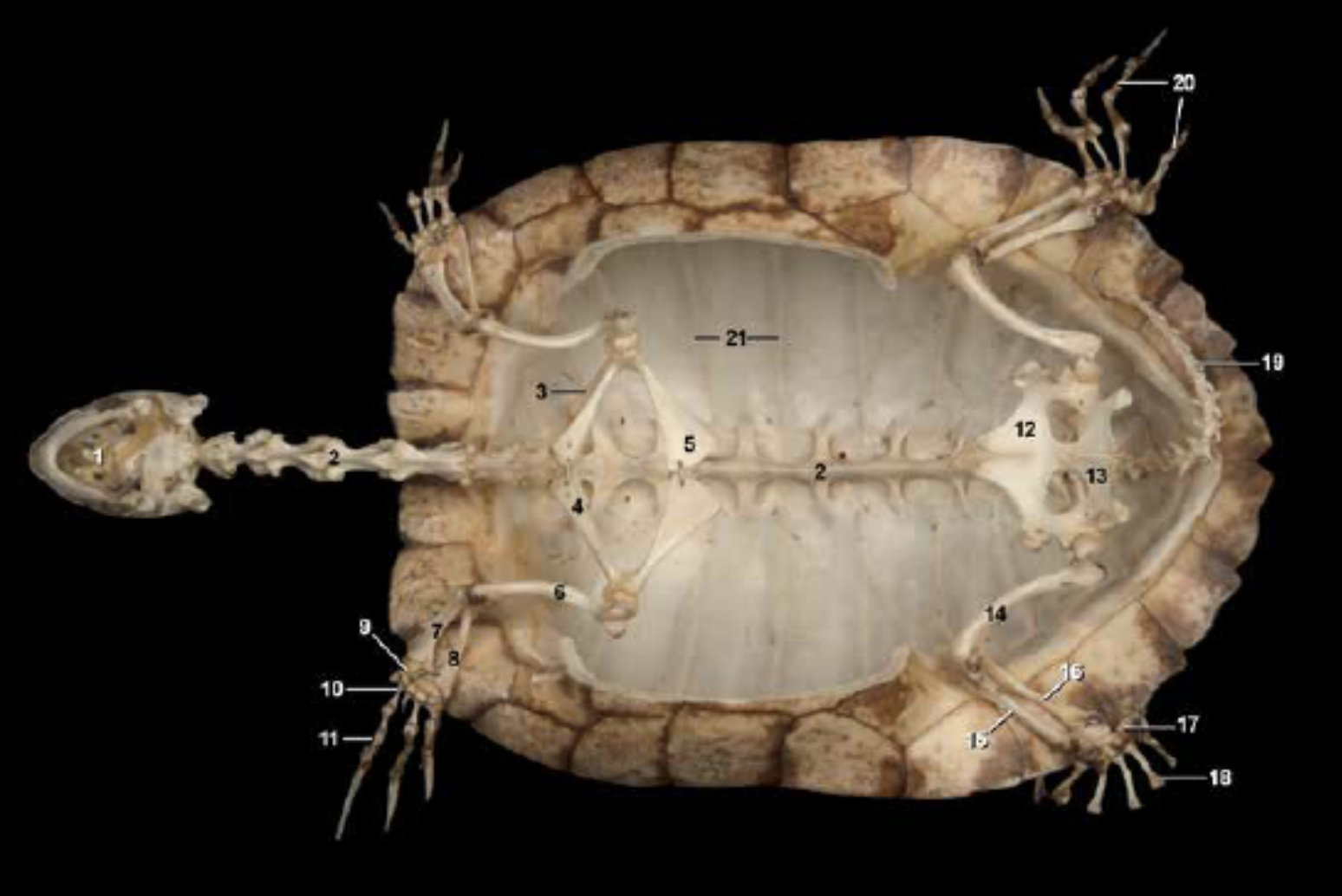
Name the element (14)
Femur
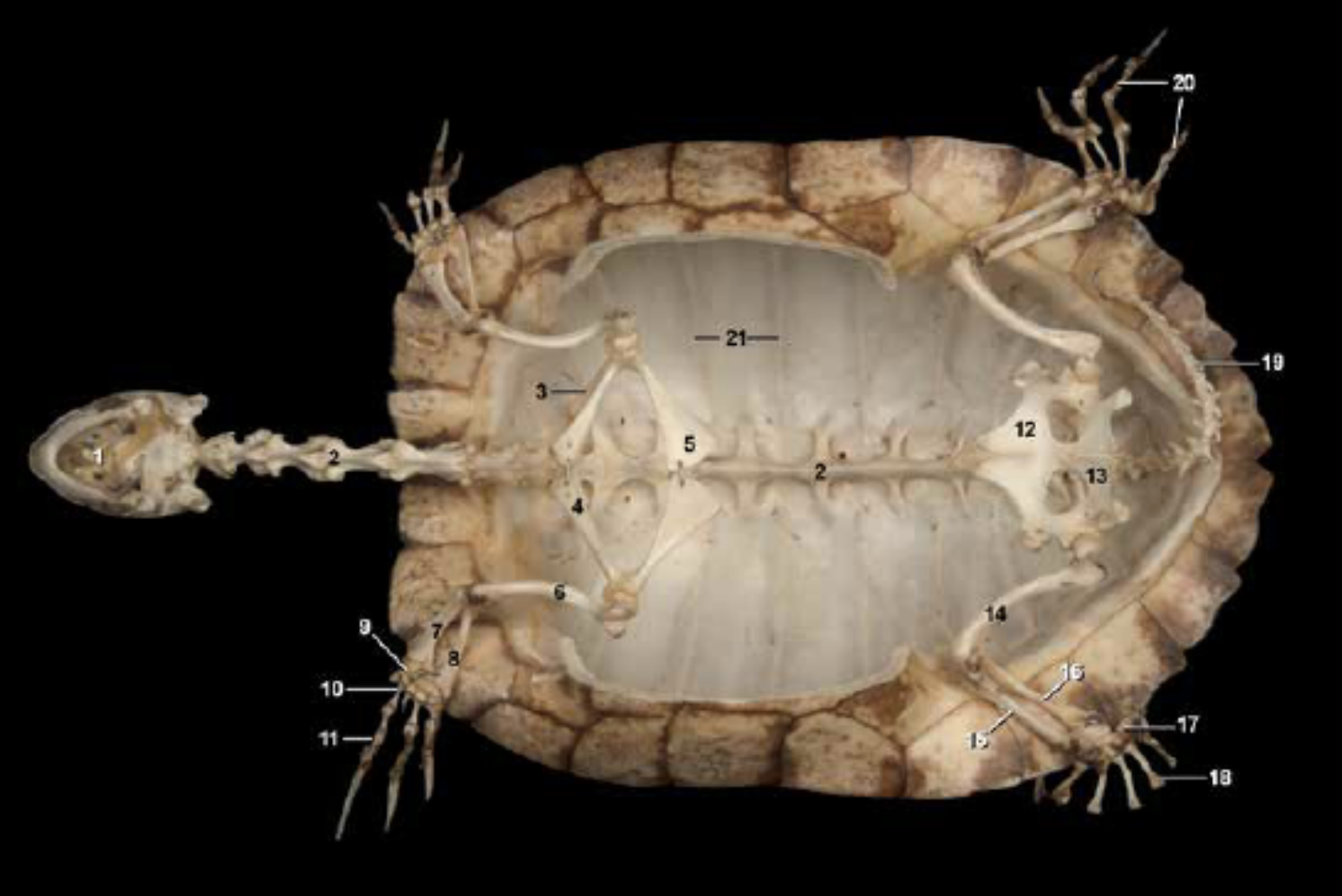
Name the element (15)
Tibia
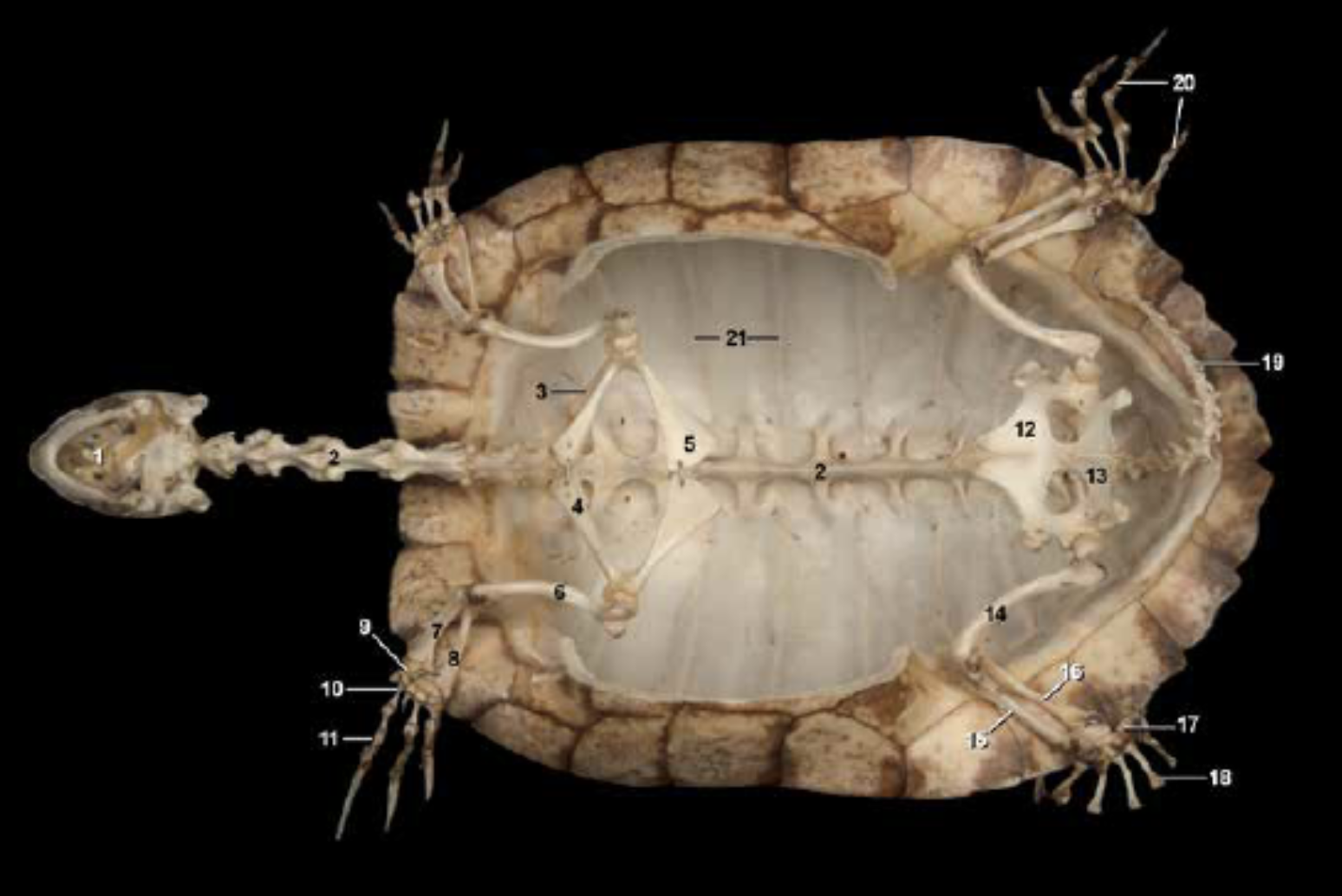
Name the element (16)
Fibula
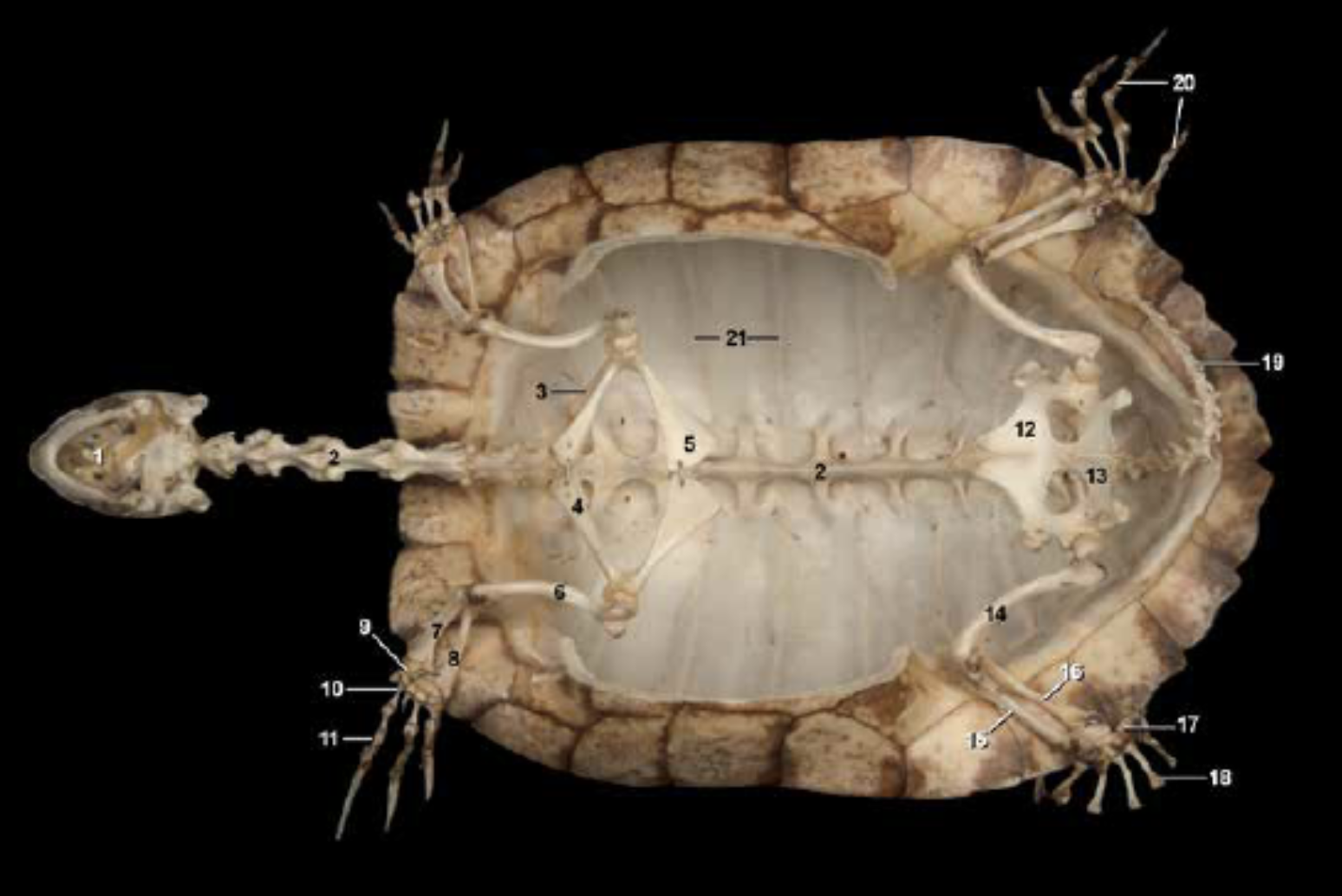
Name the element (17)
Tarsals

Name the element (18)
Metatarsals
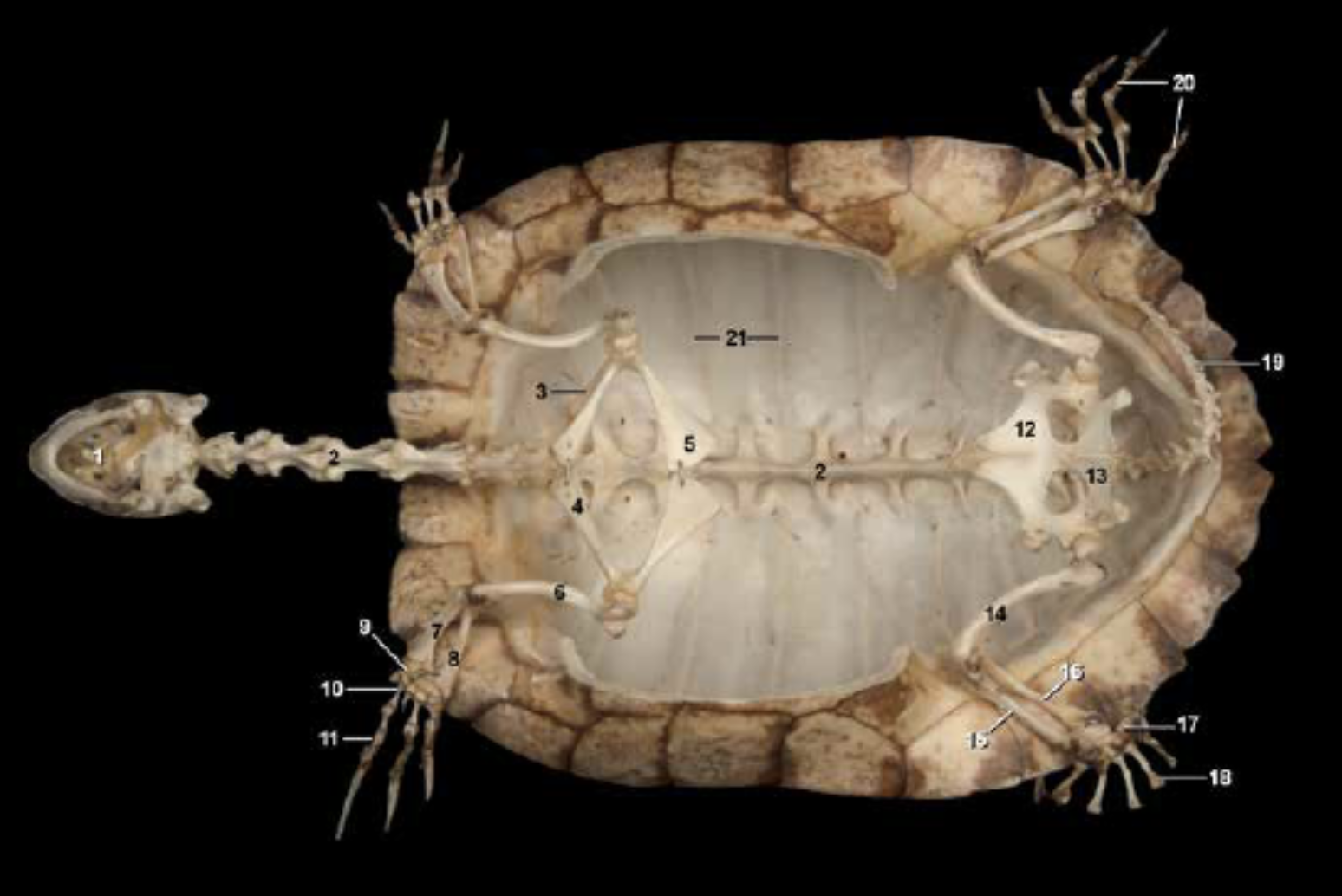
Name the element (19)
Caudal Vertebra
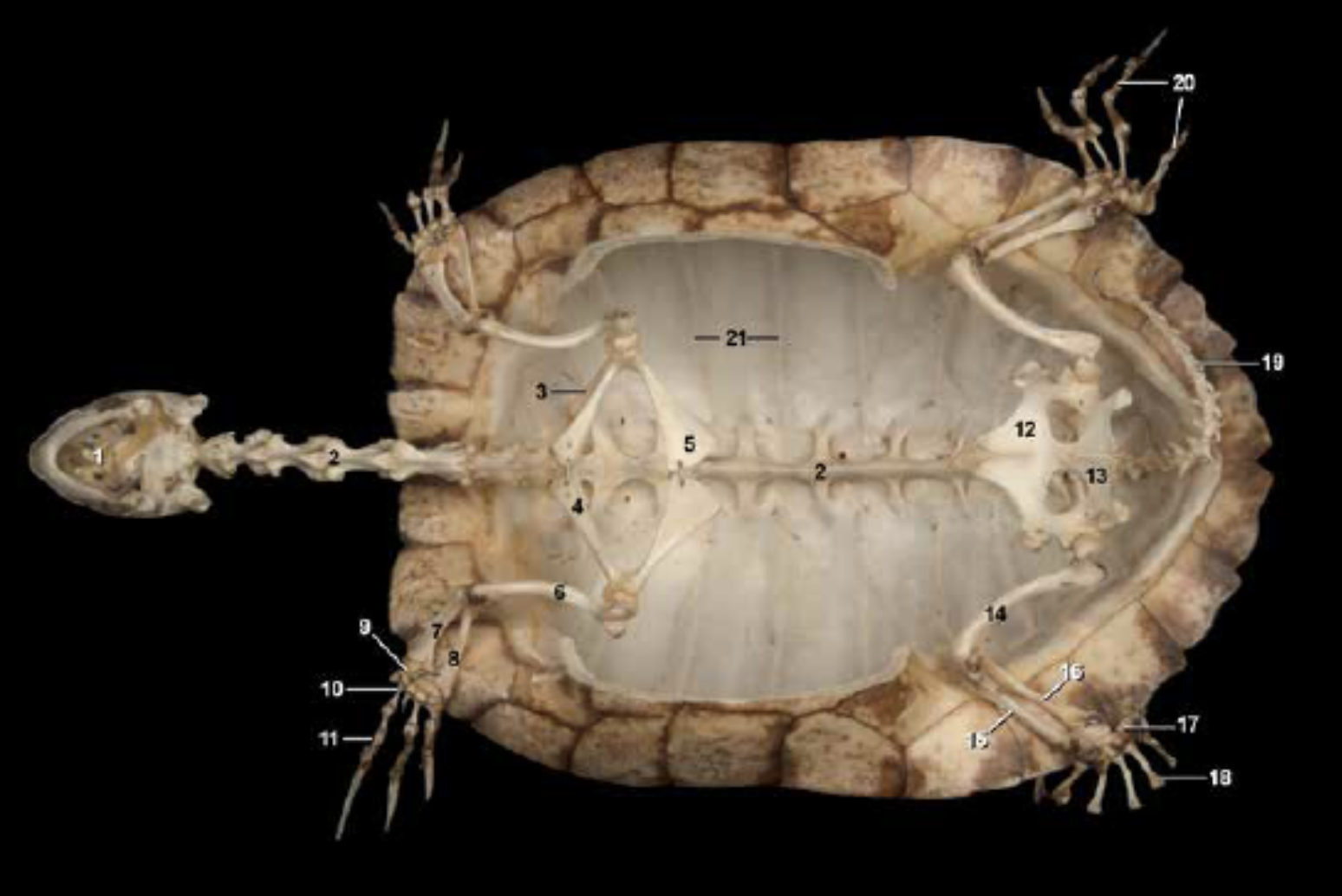
Name the element (20)
Phalanges
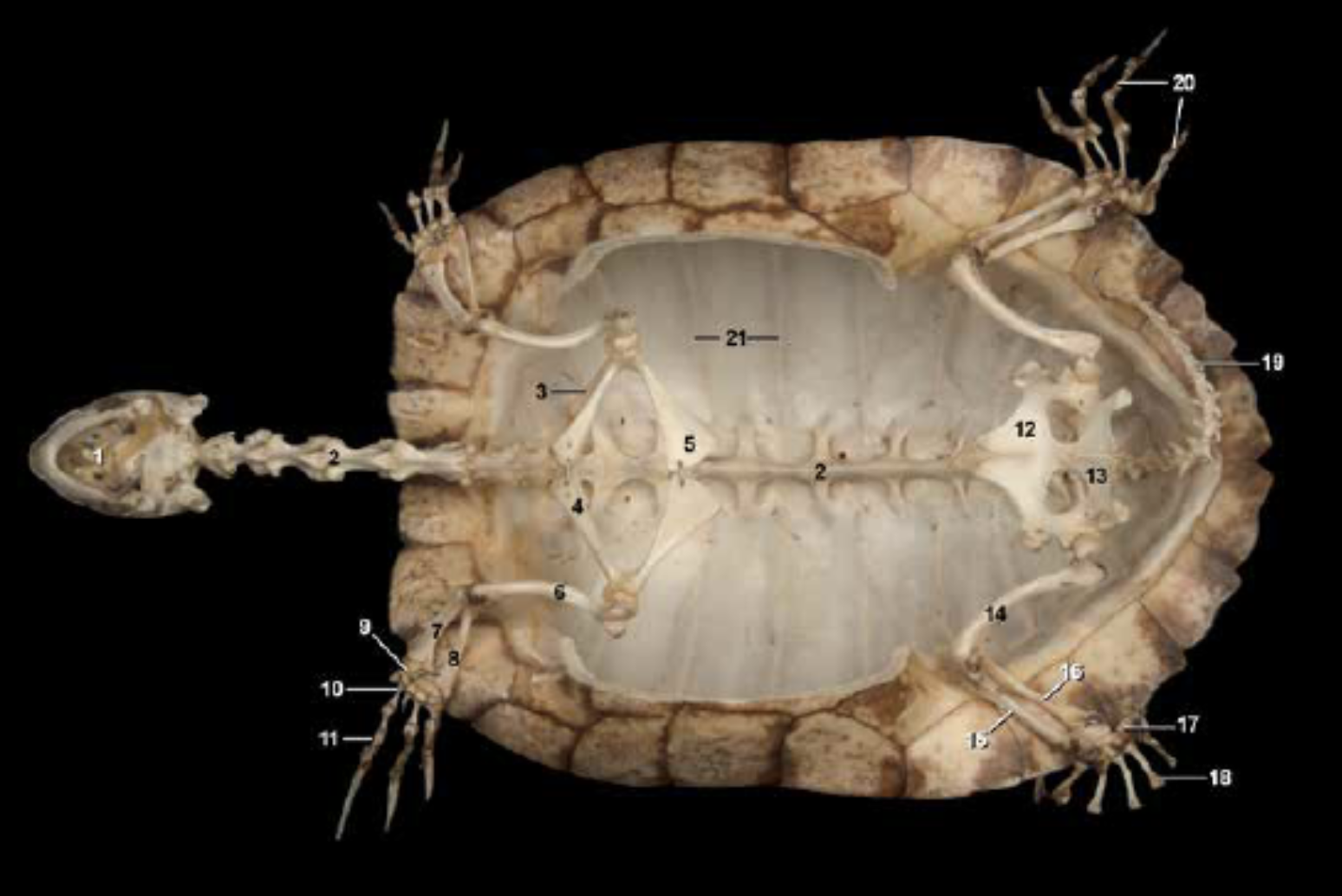
Name the element (21)
Ribs
What class do amphibians being to
Amphibia
What order to frogs belong to?
Anura
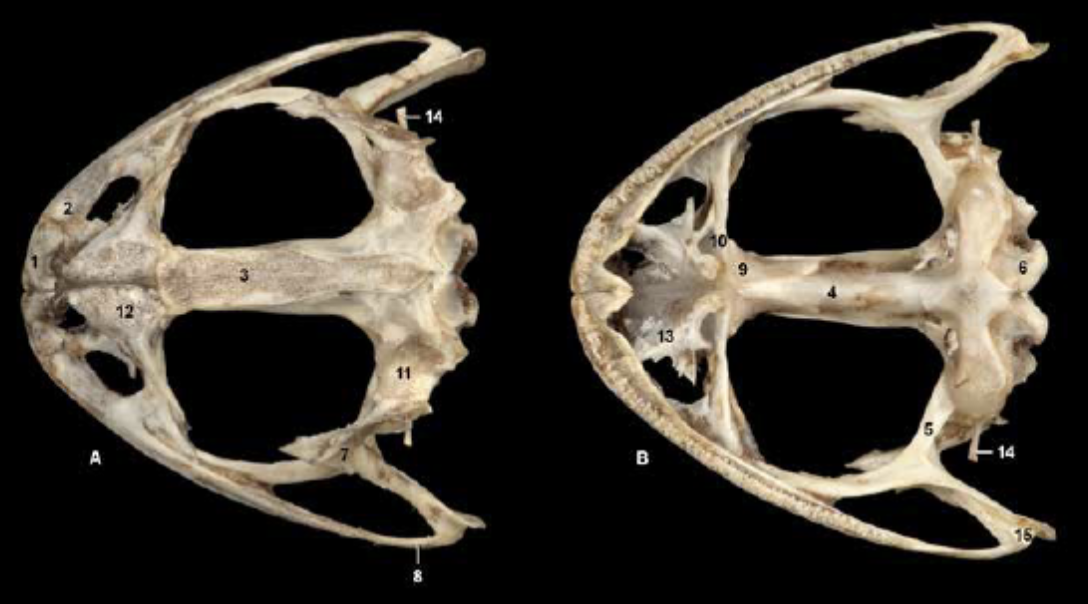
Name the element (1)
Premaxilla
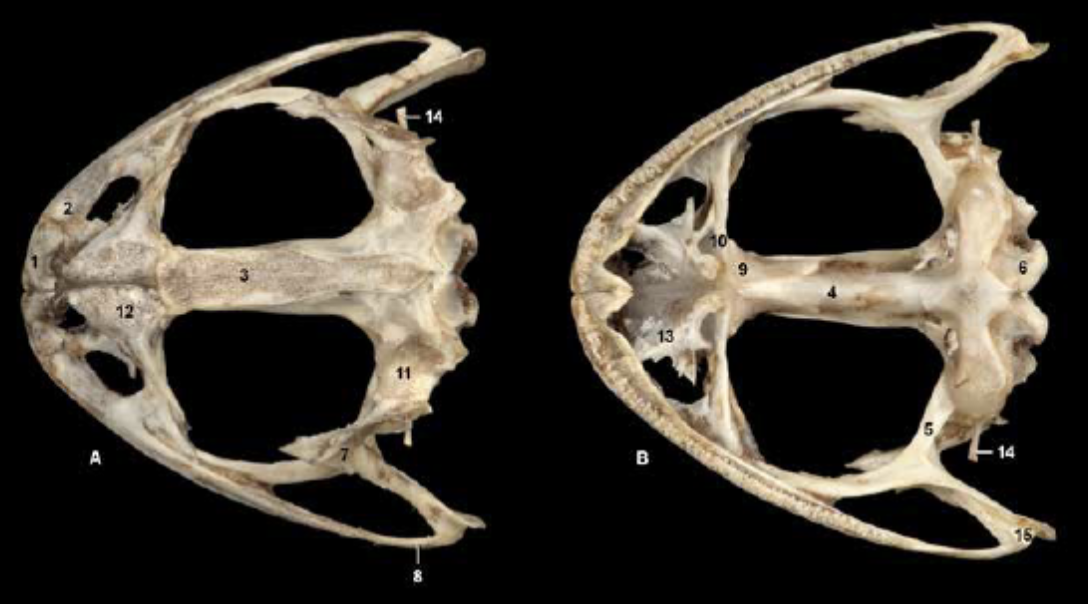
Name the element (2)
Maxilla
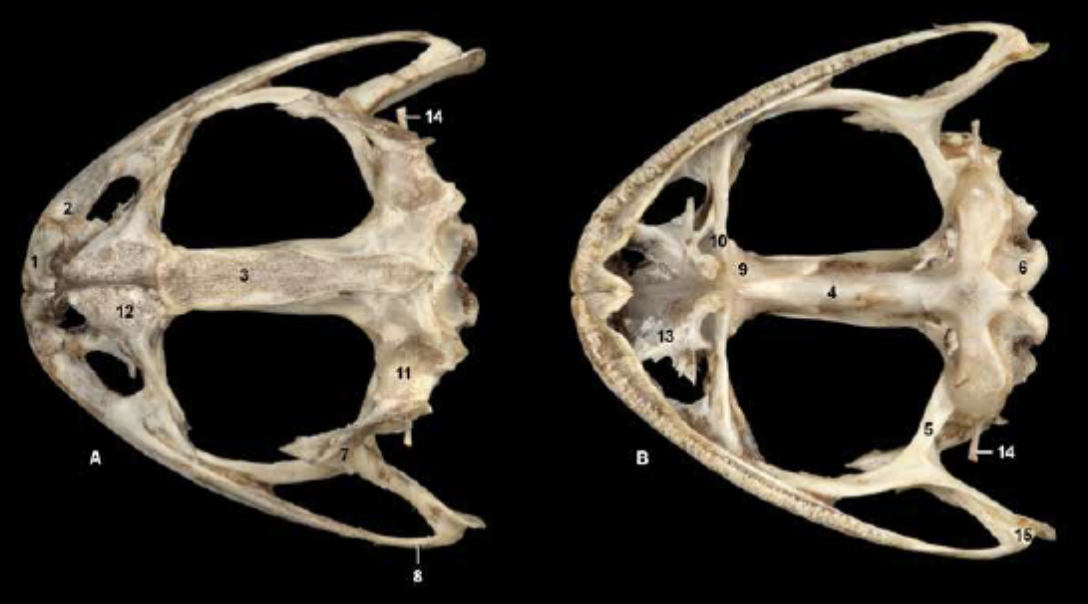
Name the element (3)
Fronto-parietal

Name the element (4)
Parasphenoid
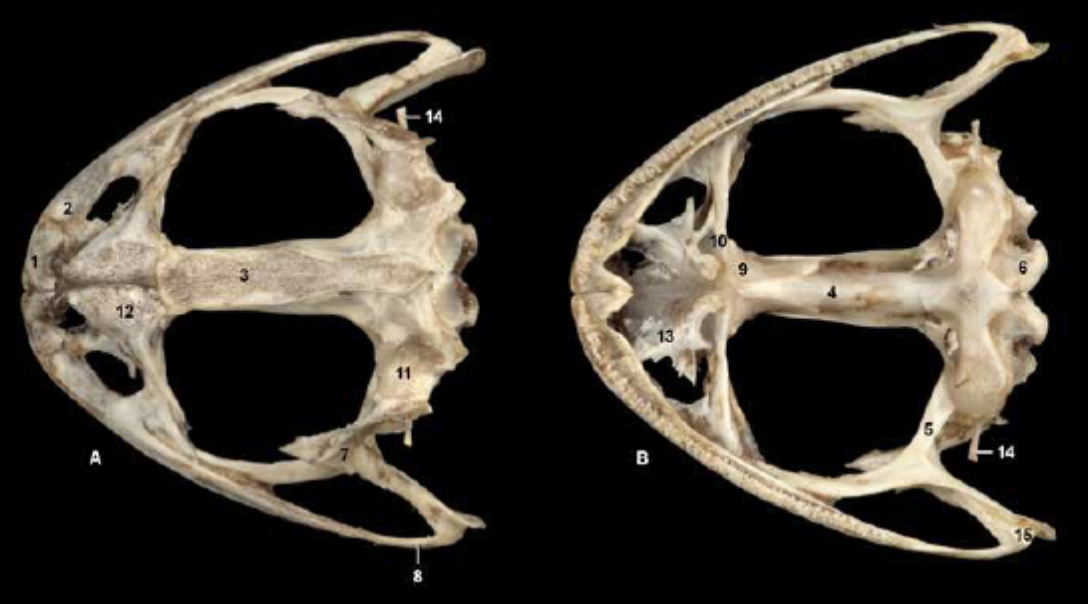
Name the element (5)
Pterygoid
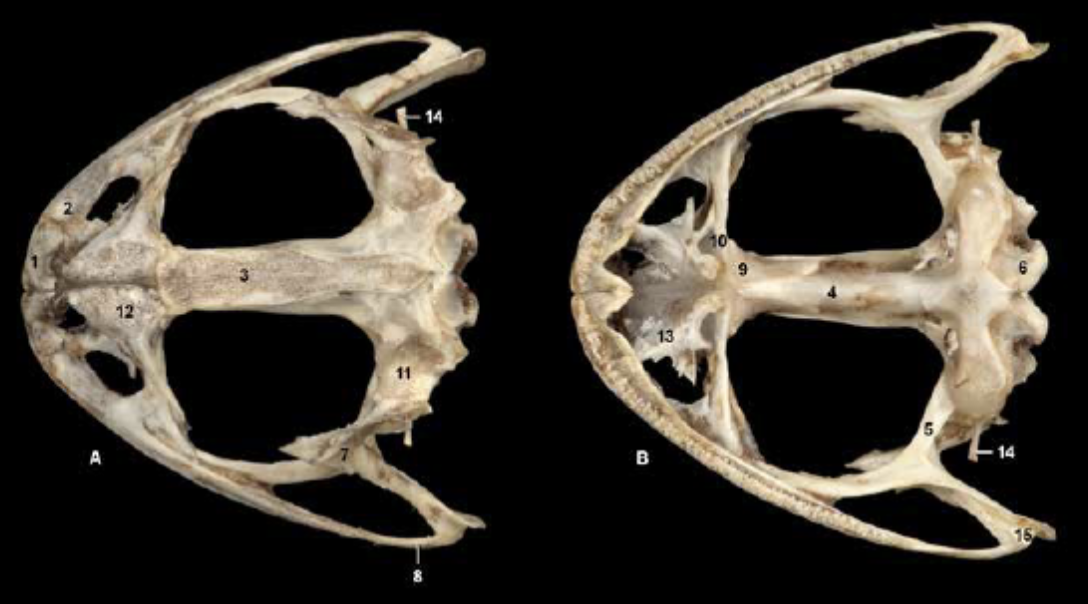
Name the element (6)
Exocciptial
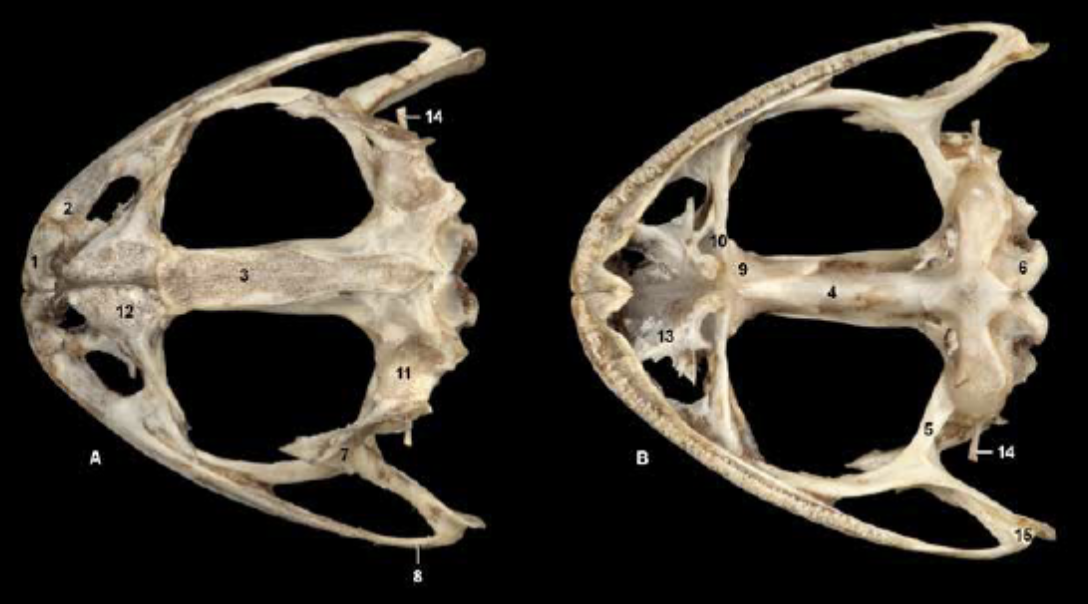
Name the element (7)
Squamosal
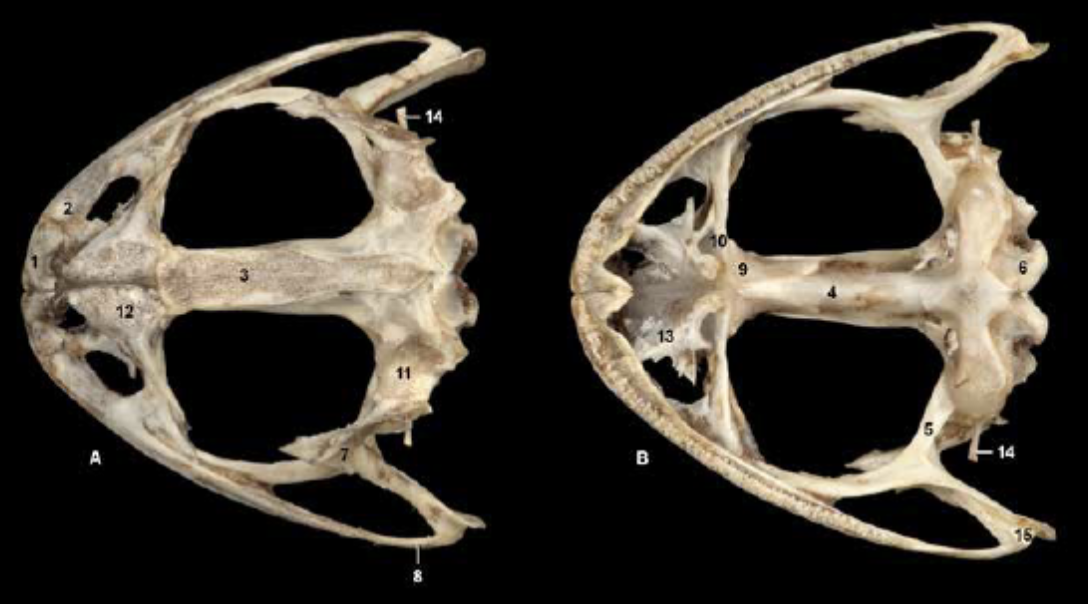
Name the element (8)
Quadratojugal
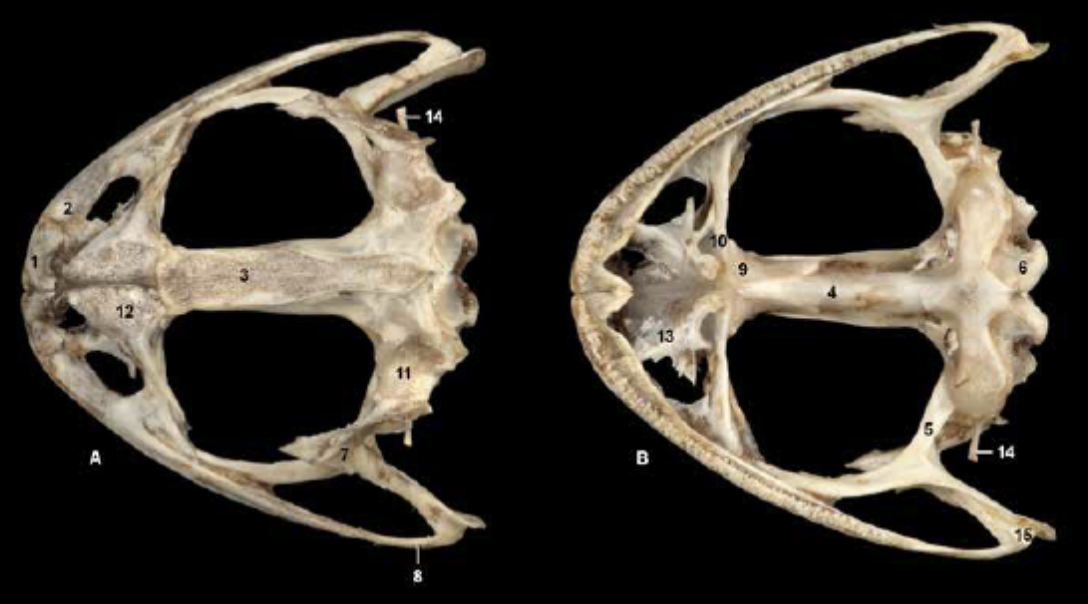
Name the element (9)
Ethmoid
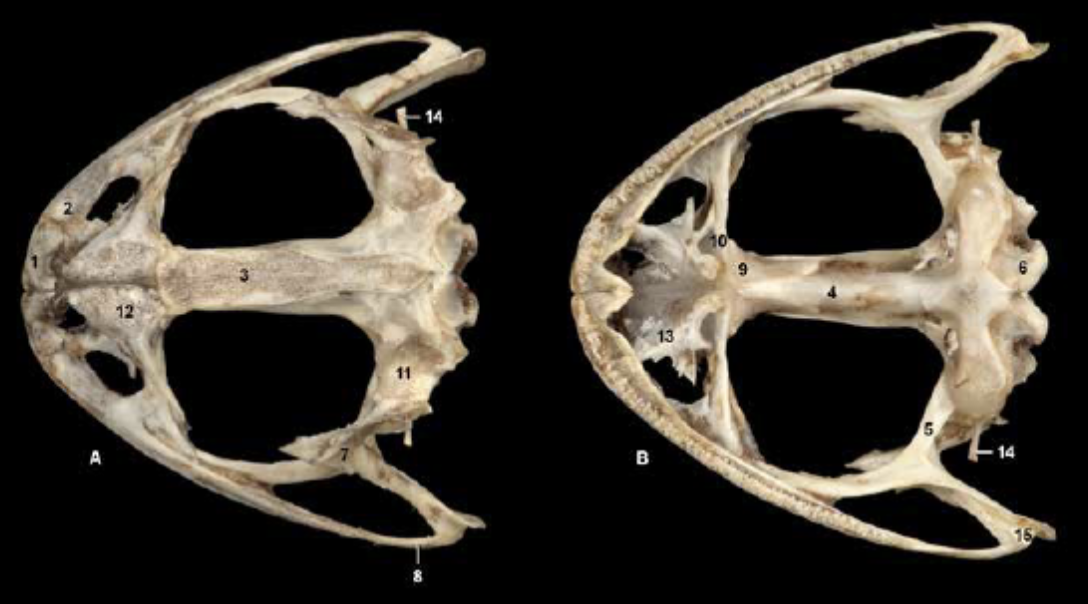
Name the element (10)
Palatine
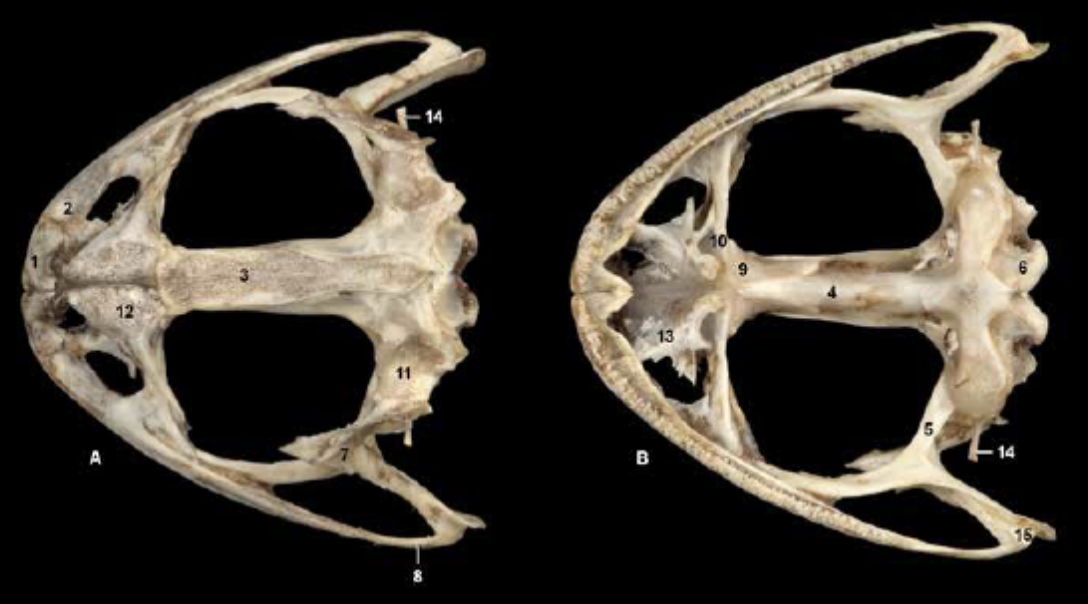
Name the element (11)
Prootic
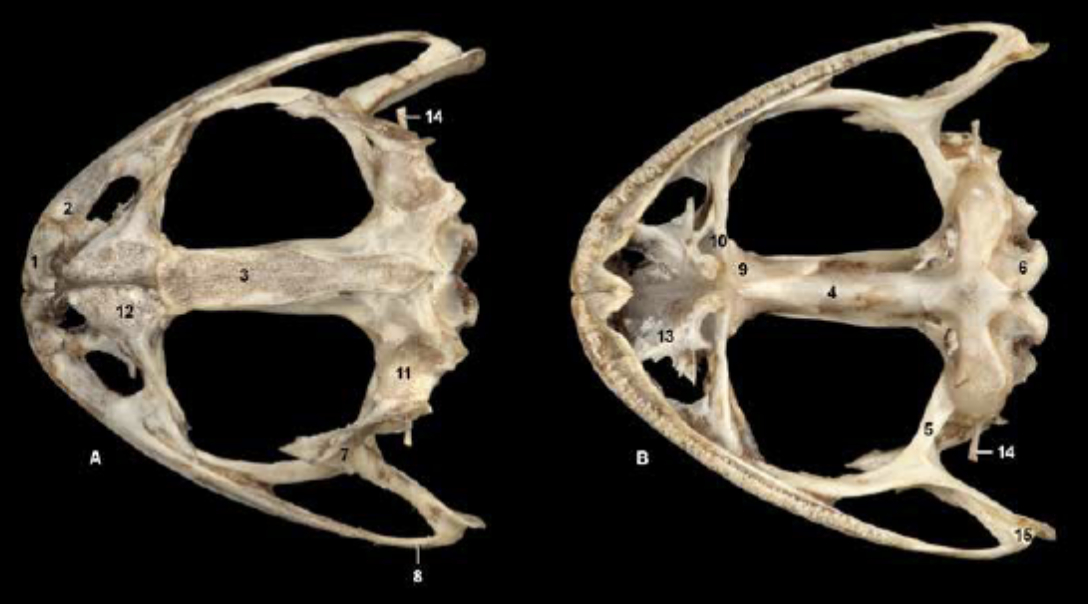
Name the element (12)
Nasal
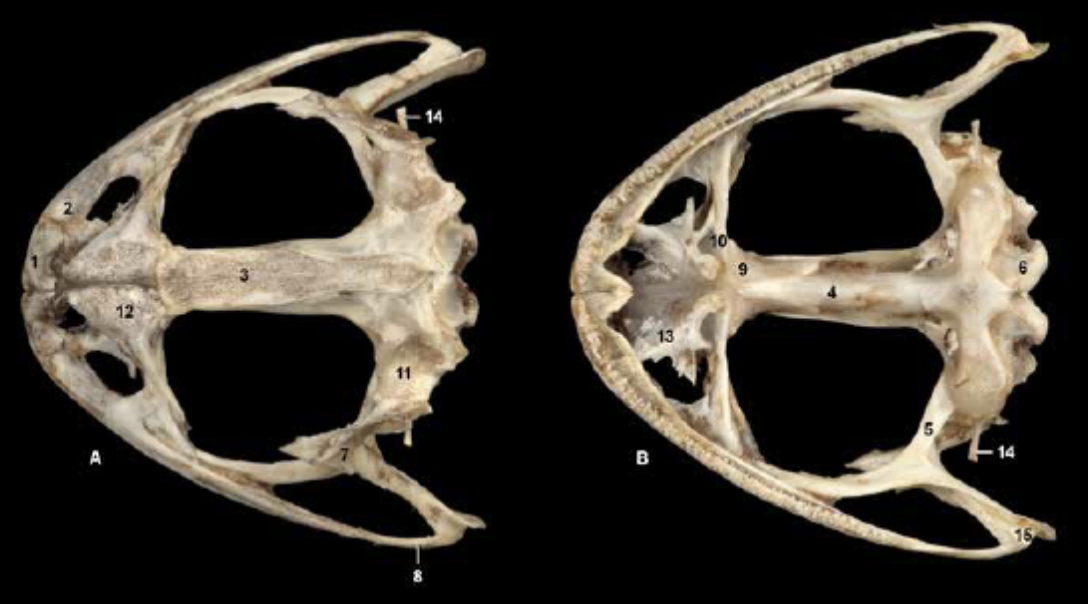
Name the element (13)
Vomer
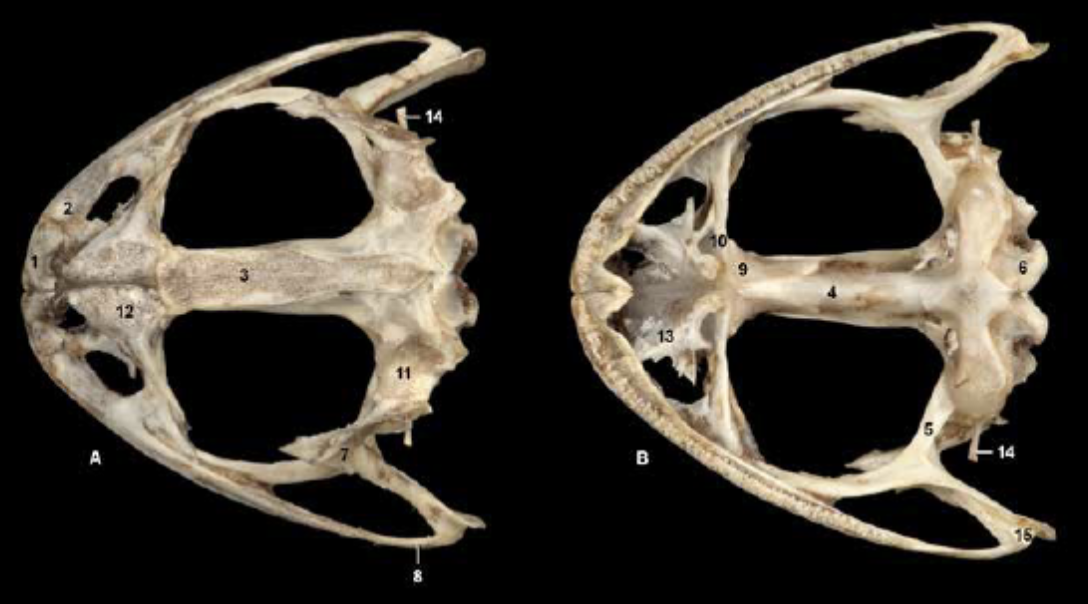
Name the element (14)
Columella
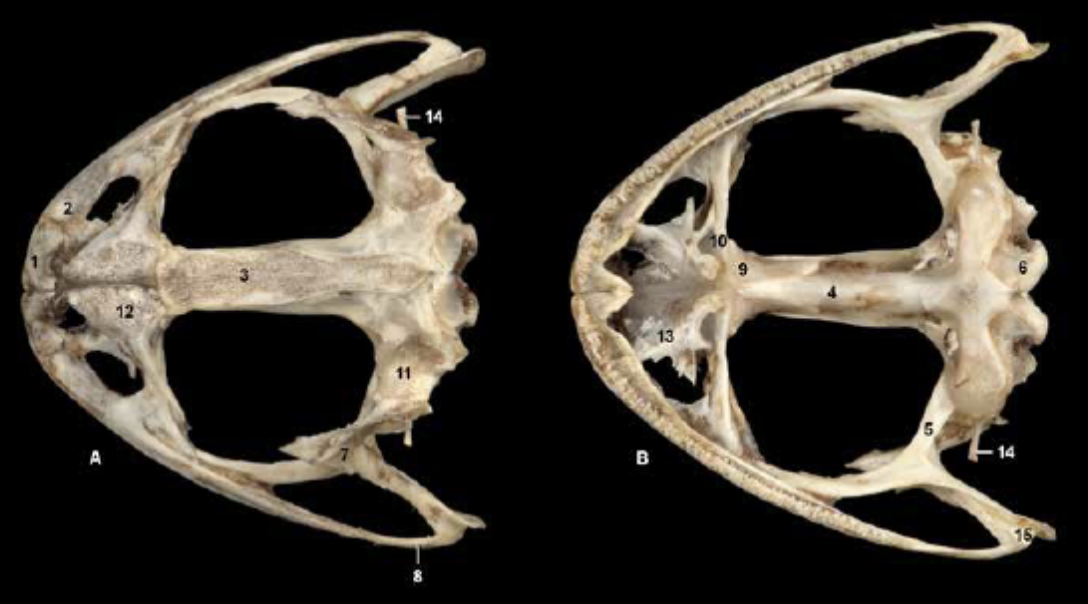
Name the element (15)
Quadrate
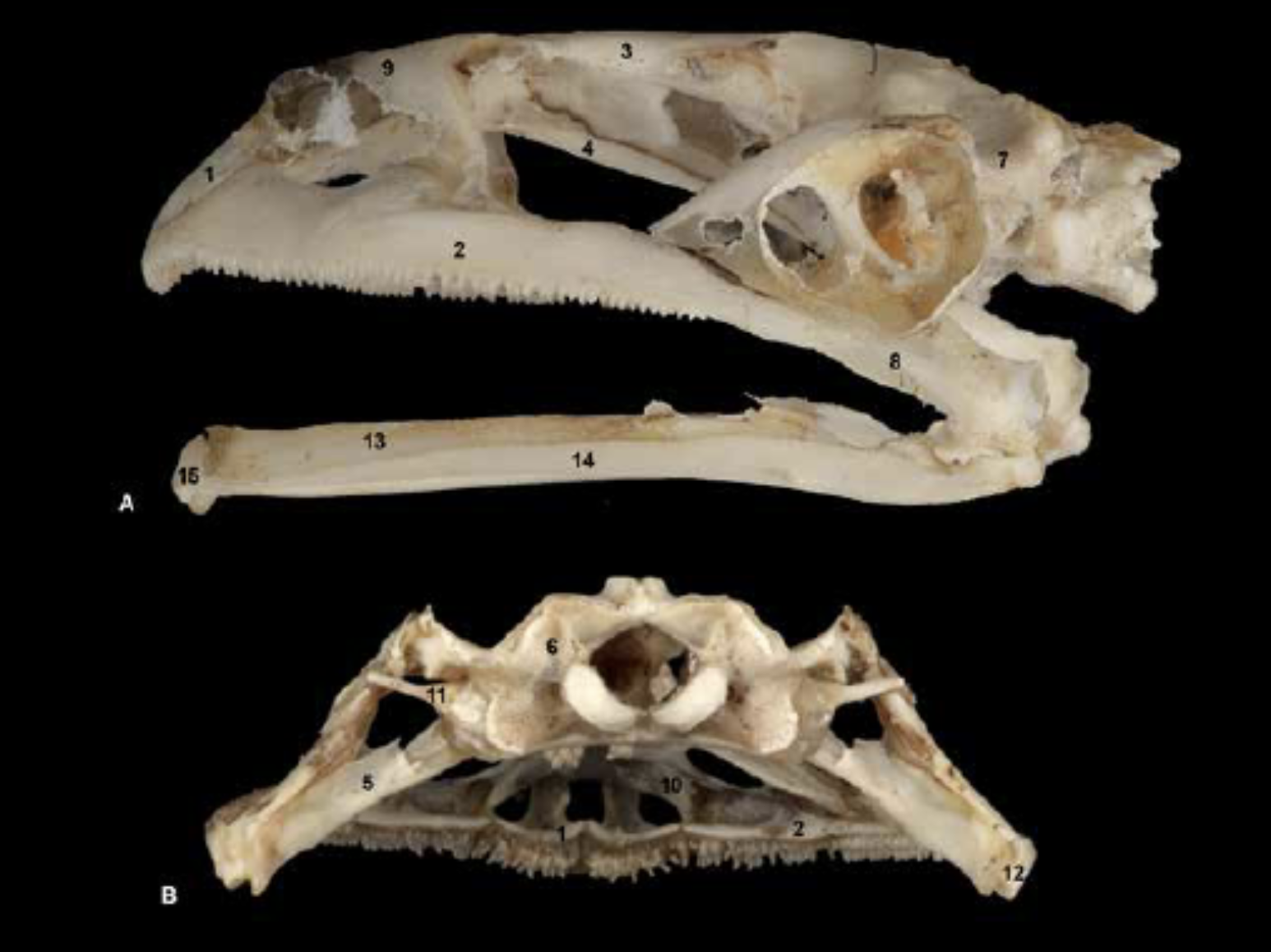
Name the element (1)
Premaxilla
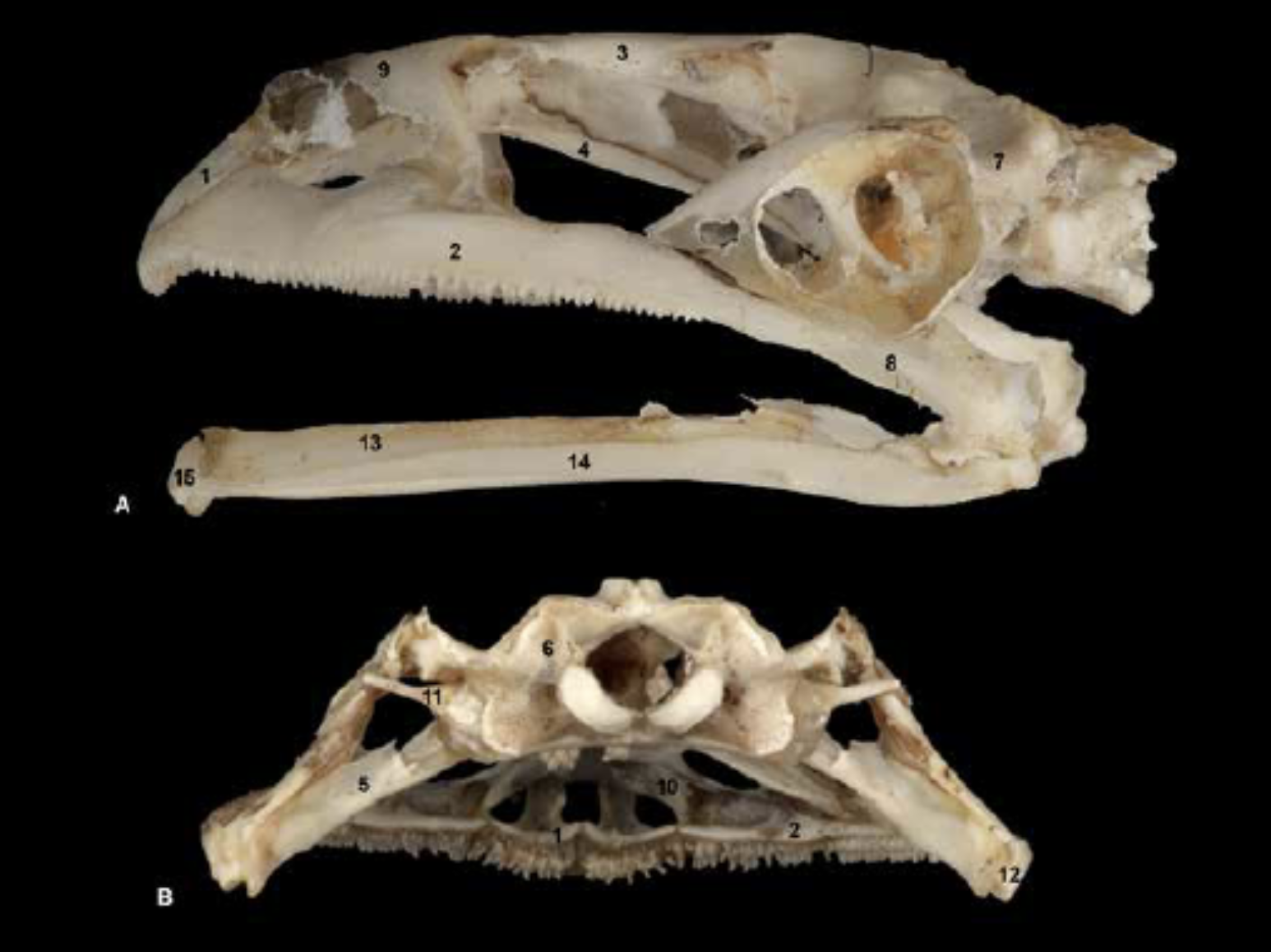
Name the element (2)
Maxilla

Name the element (3)
Fronto-parietal
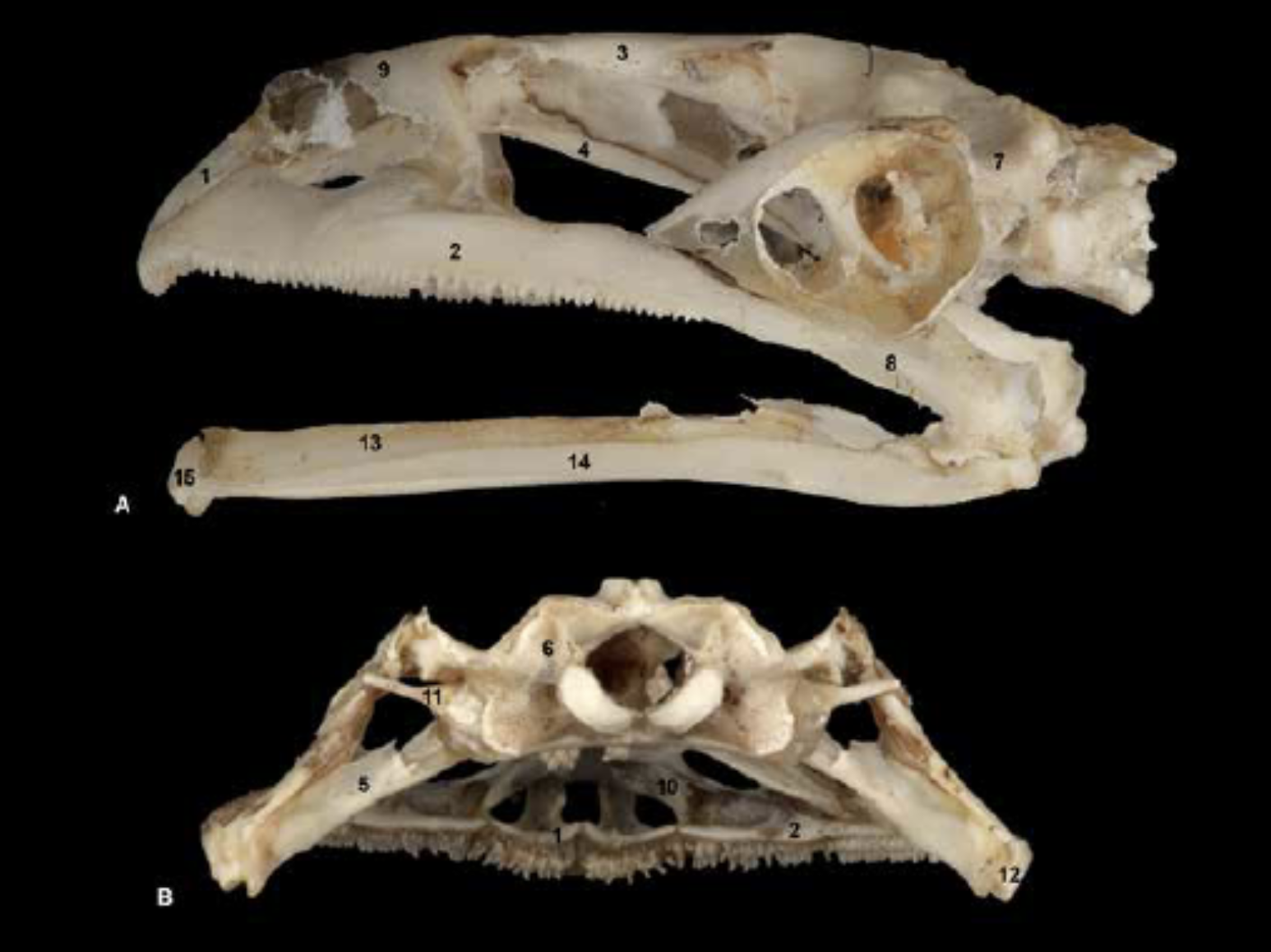
Name the element (4)
Parasphenoid
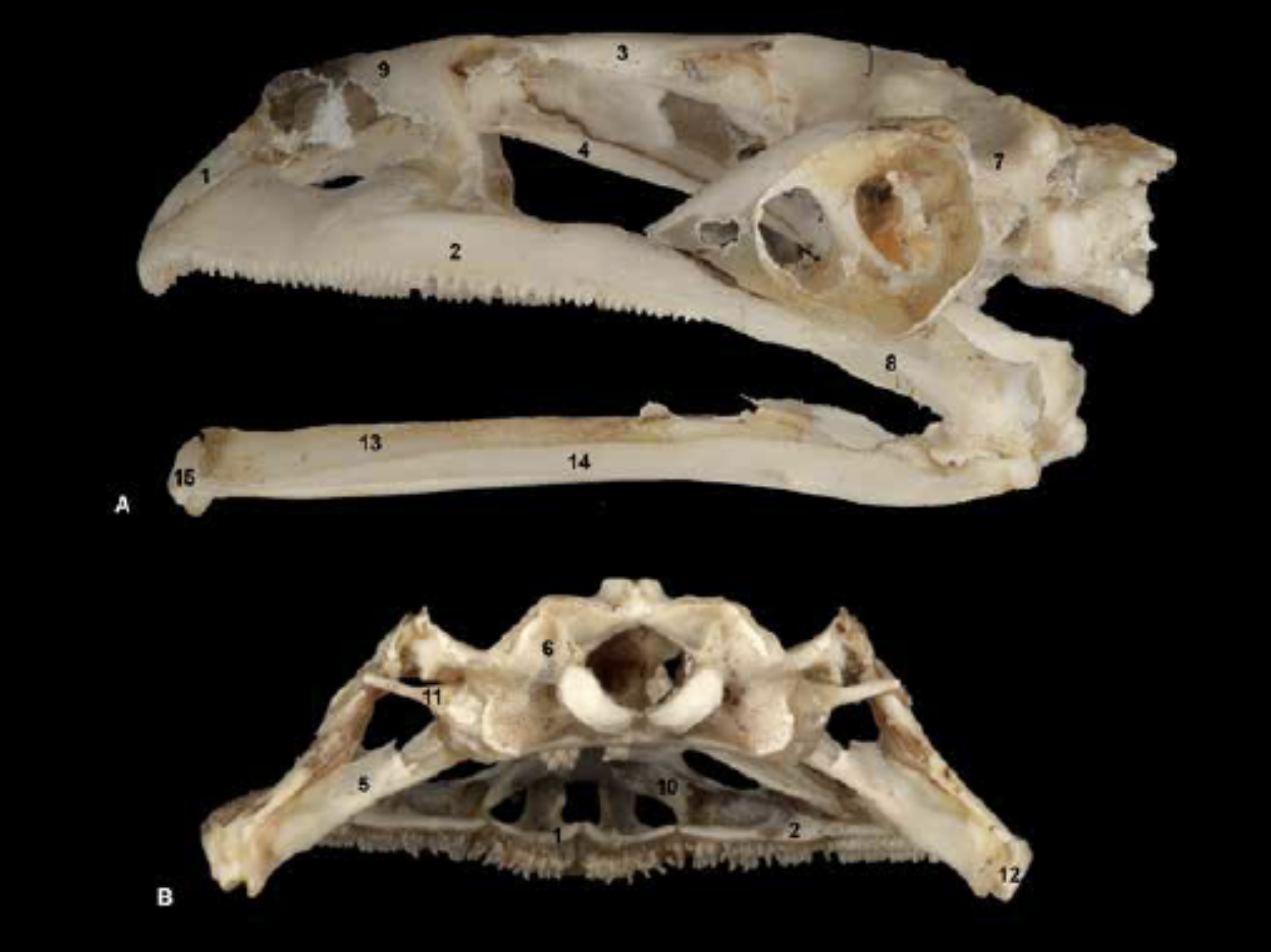
Name the element (5)
Pterygoid

Name the element (6)
Exoccipital
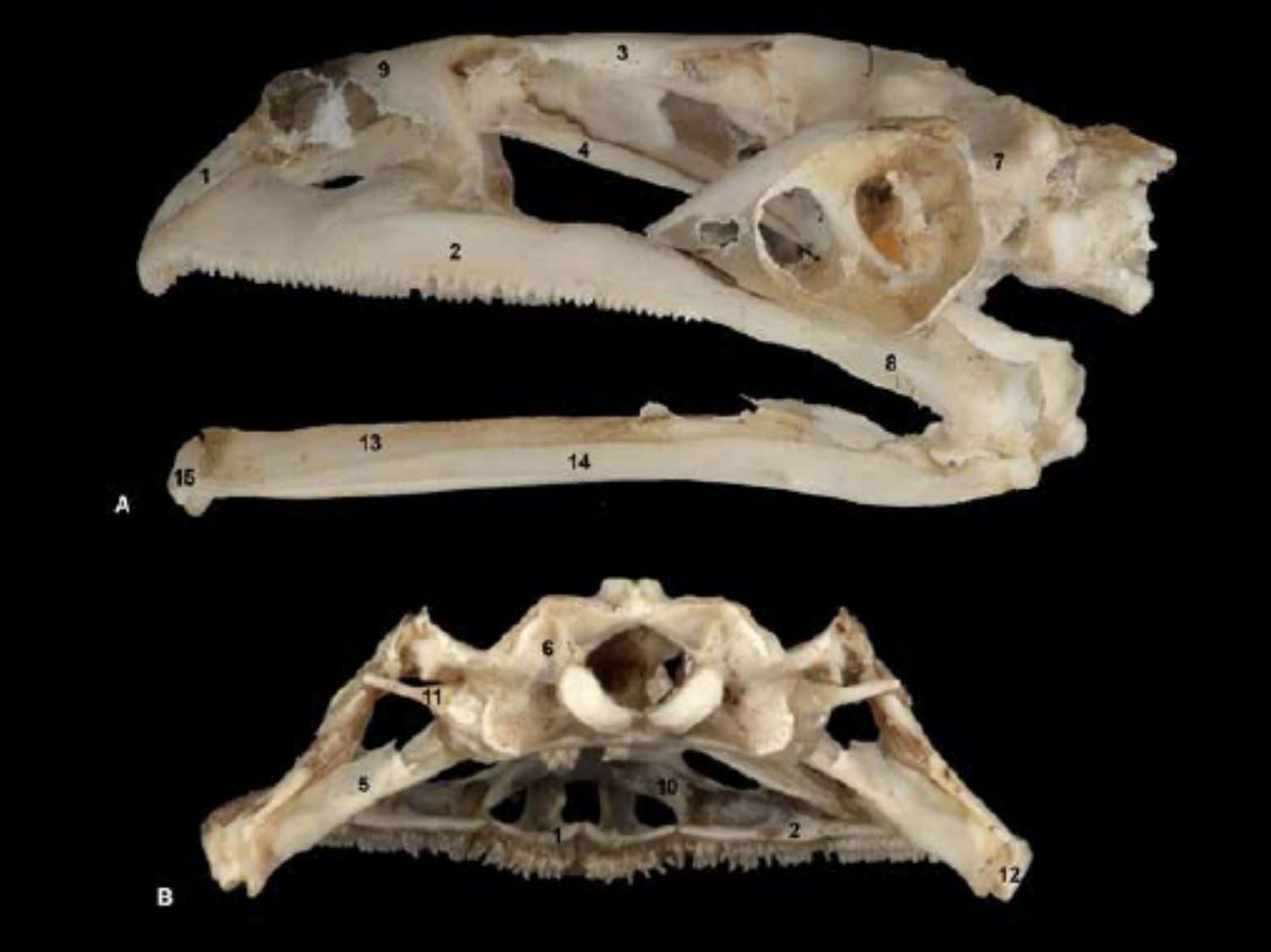
Name the element (7)
Squamosal
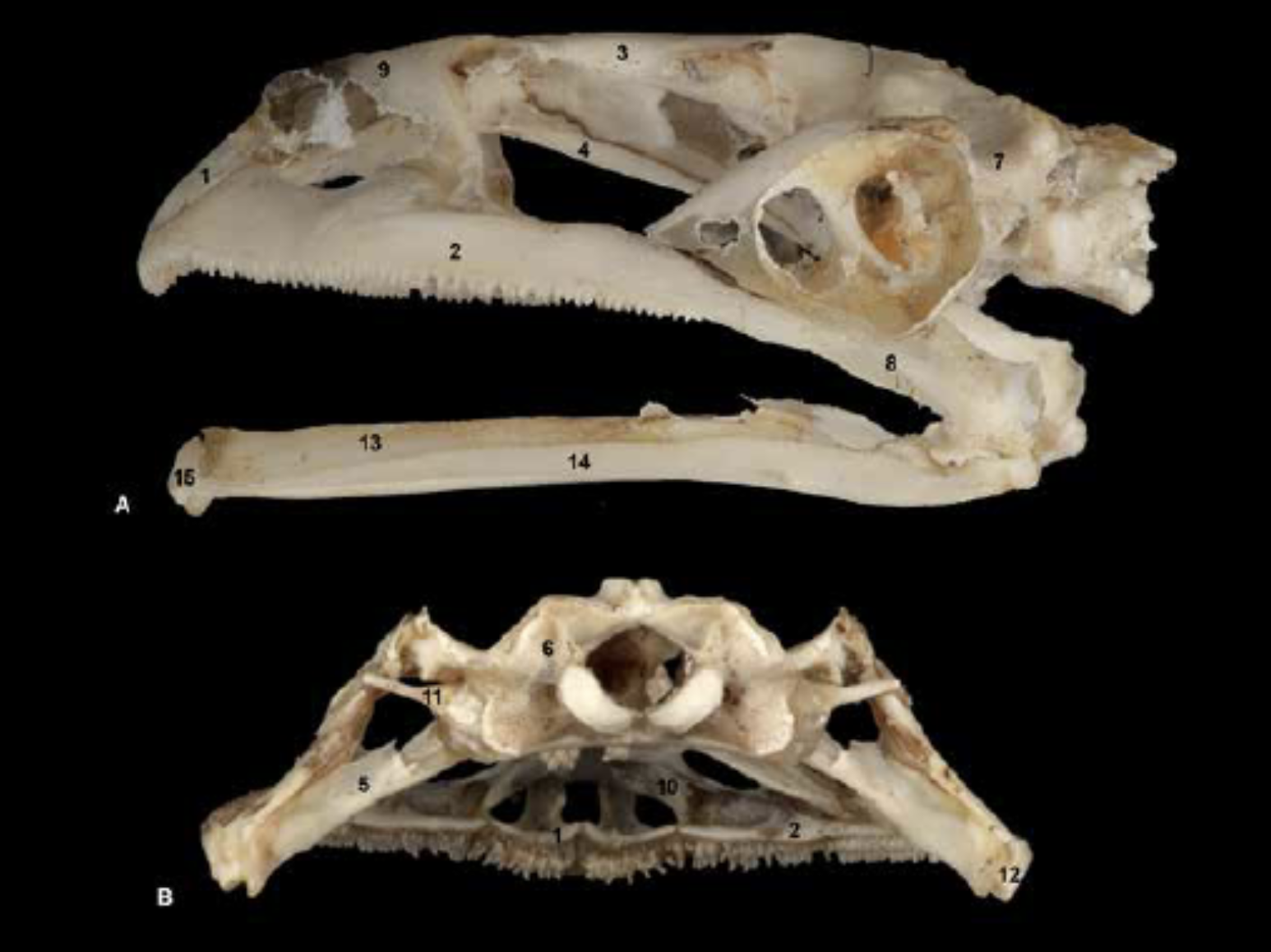
Name the element (8)
Quadratojugal
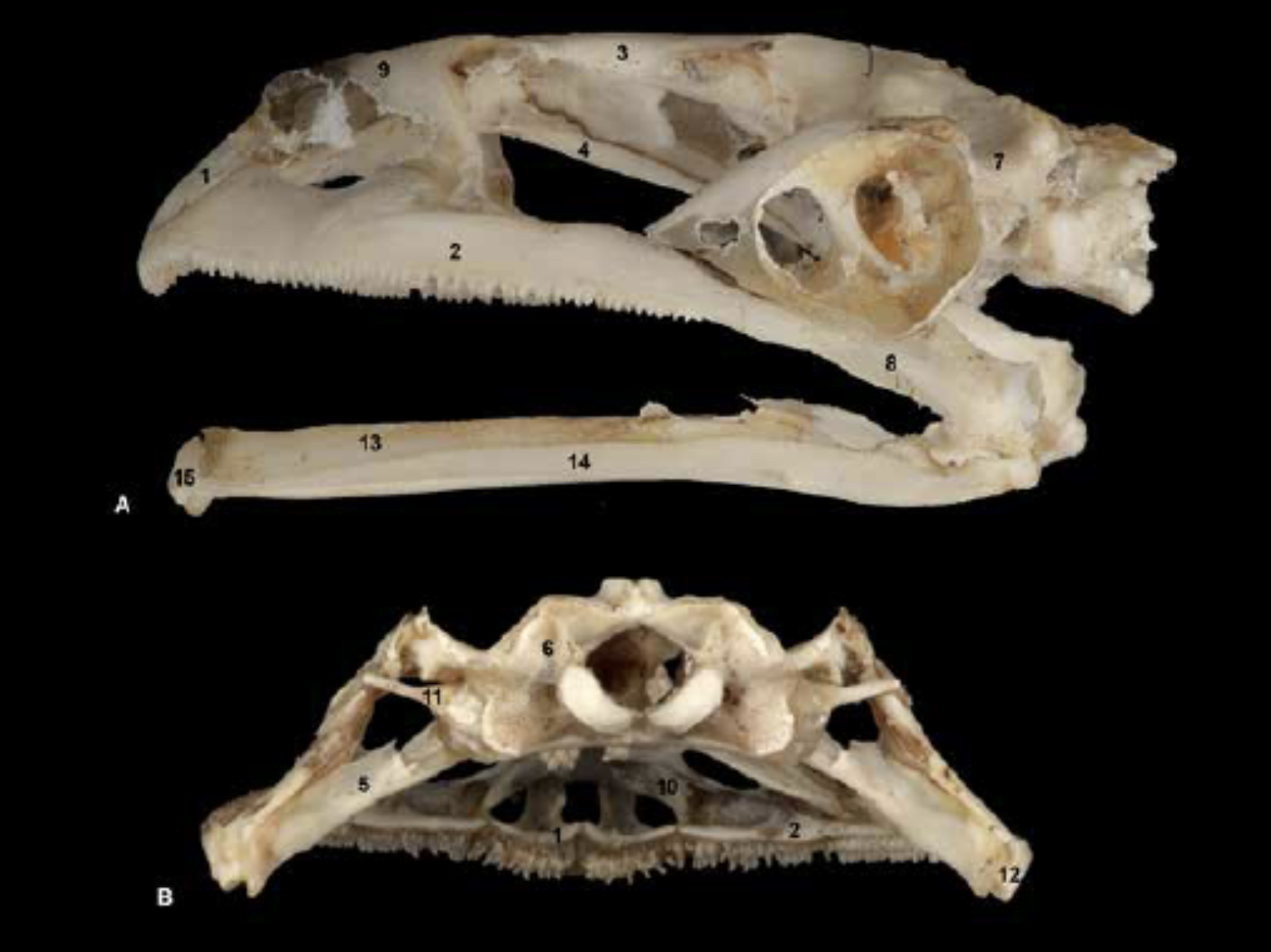
Name the element (9)
Nasal
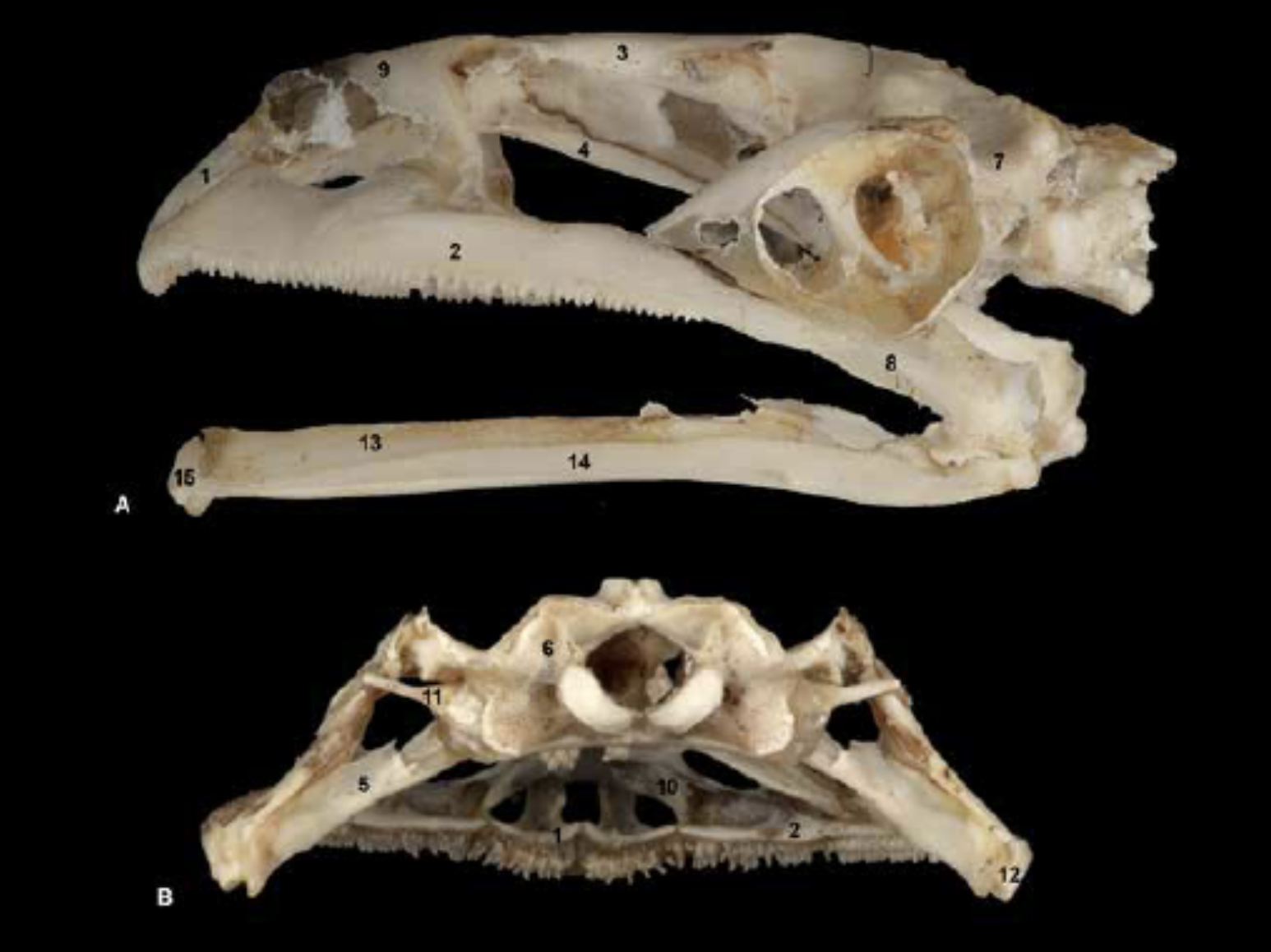
Name the element (10)
Vomer
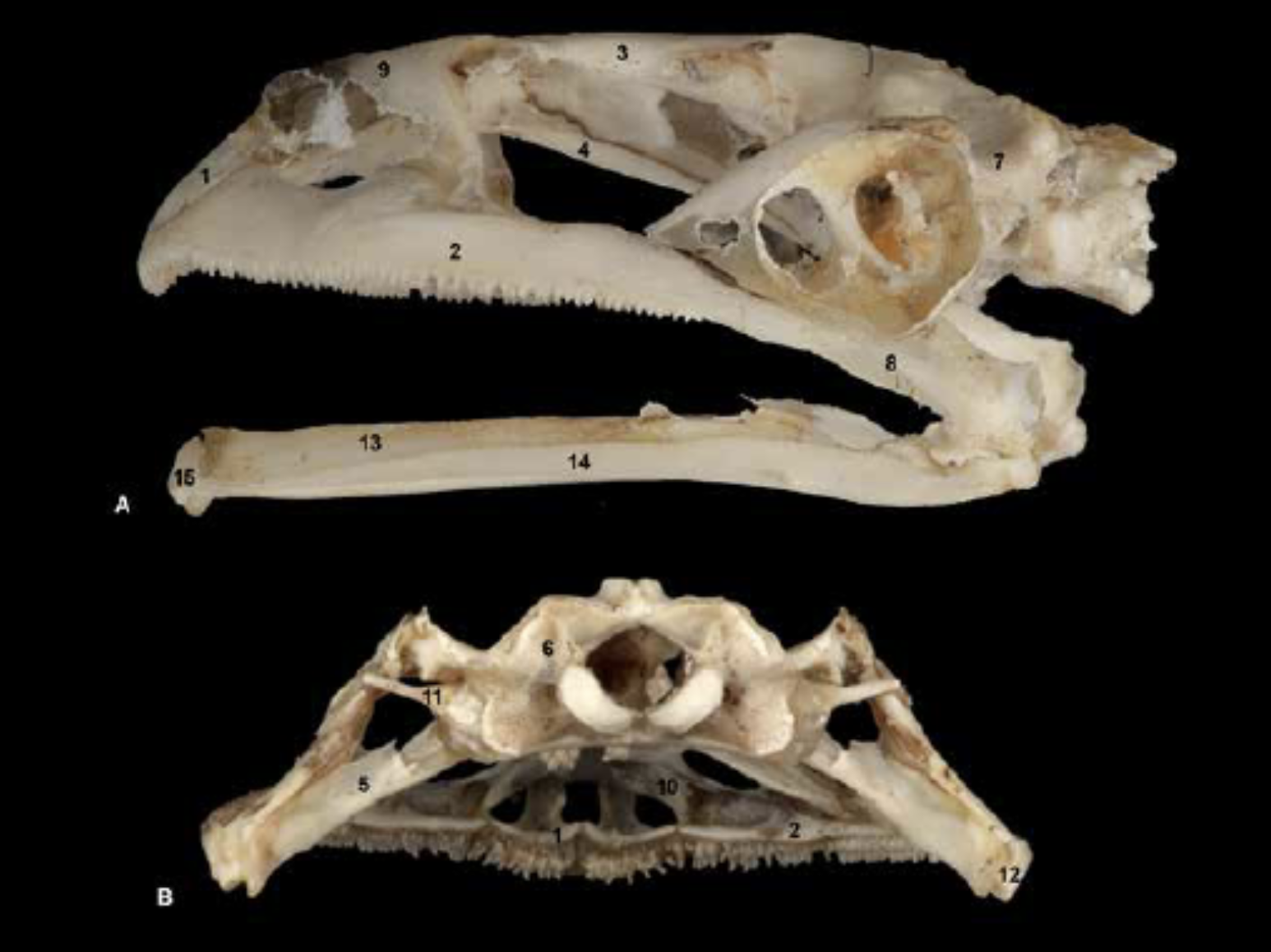
Name the element (11)
Columella
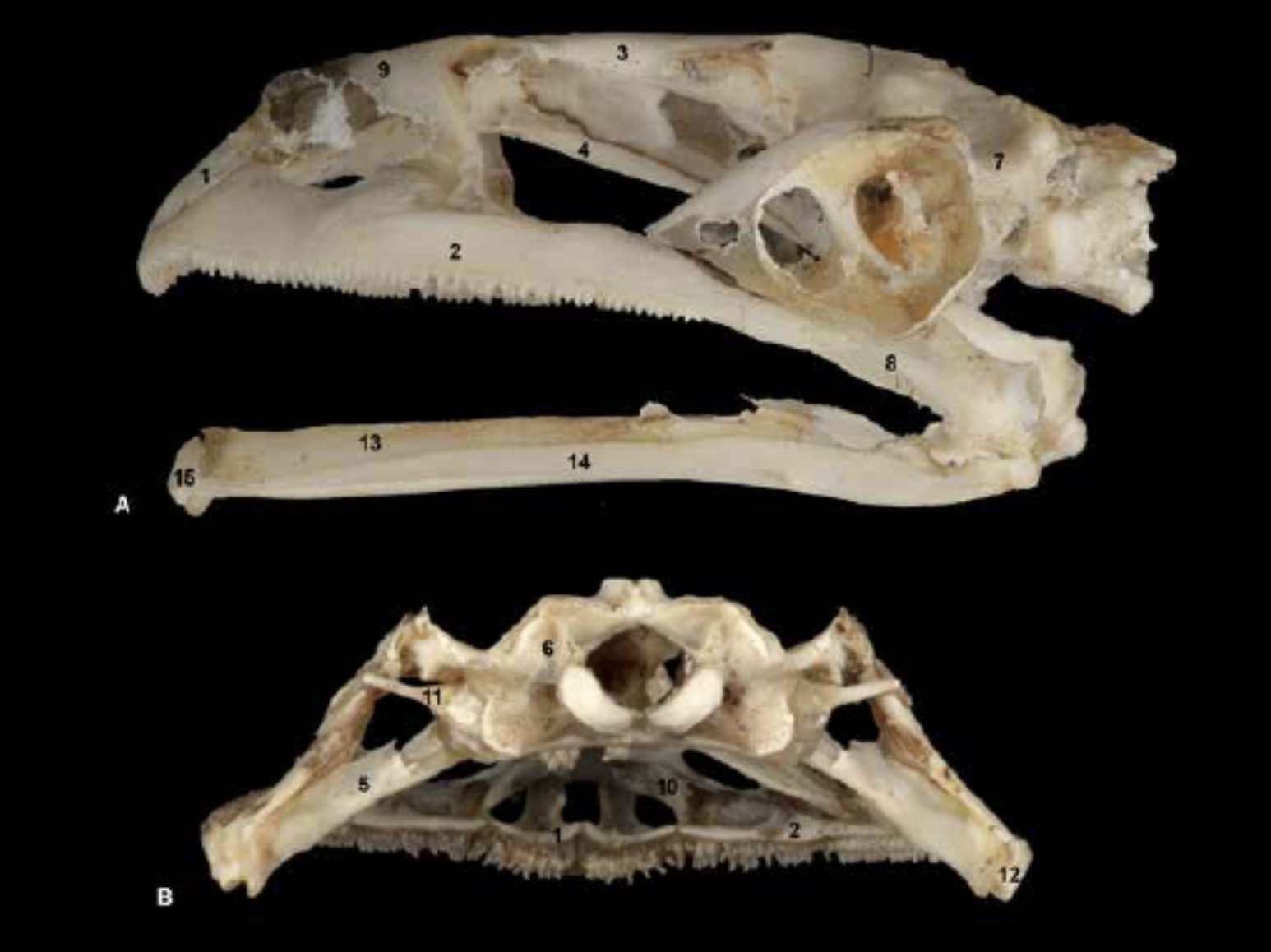
Name the element (12)
Quadrate
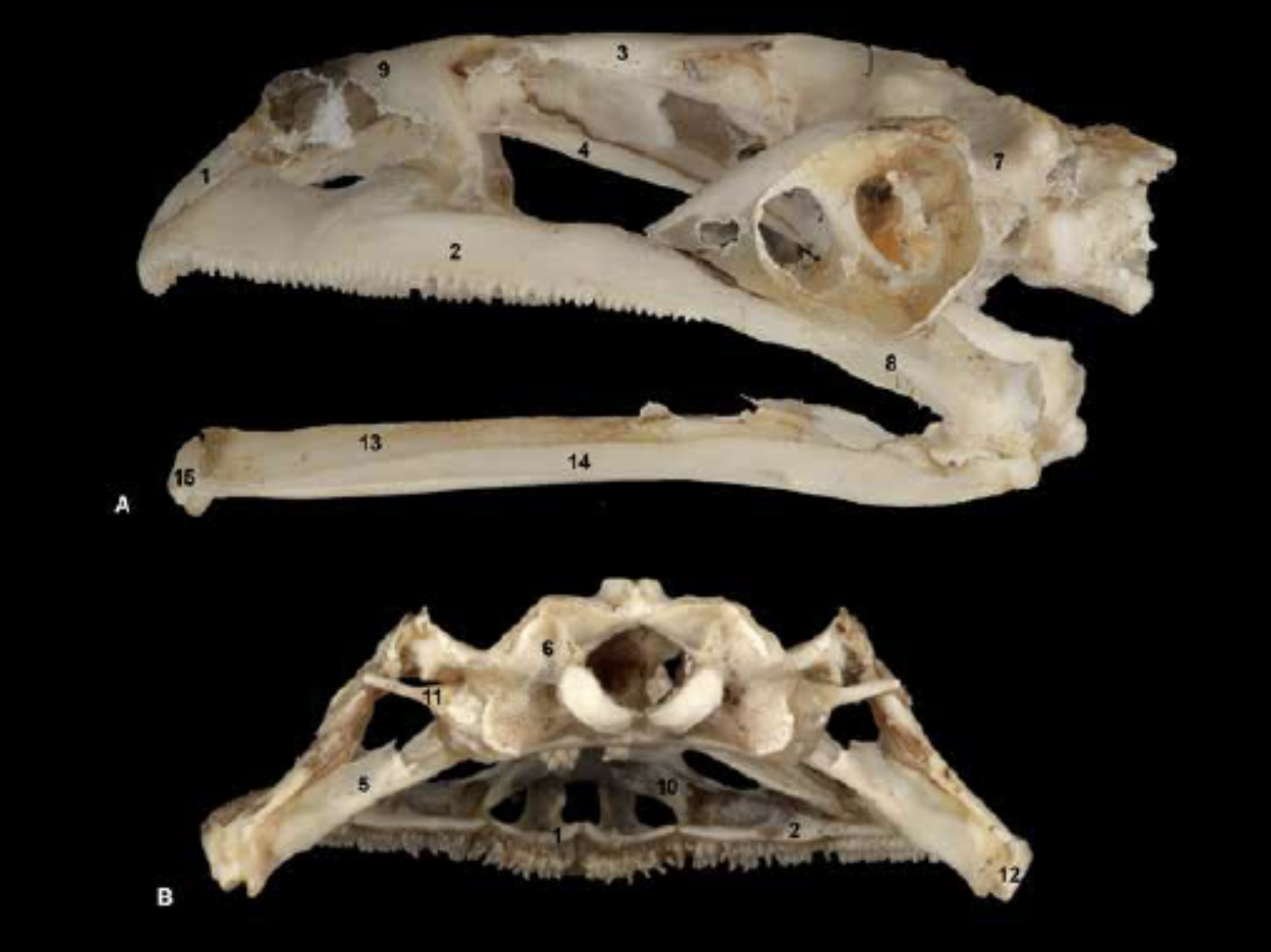
Name the element (13)
Dentary
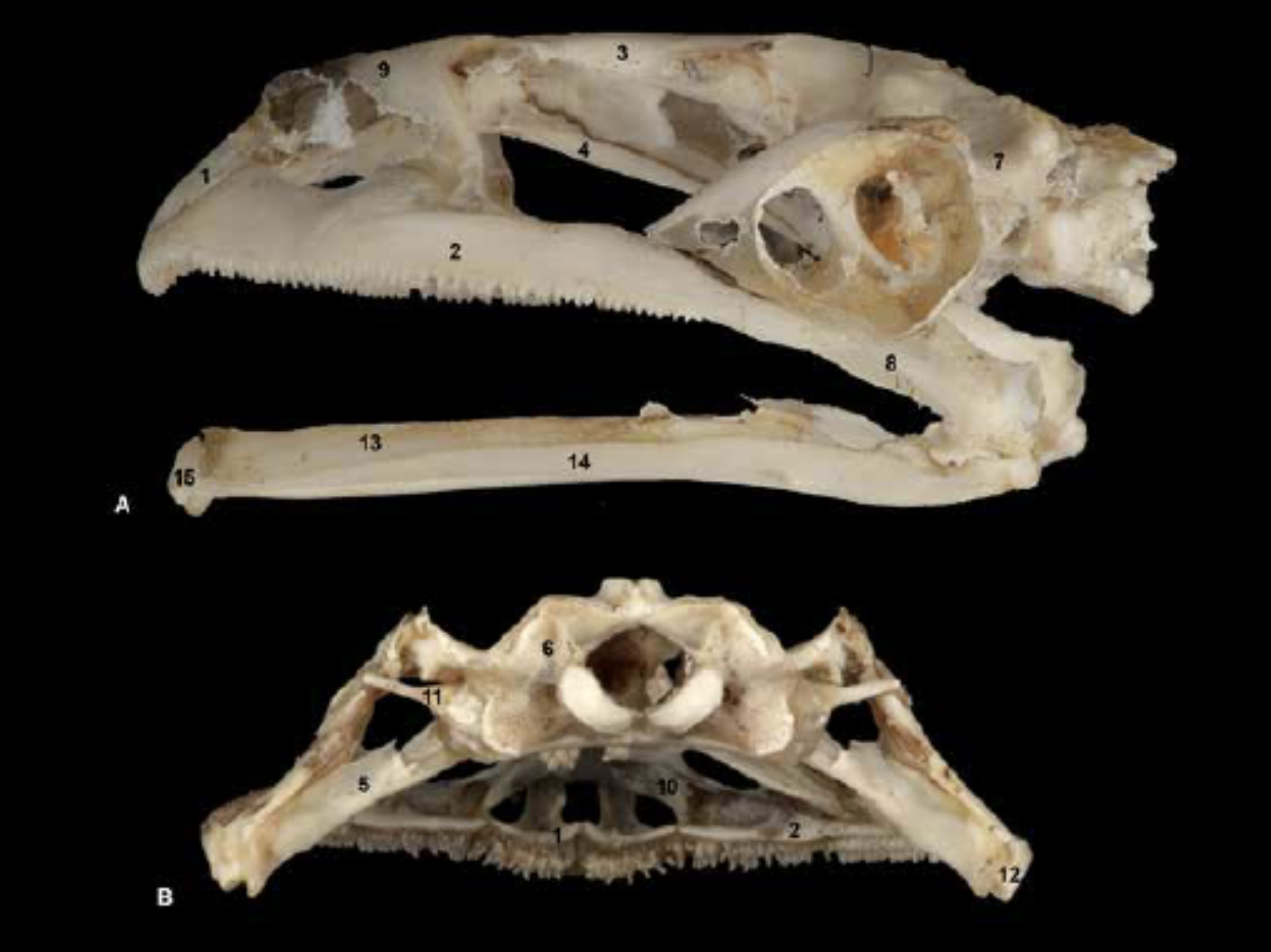
Name the element (14)
Dentary
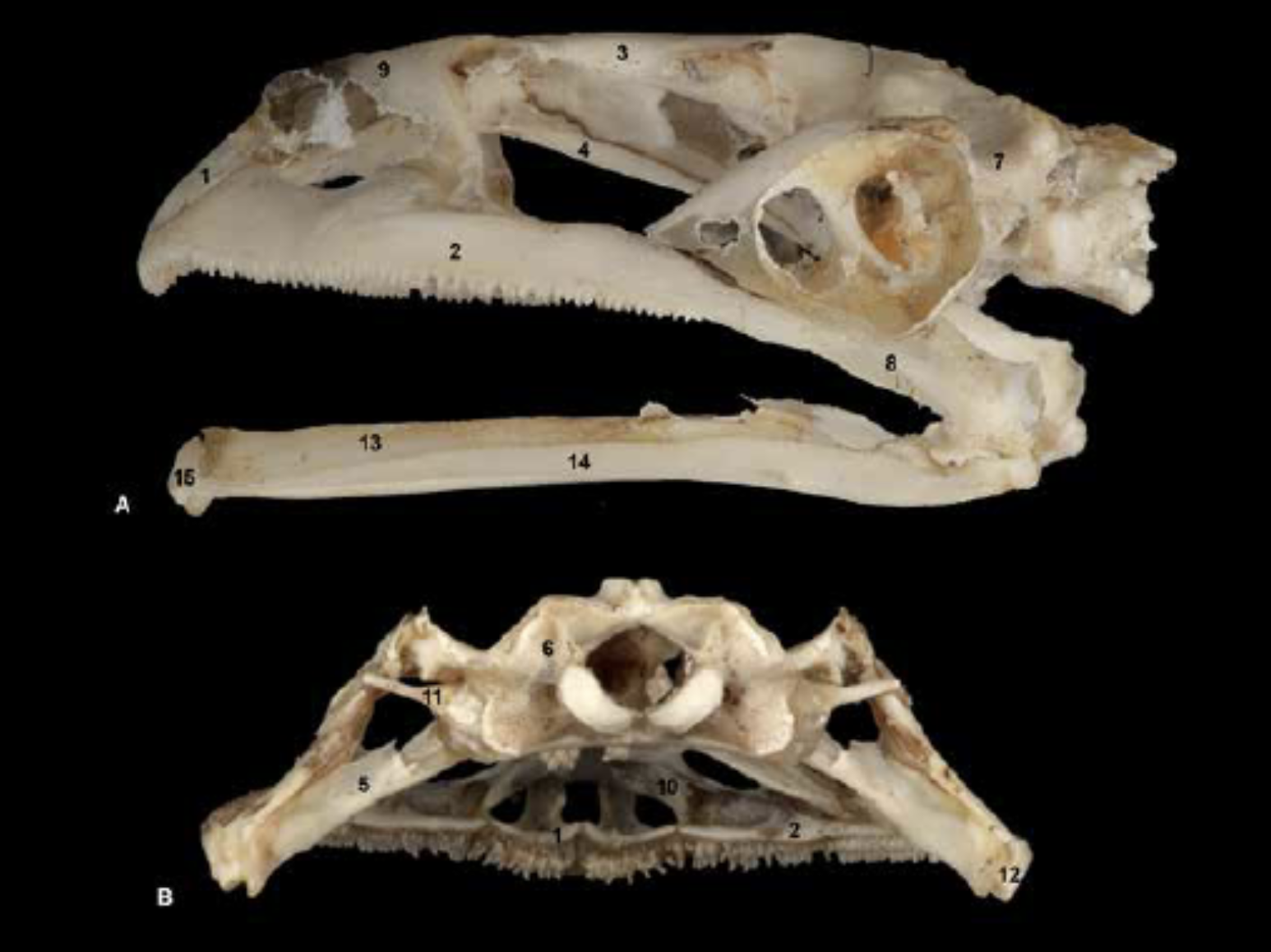
Name the element (15)
Angulo-splenial
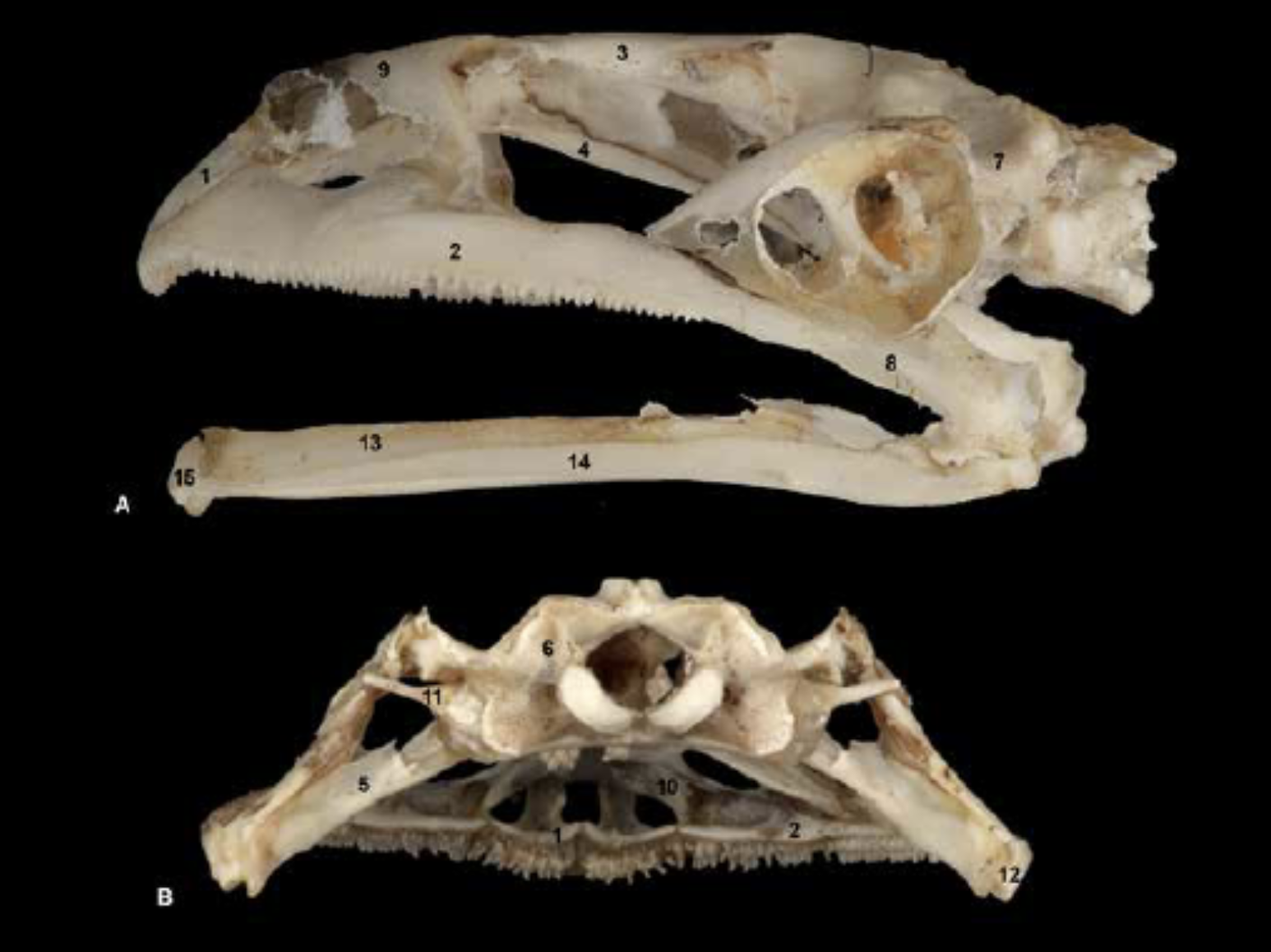
Name the element (15)
Mento-mekalian

Name the element (1)
Vertebra
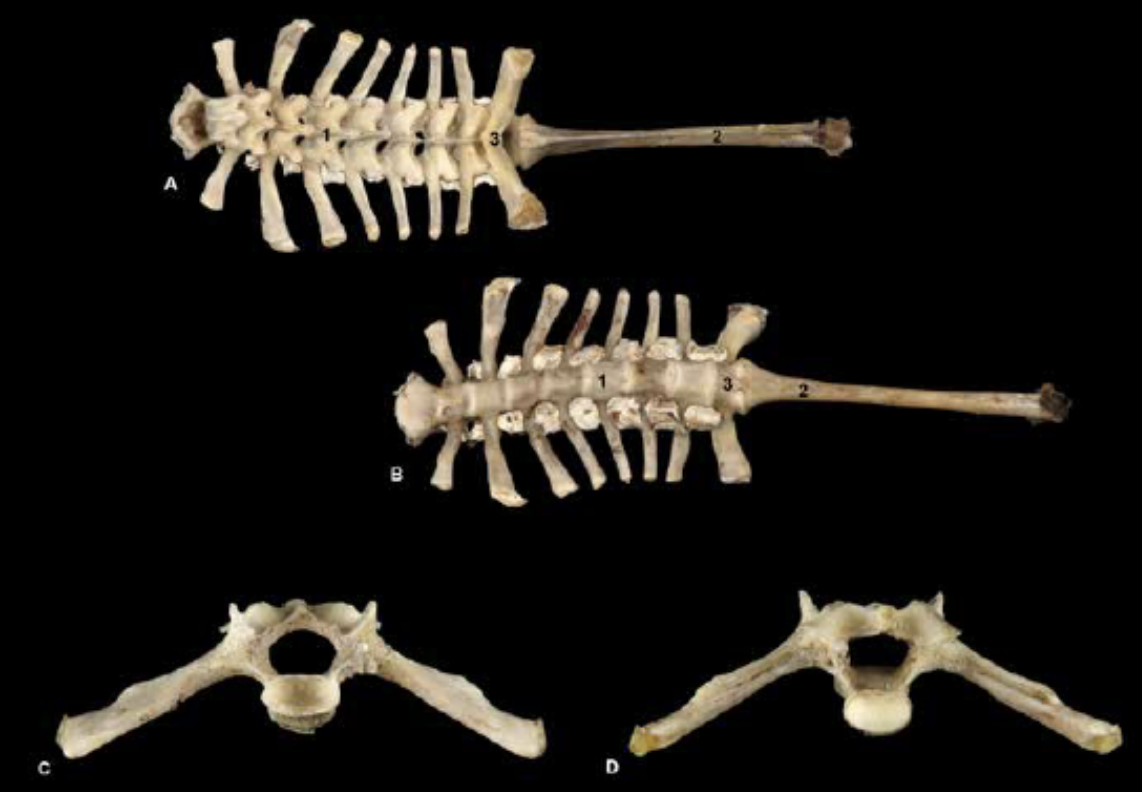
Name the element (2)
Urostyle
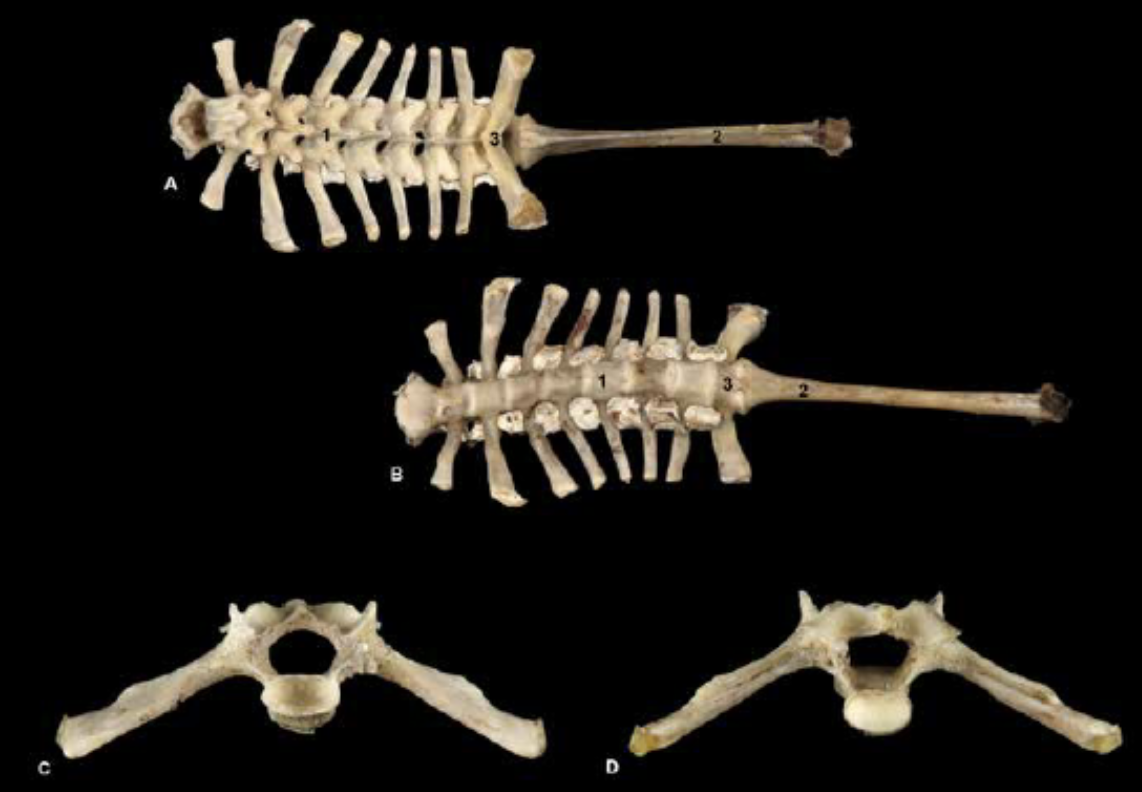
Name the element (3)
Sacrum
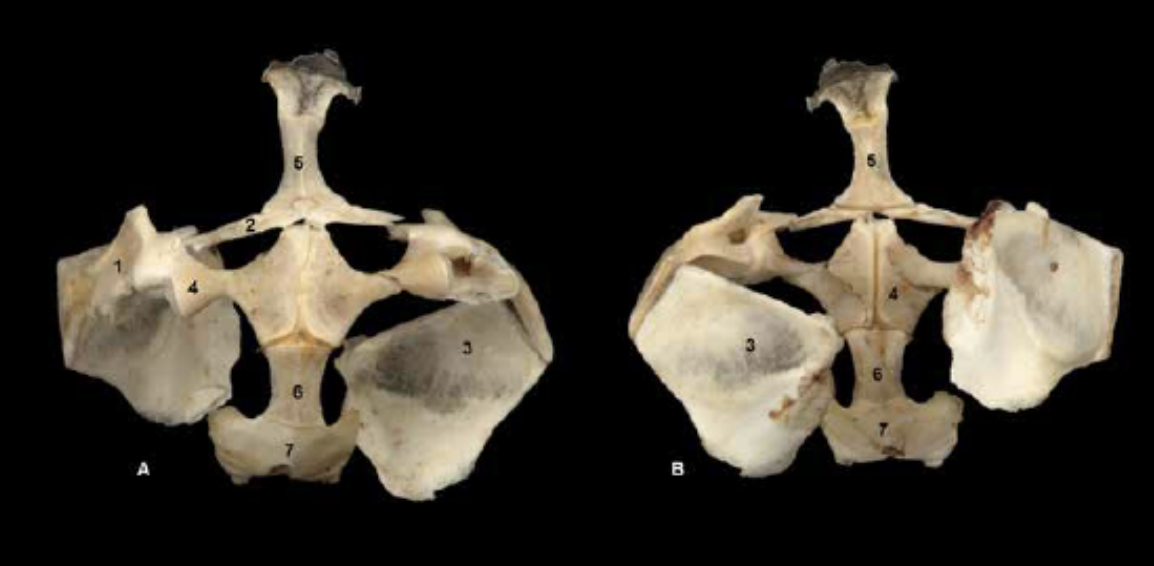
Name the element (1)
Scapula
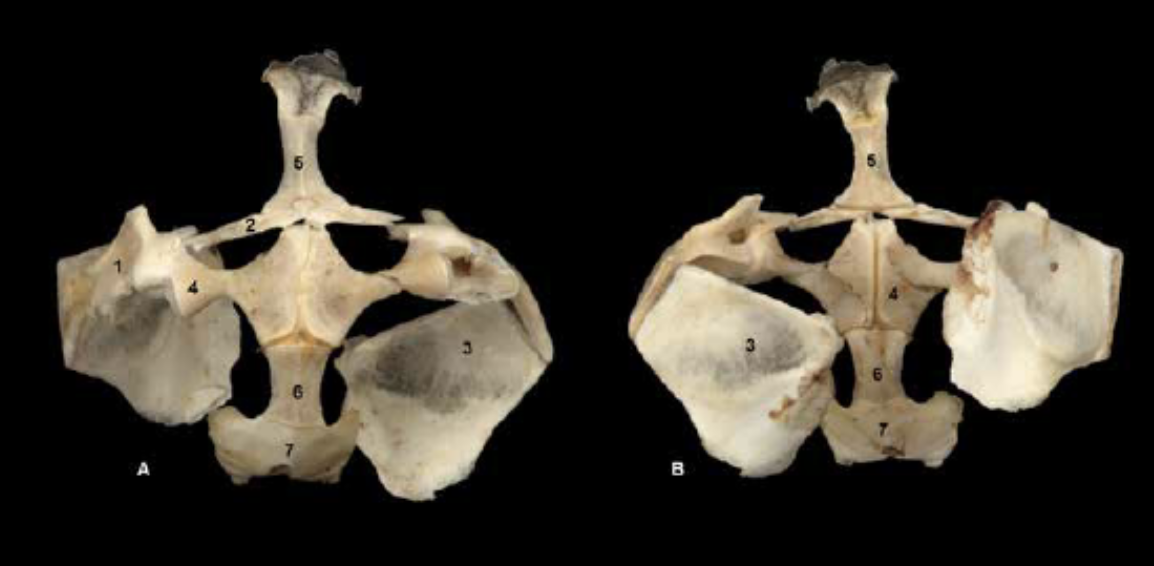
Name the element (2)
Clavicle
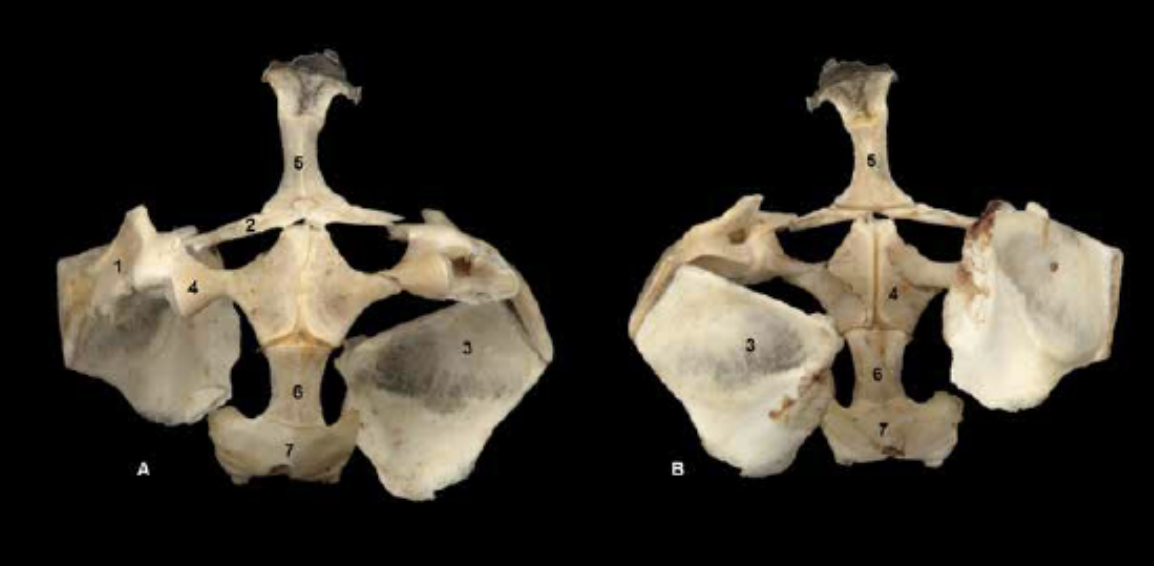
Name the element (3)
Suprascapula
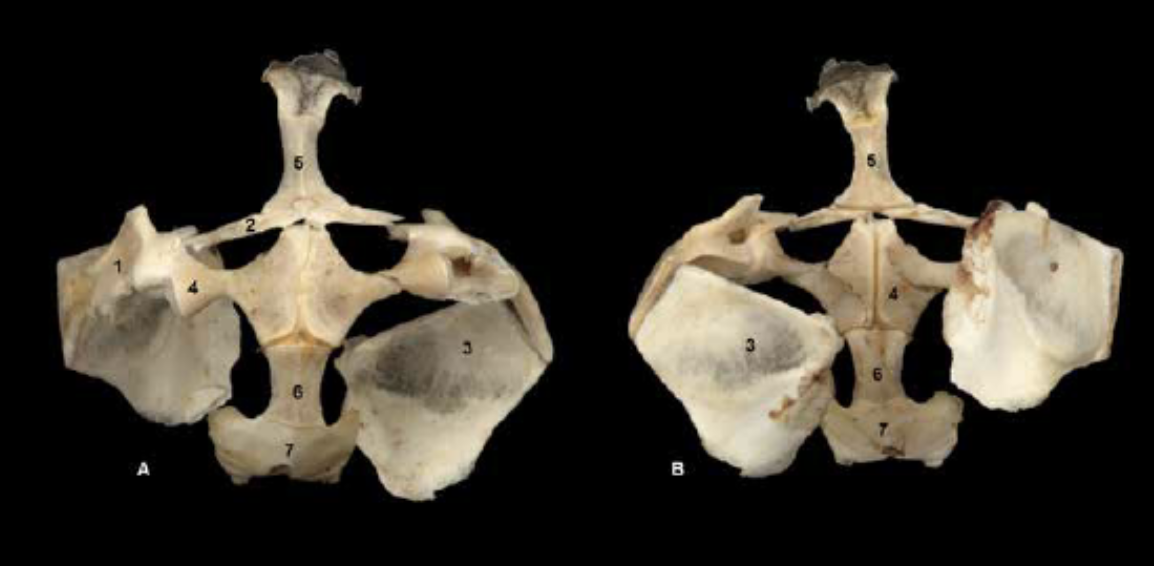
Name the element (4)
Coracoid
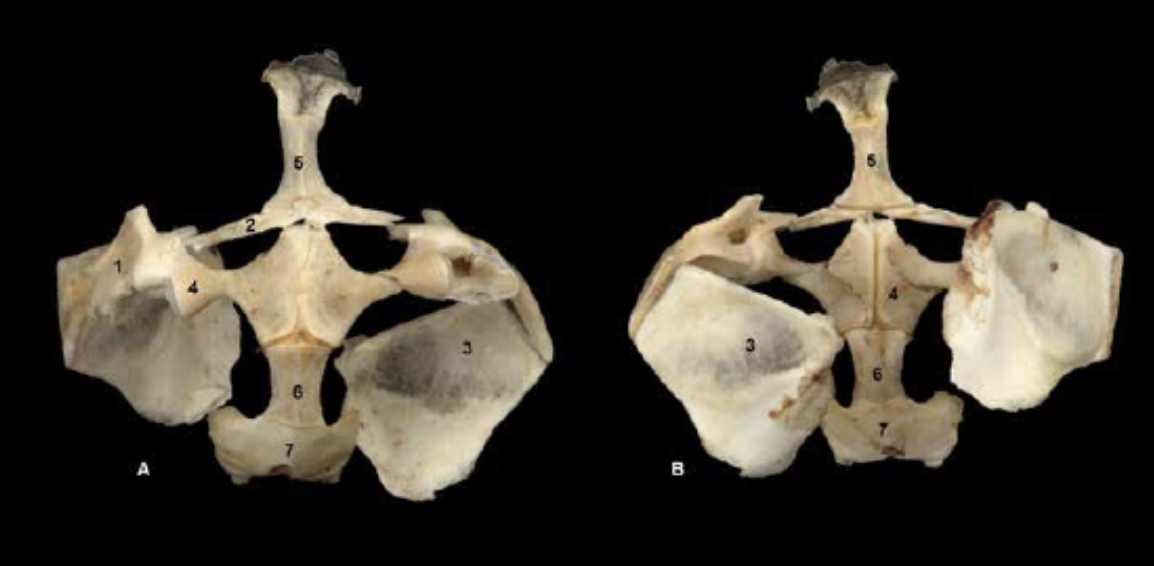
Name the element (5)
Omosternum
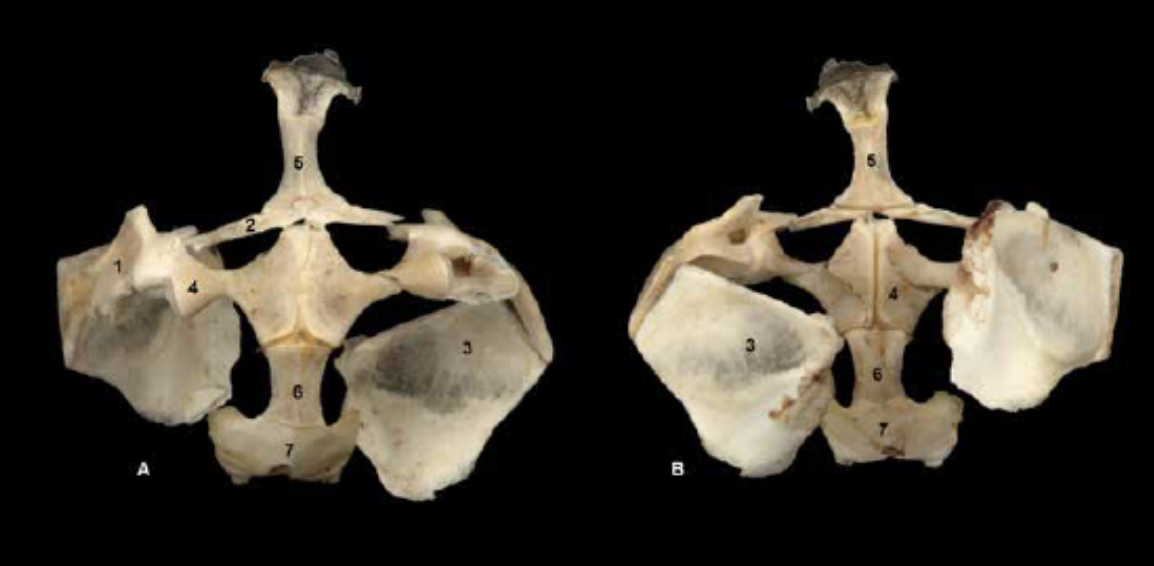
Name the element (6)
Sternum
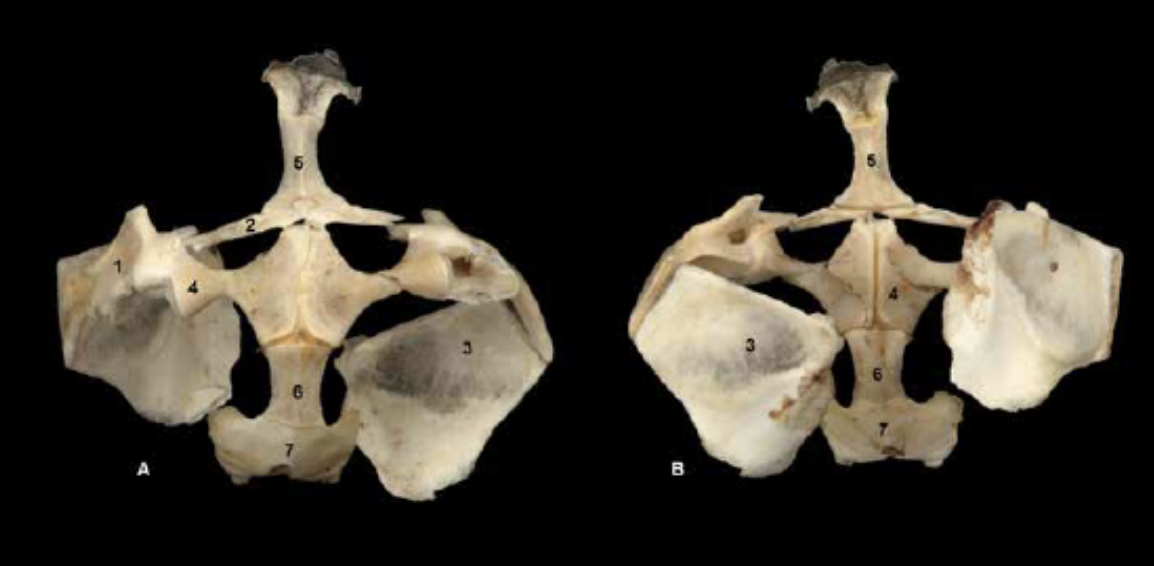
Name the element (7)
Xiphisternum
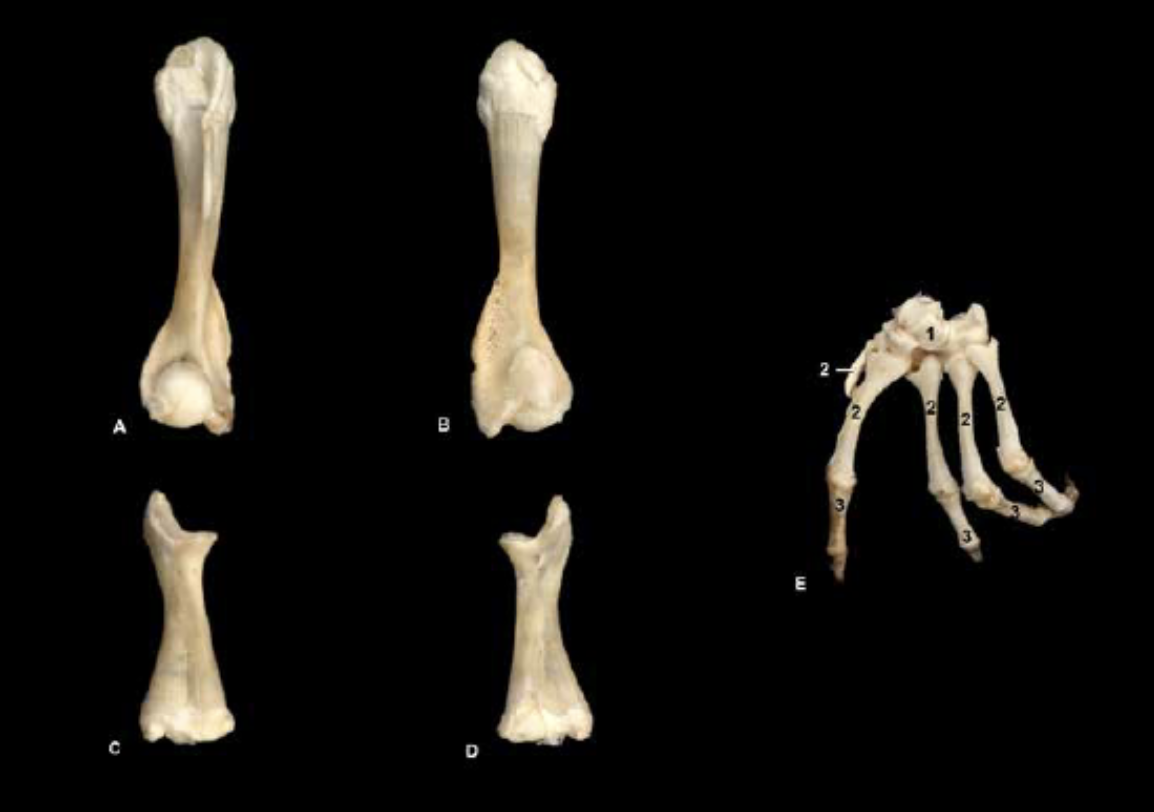
Name the element (A)
Humerus

Name the element (C)
Radio-ulna
Name the element (1)